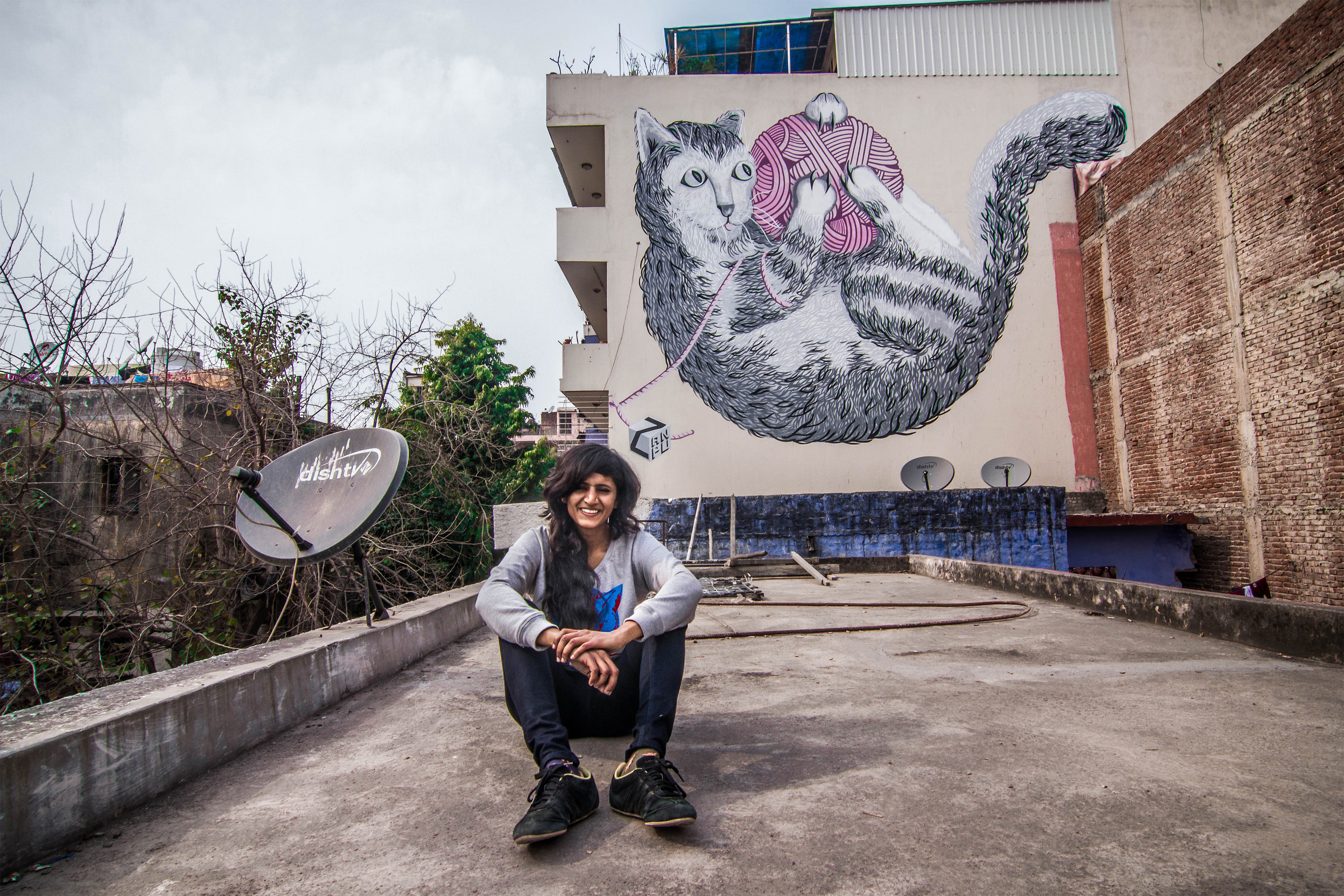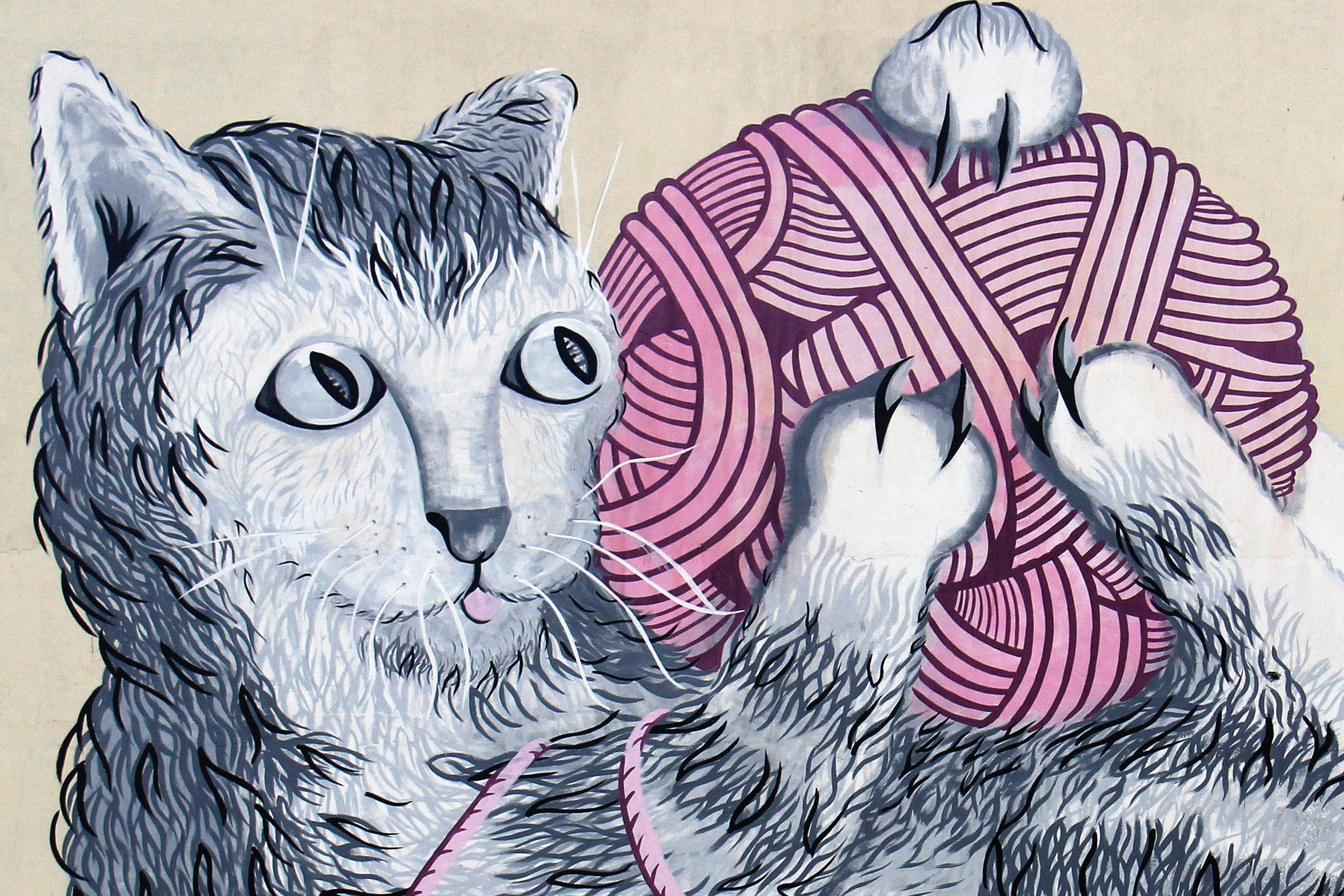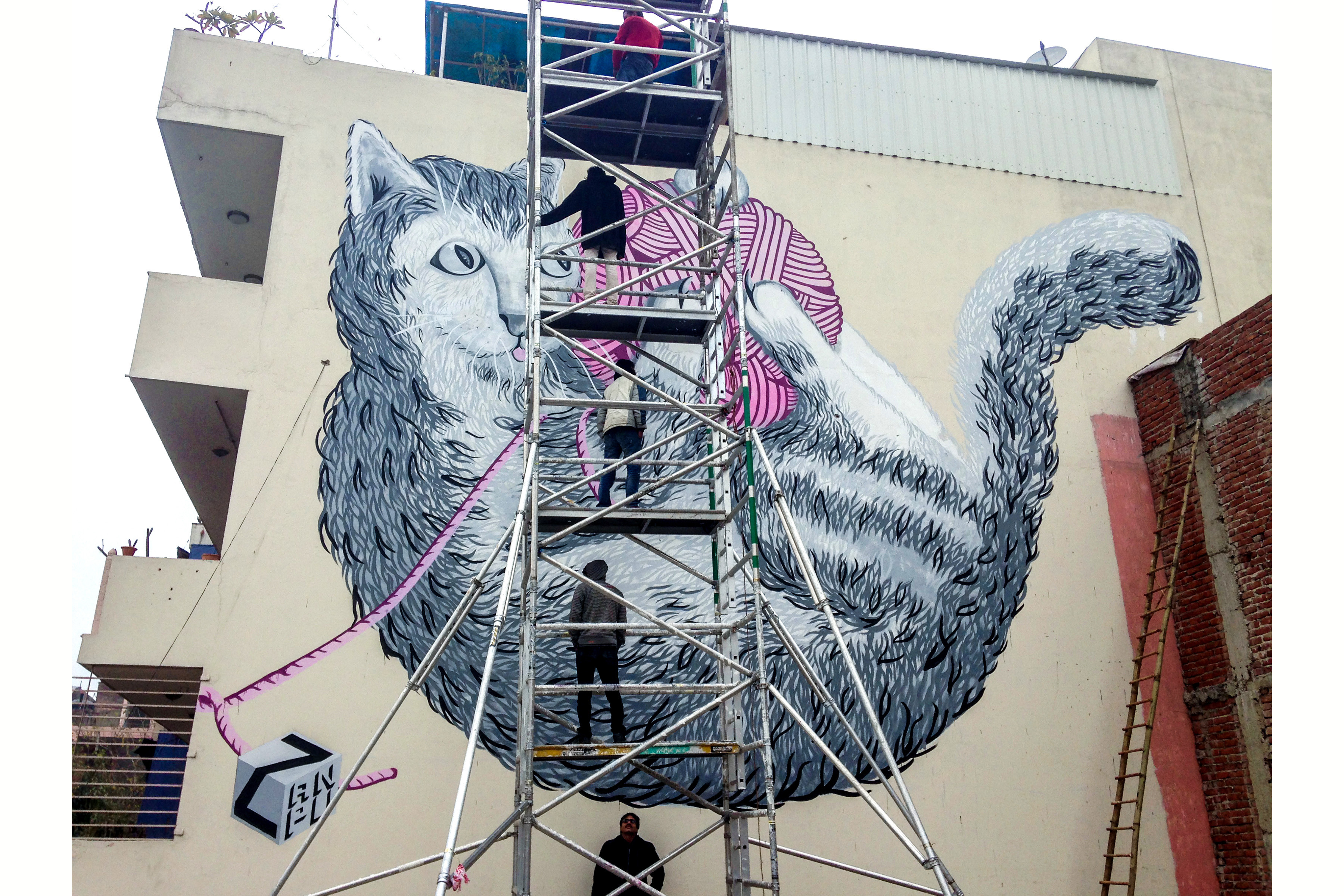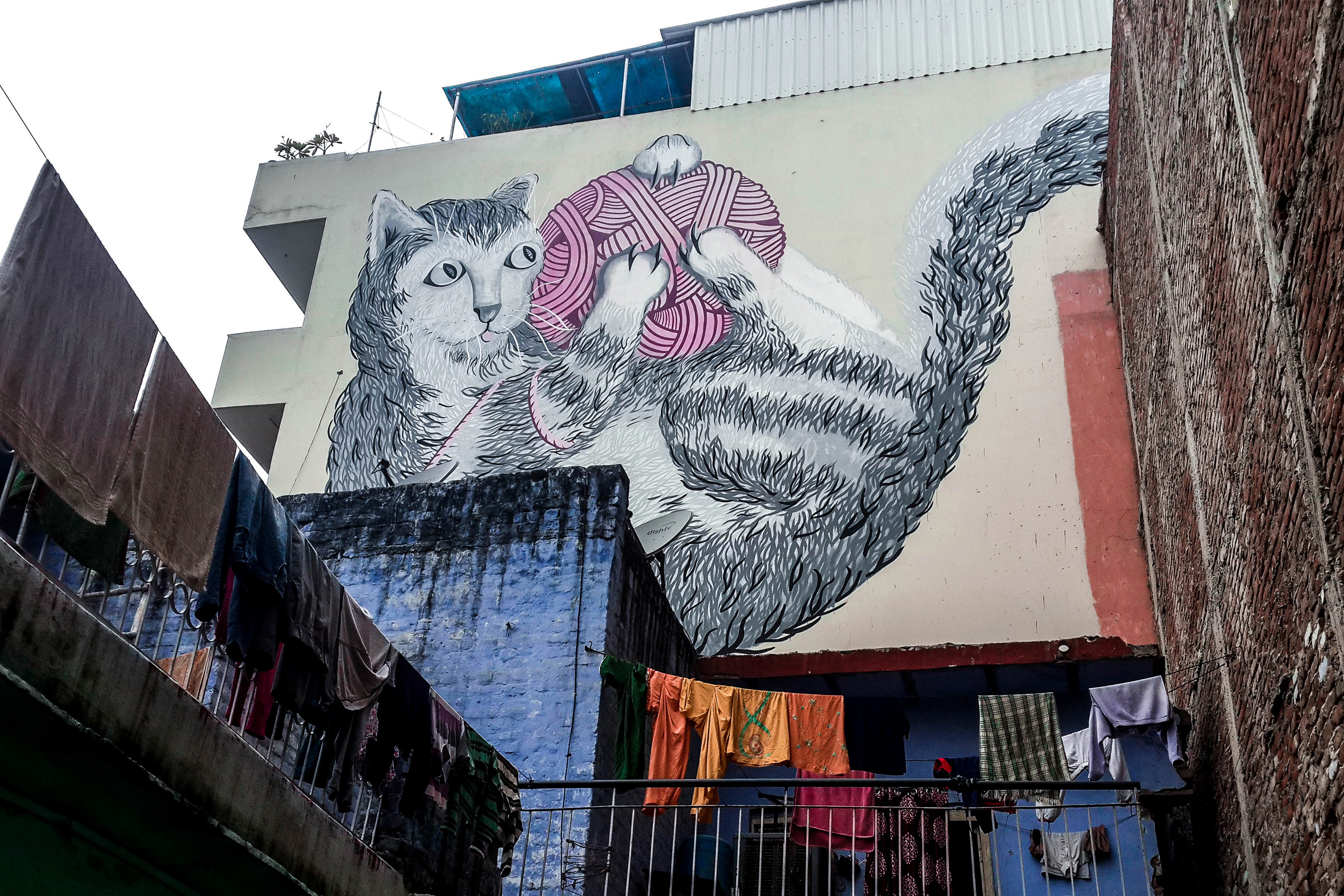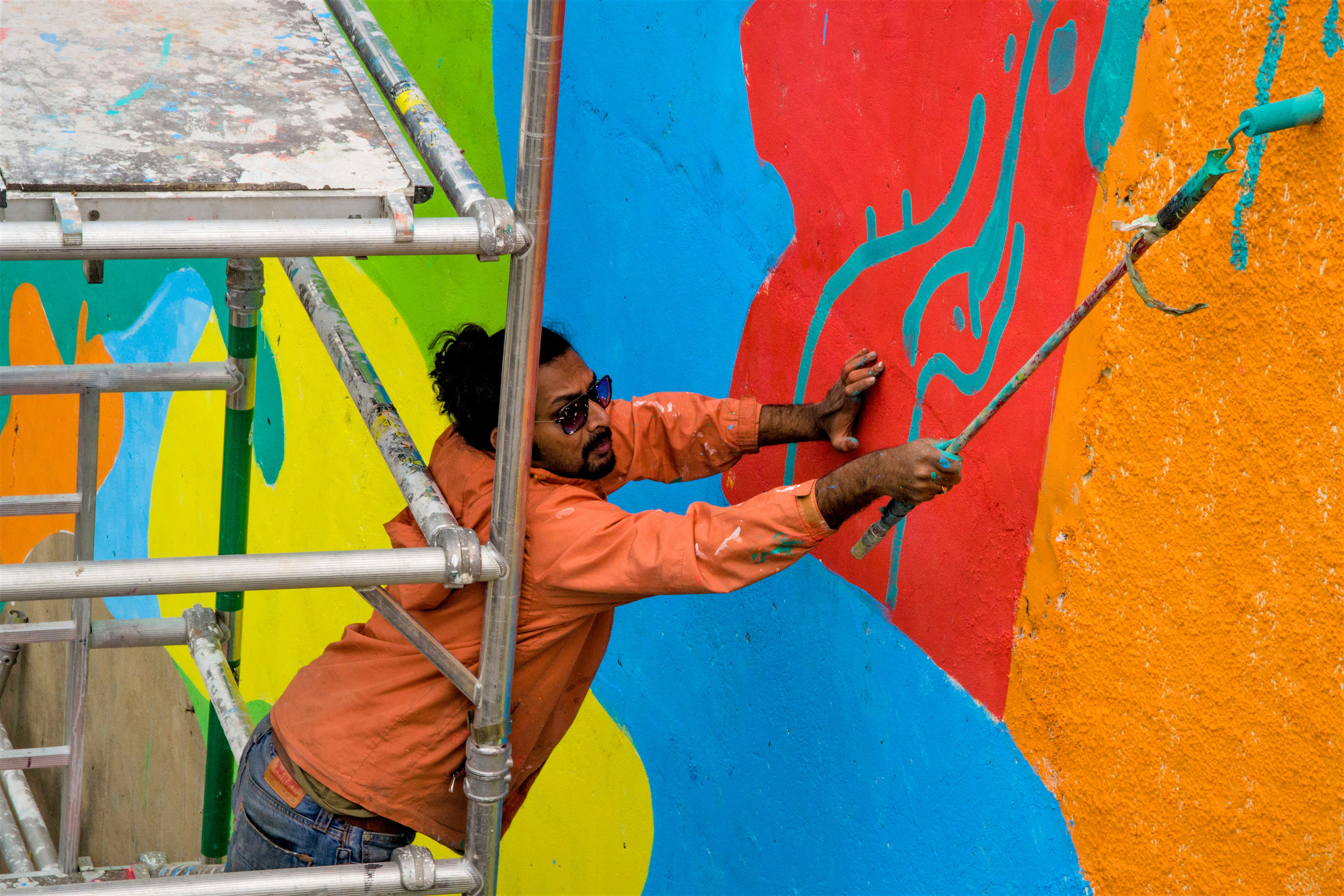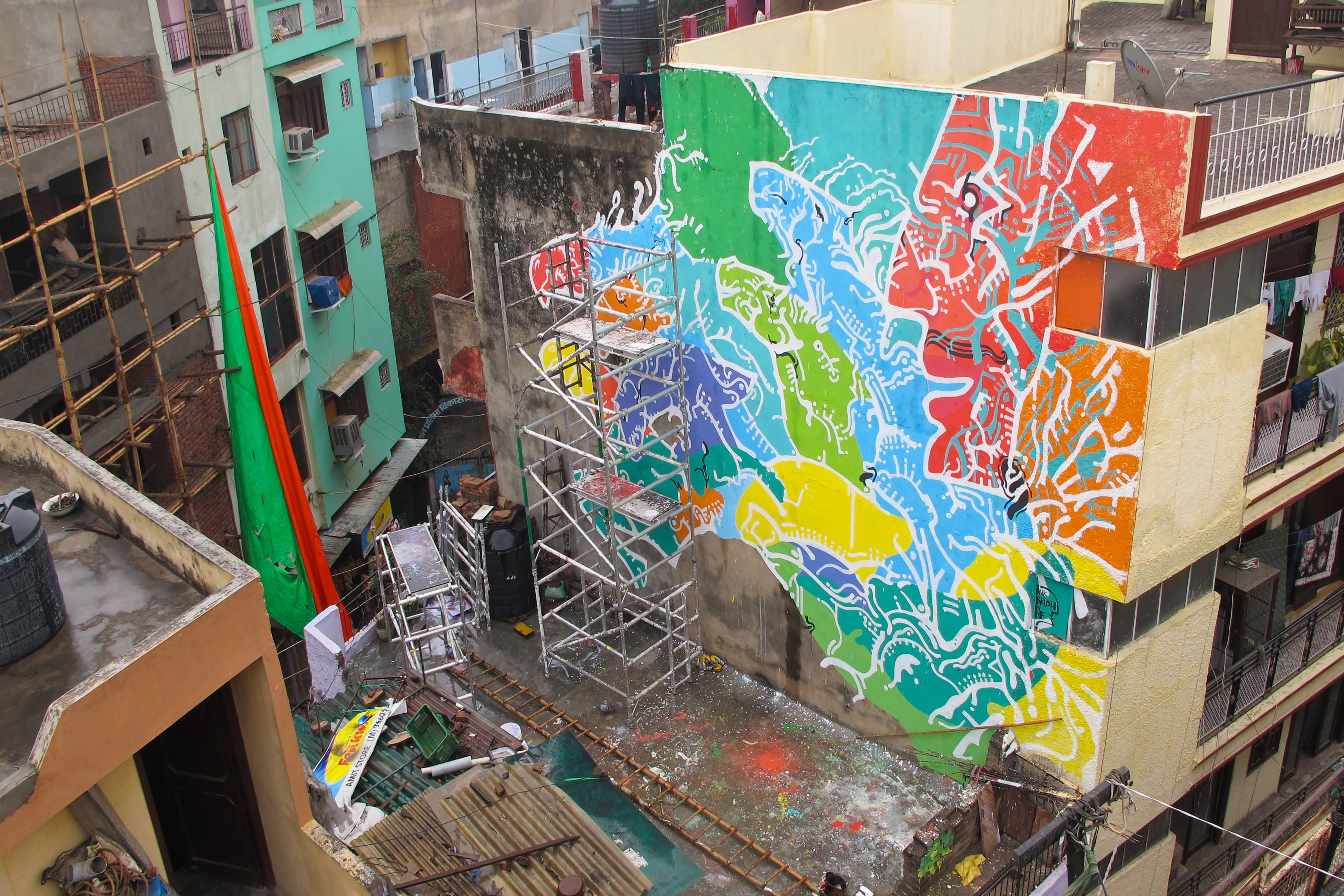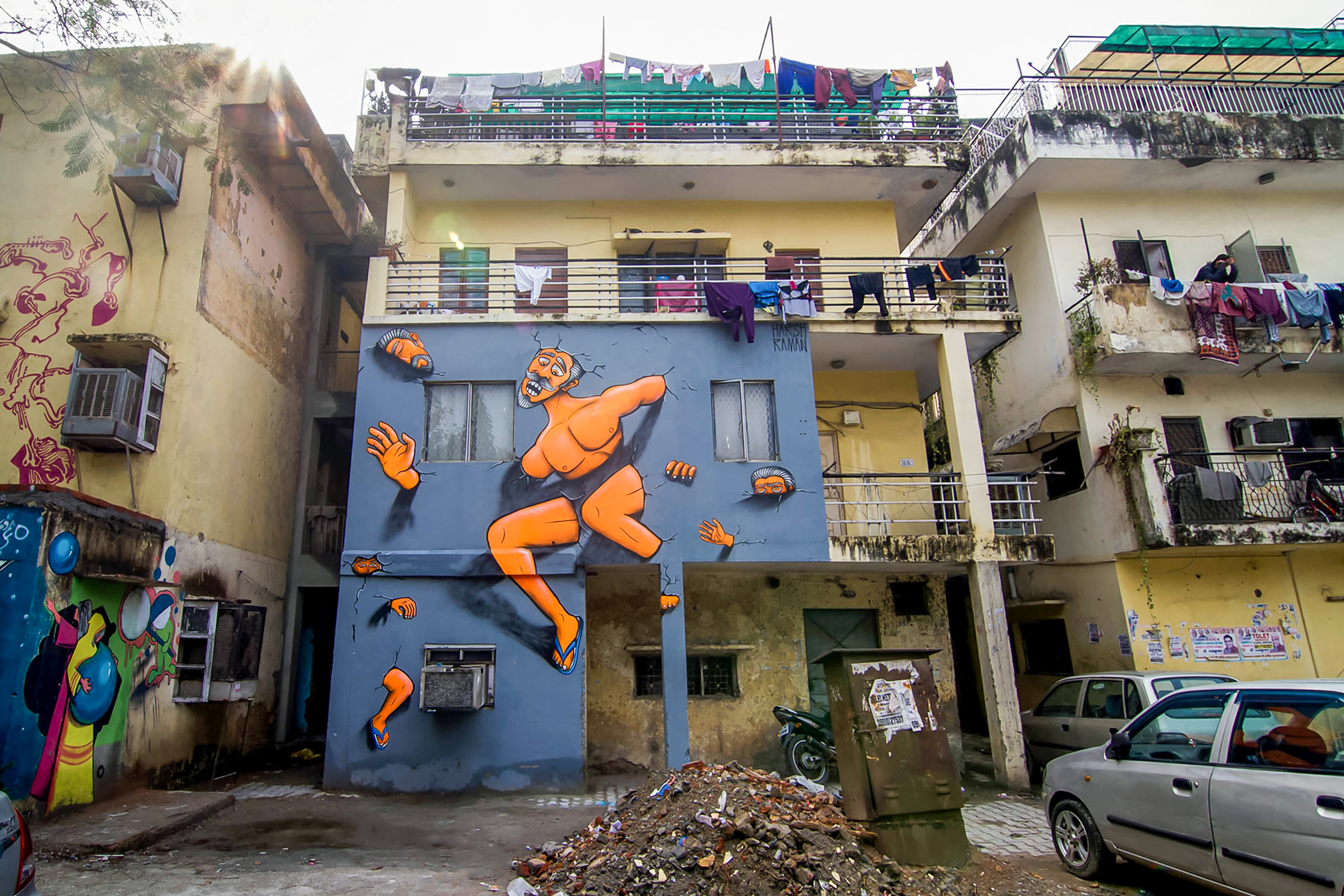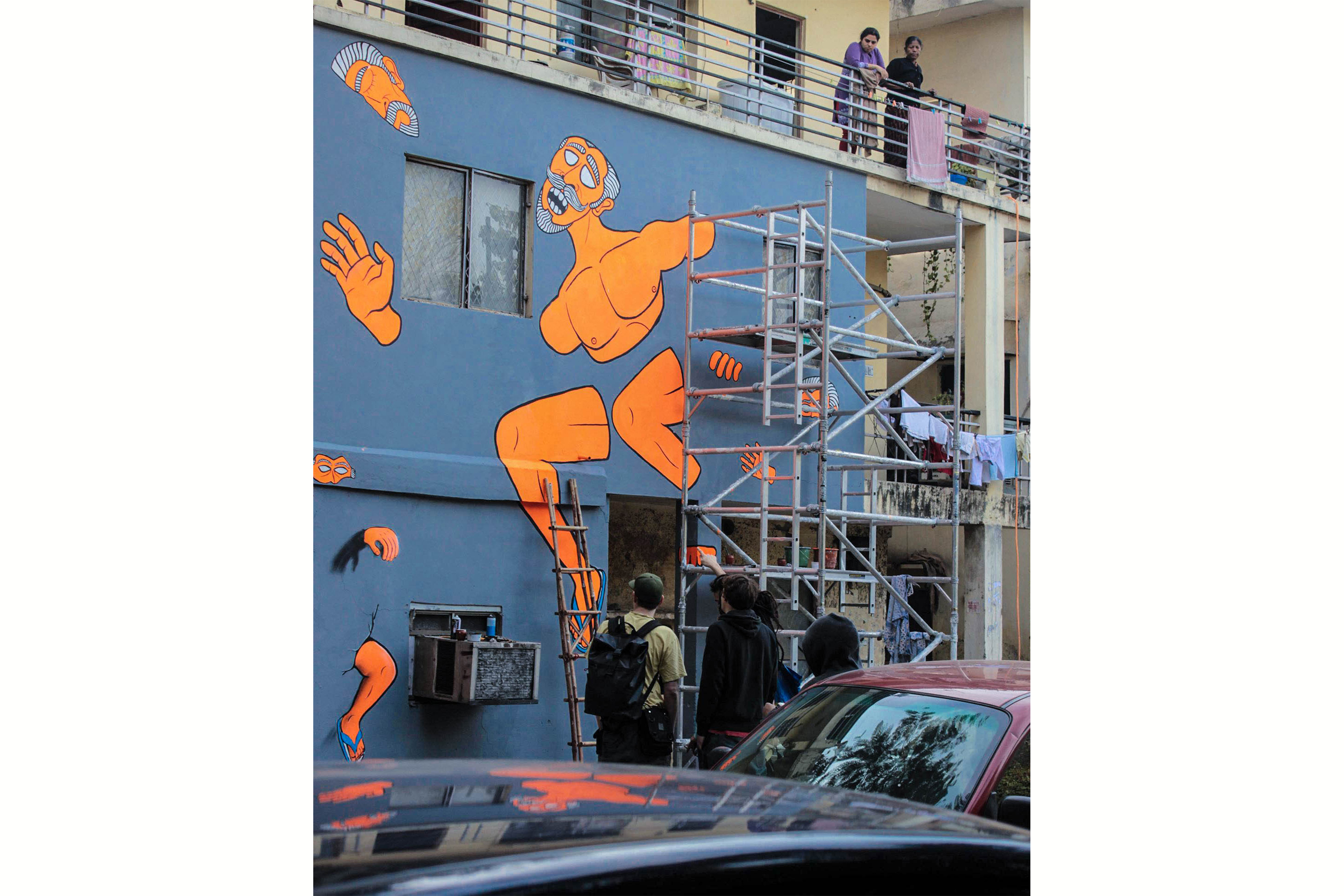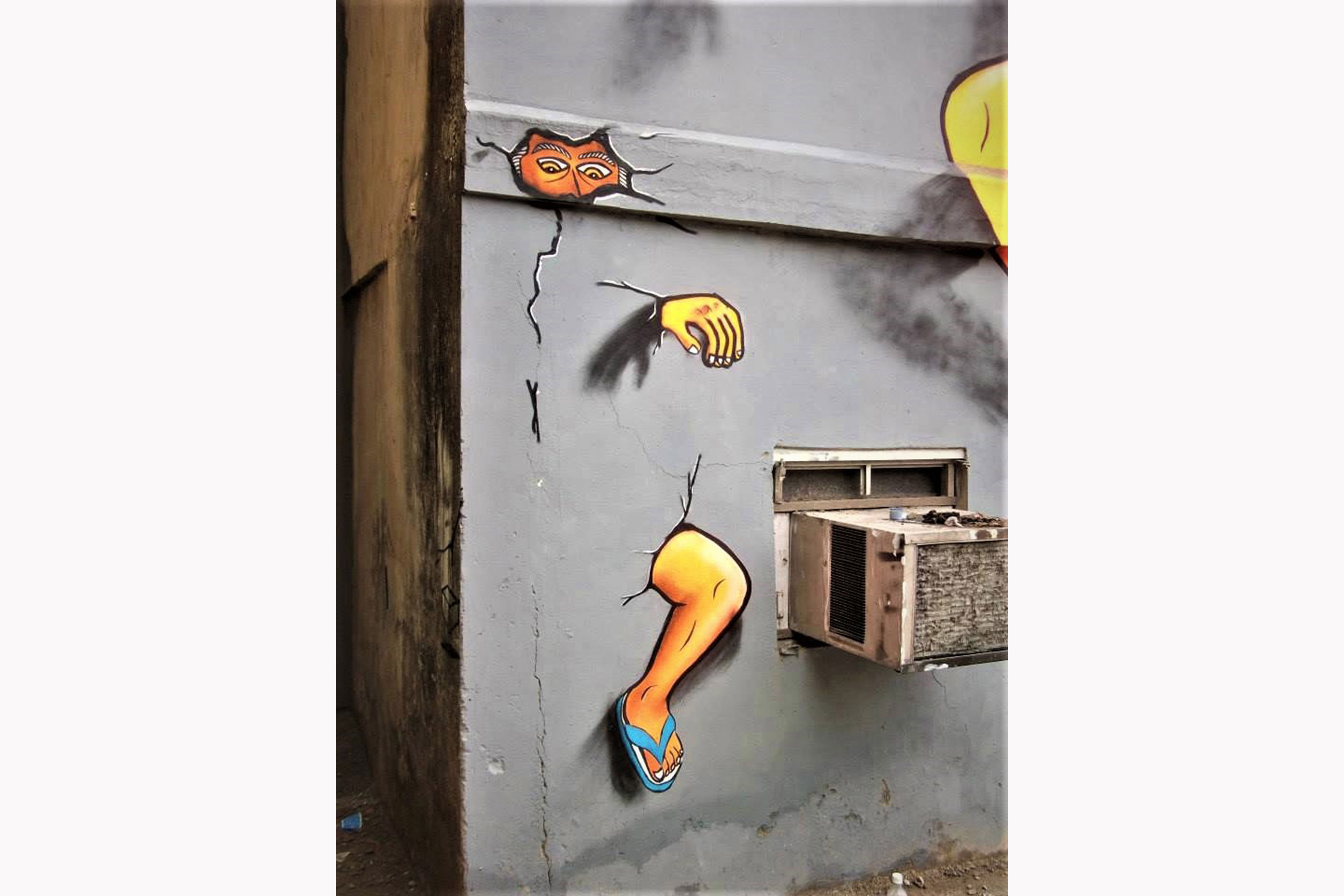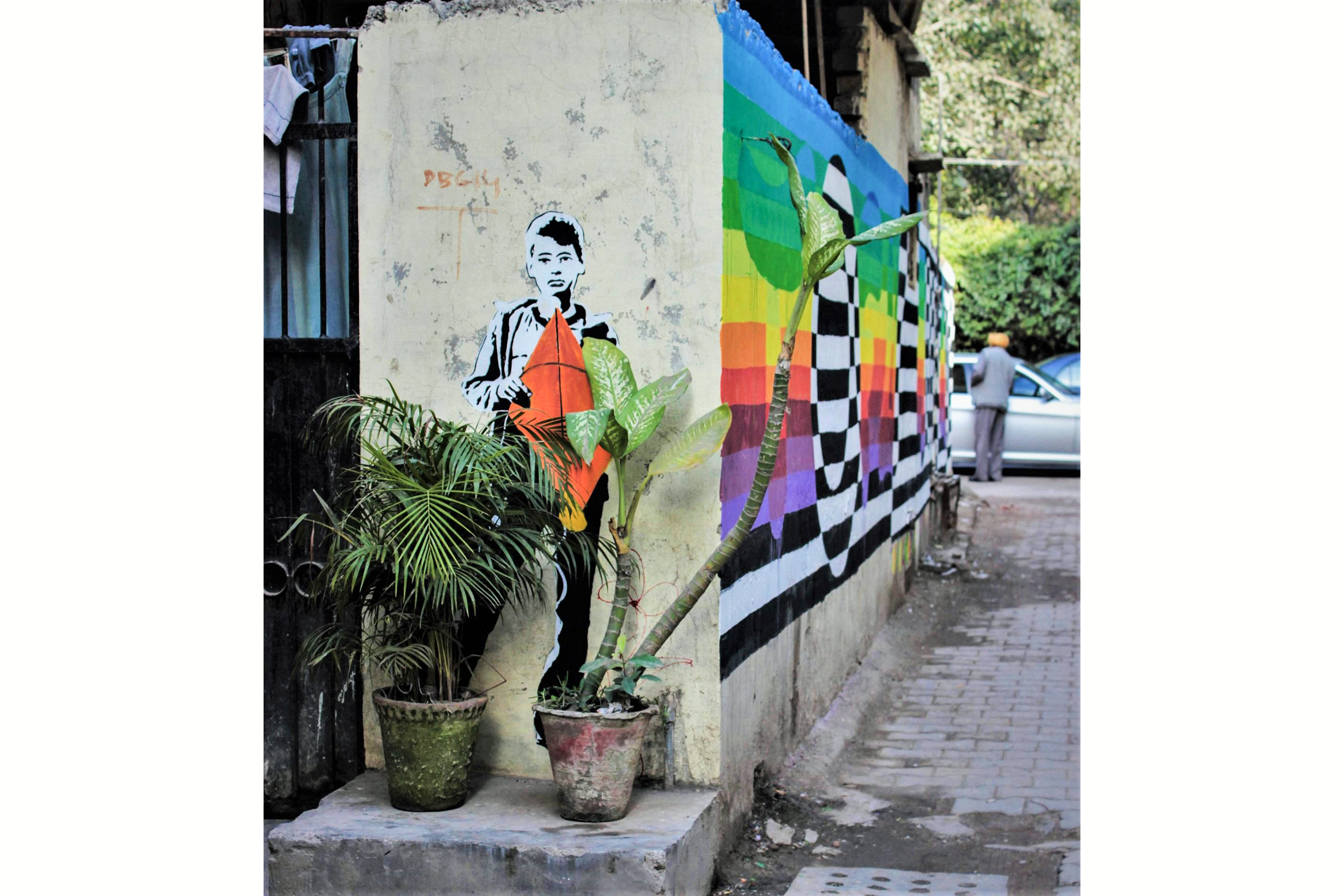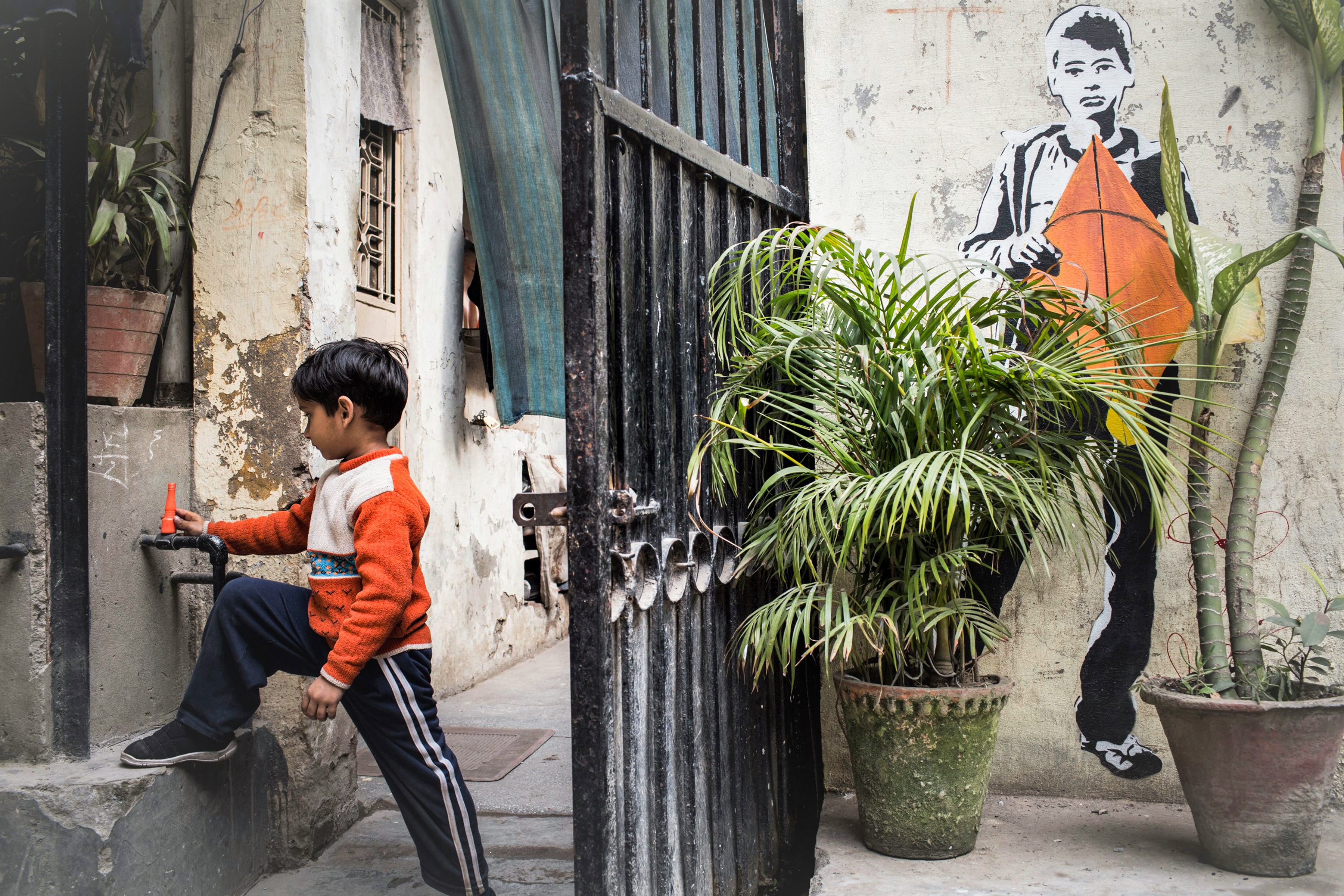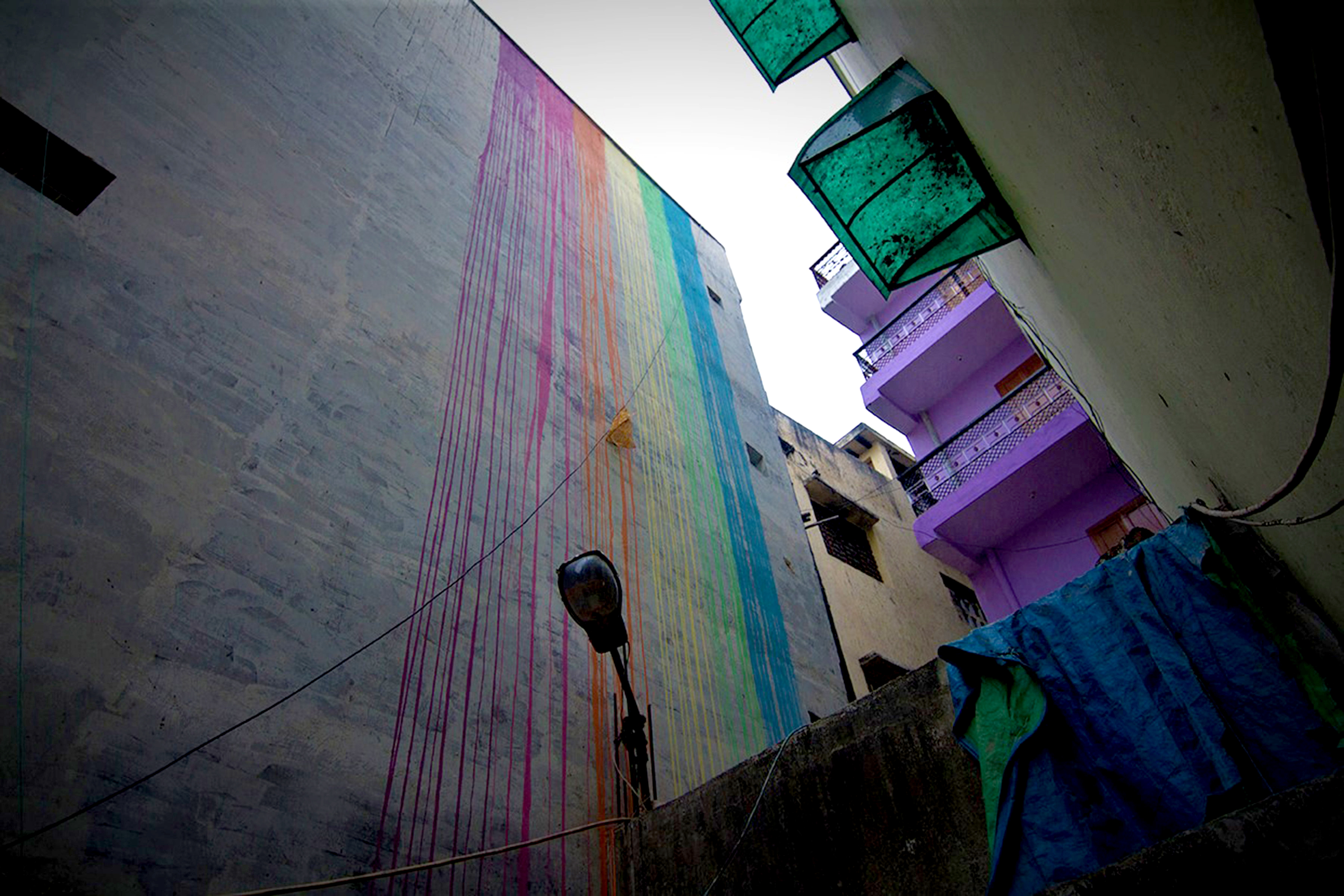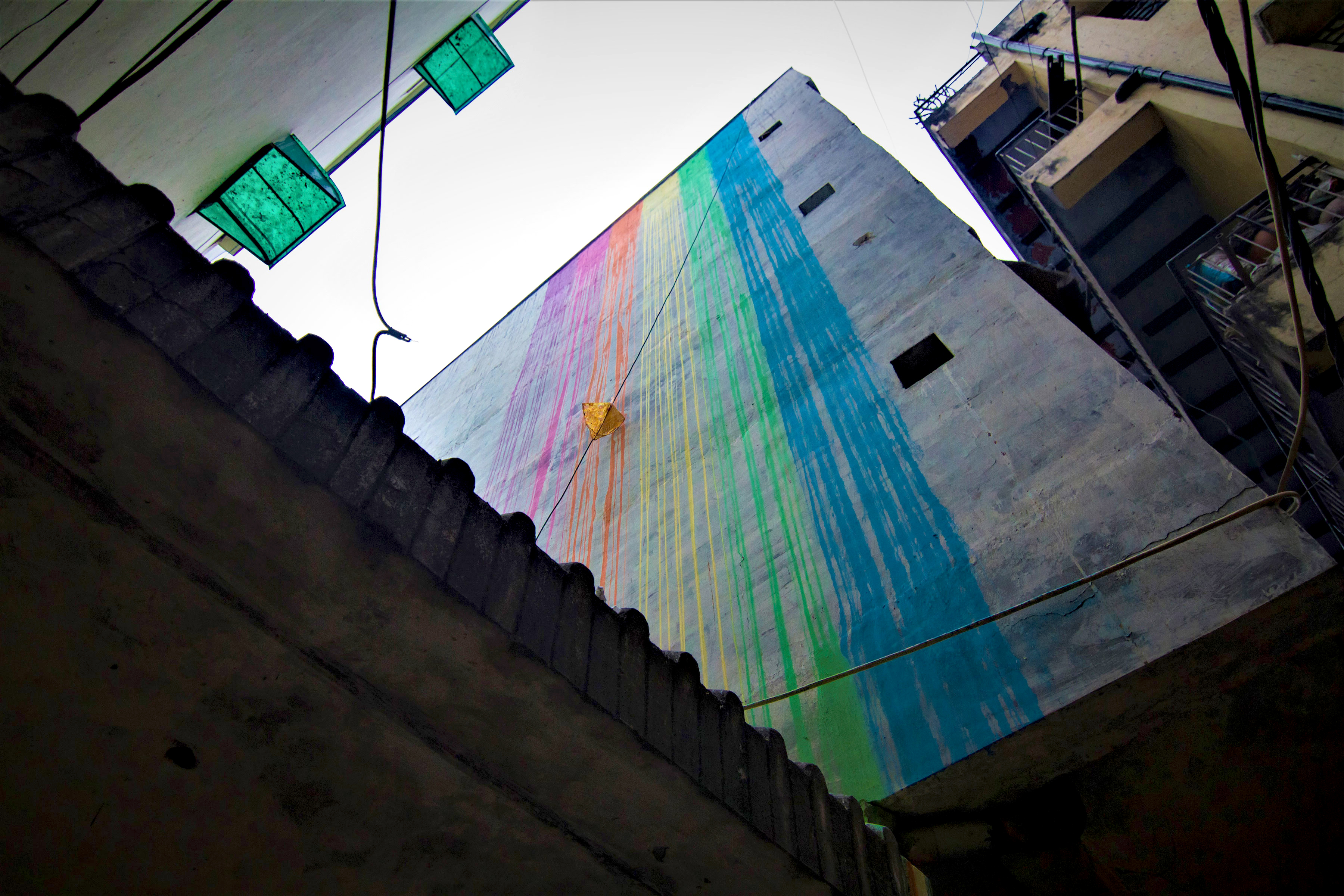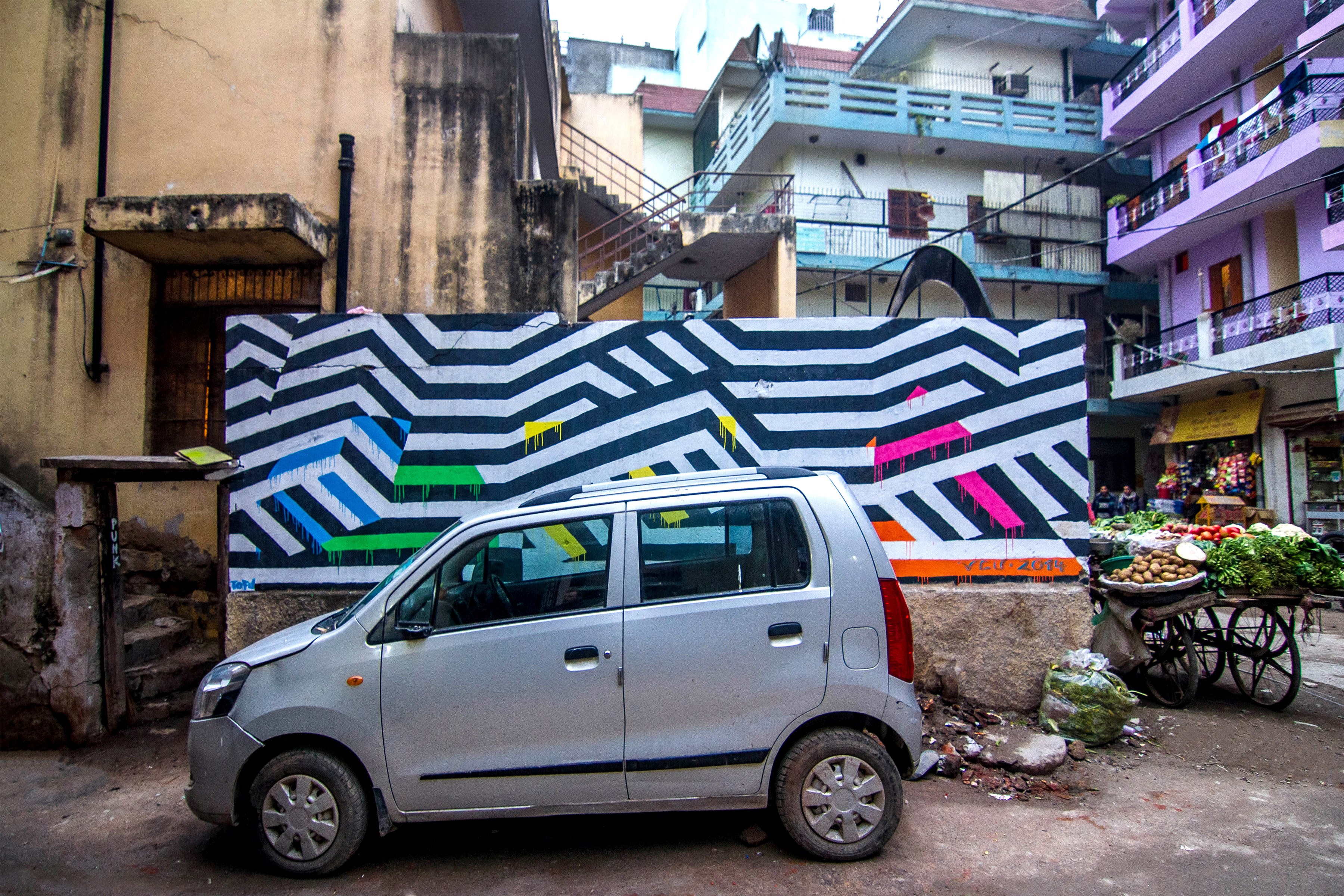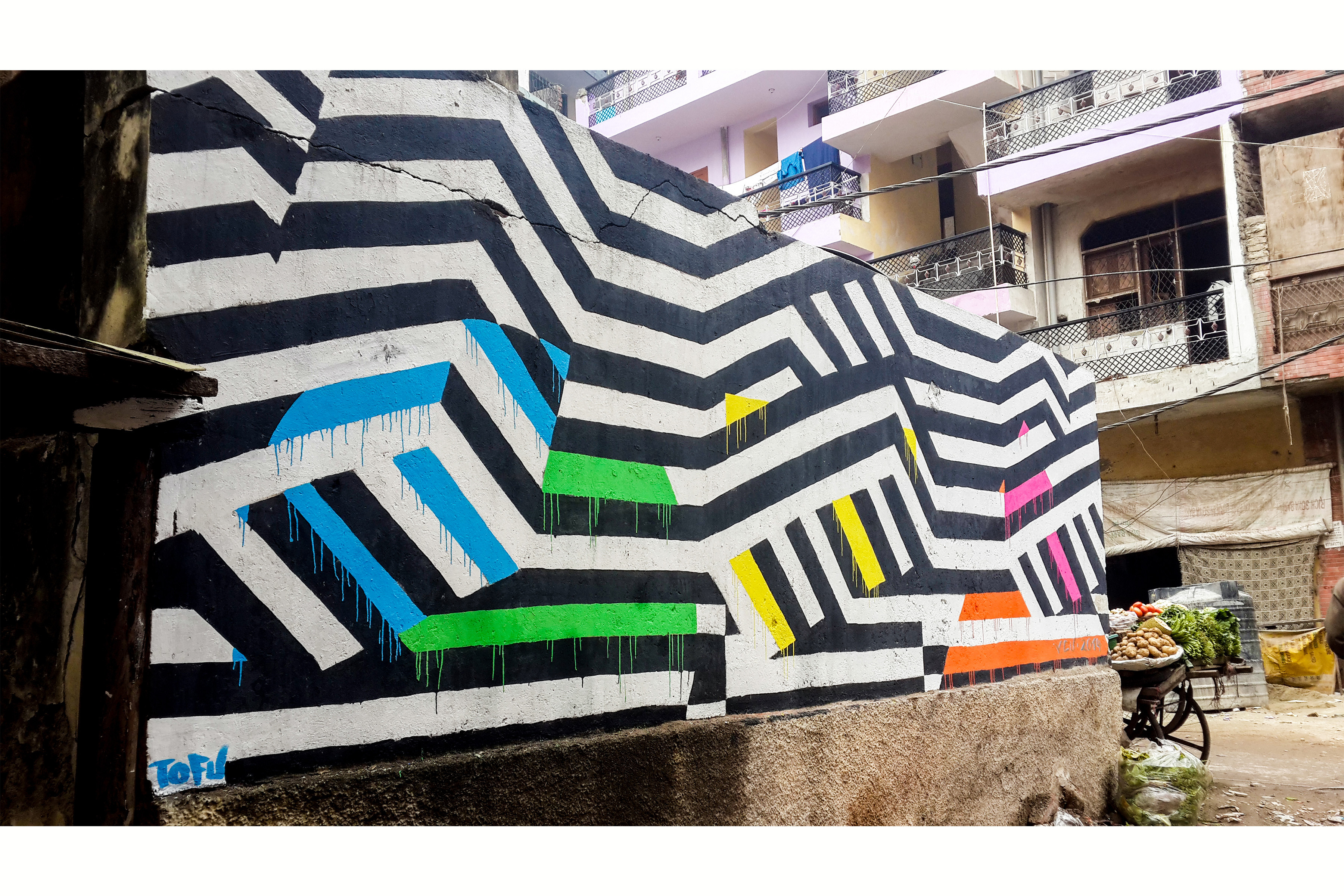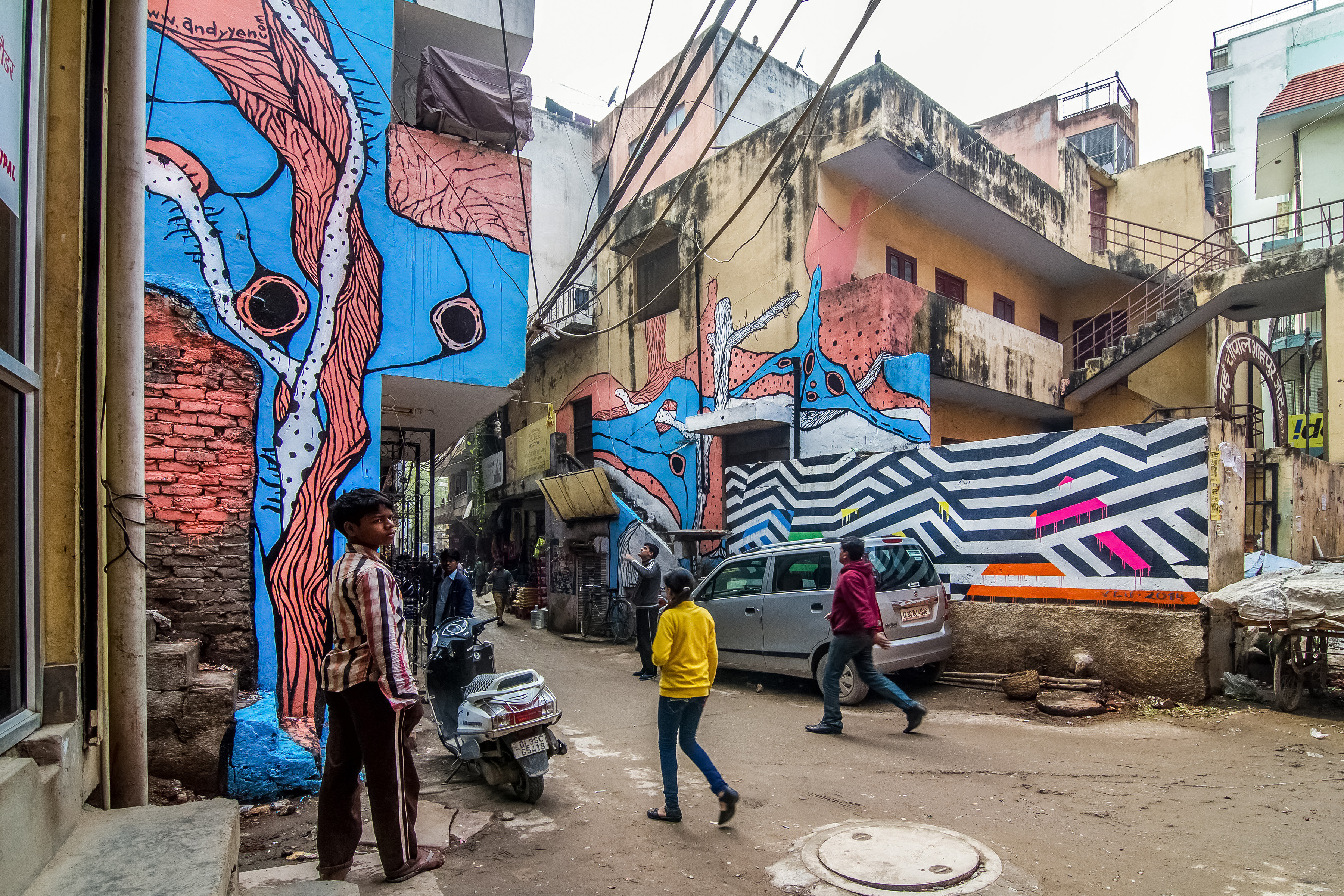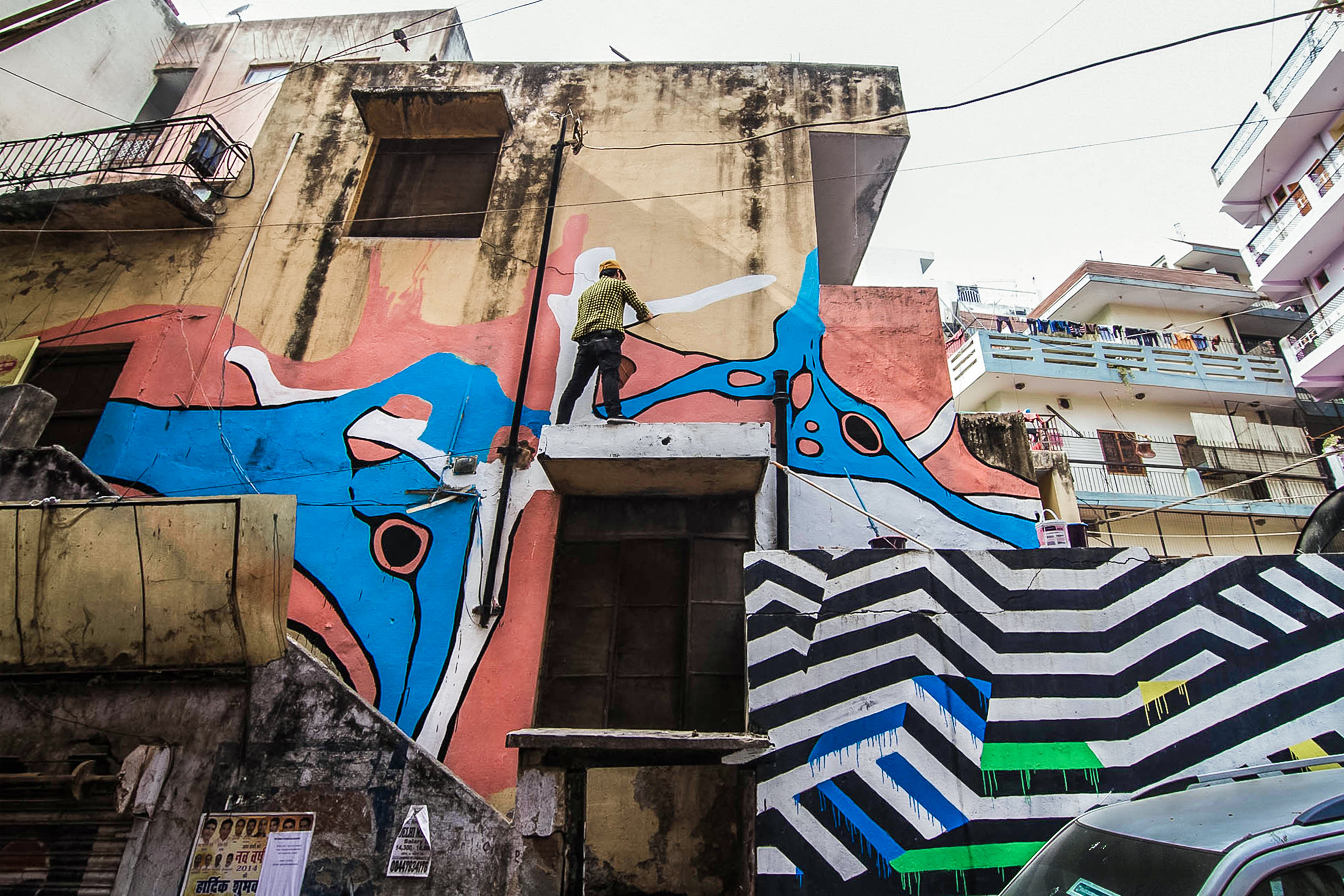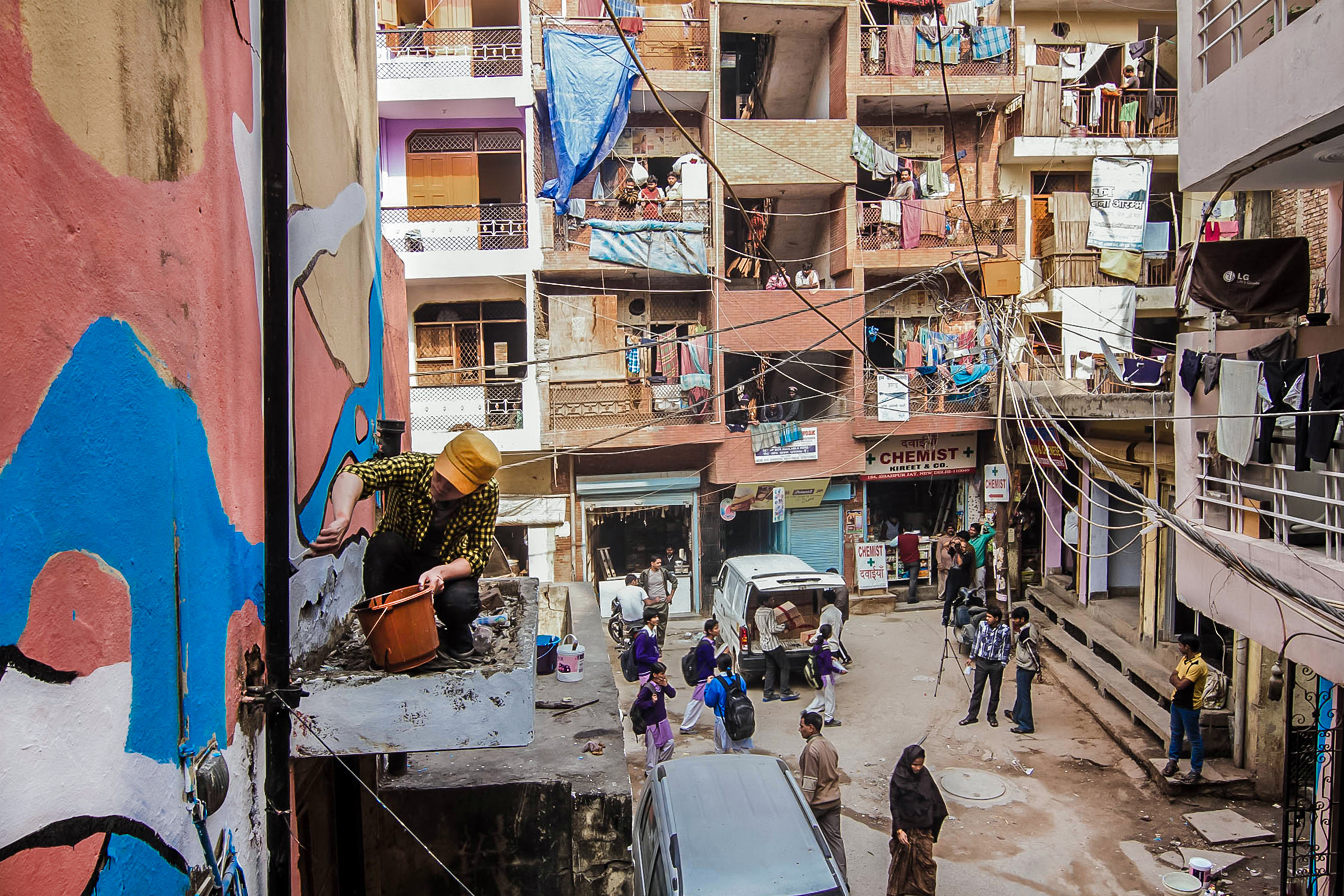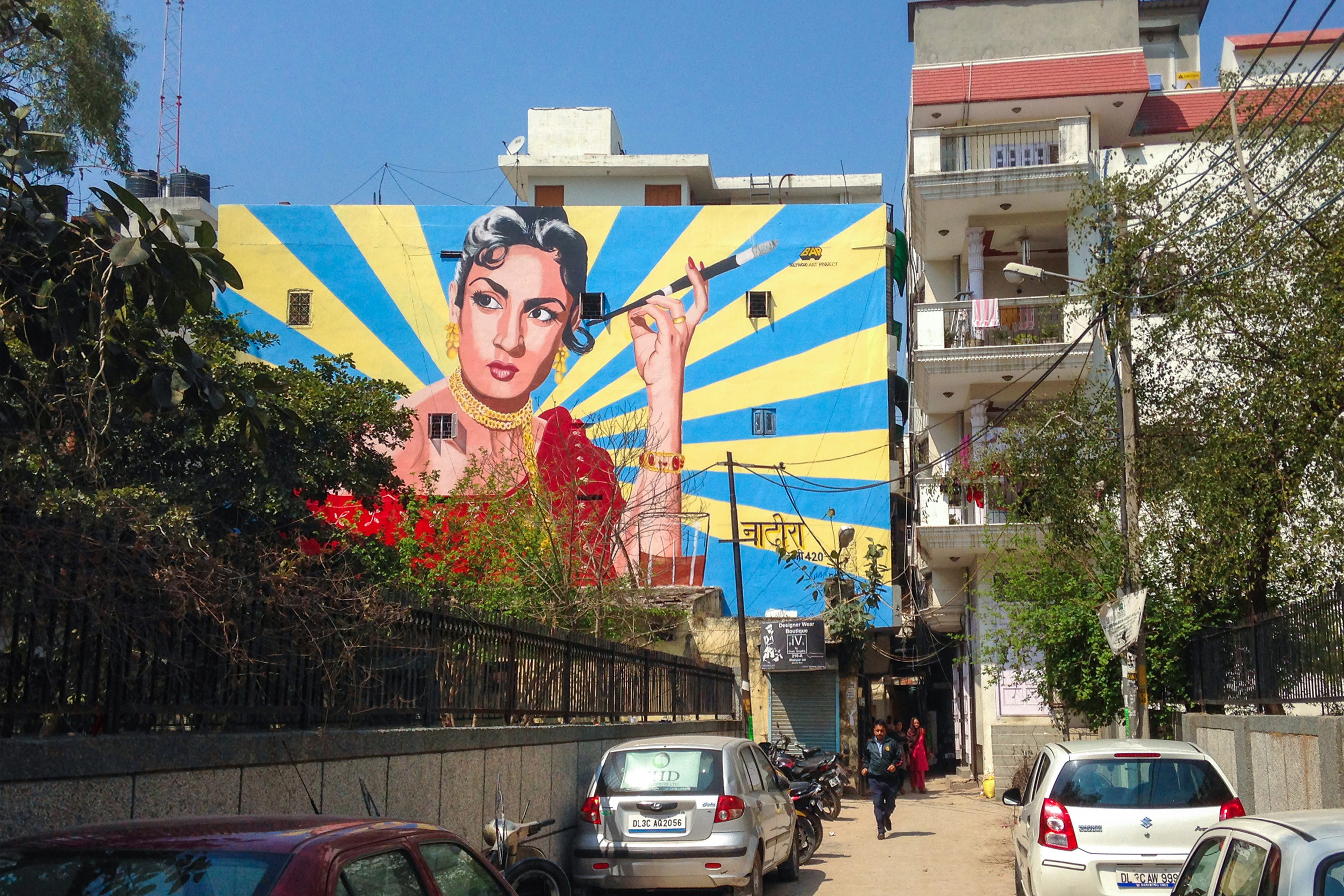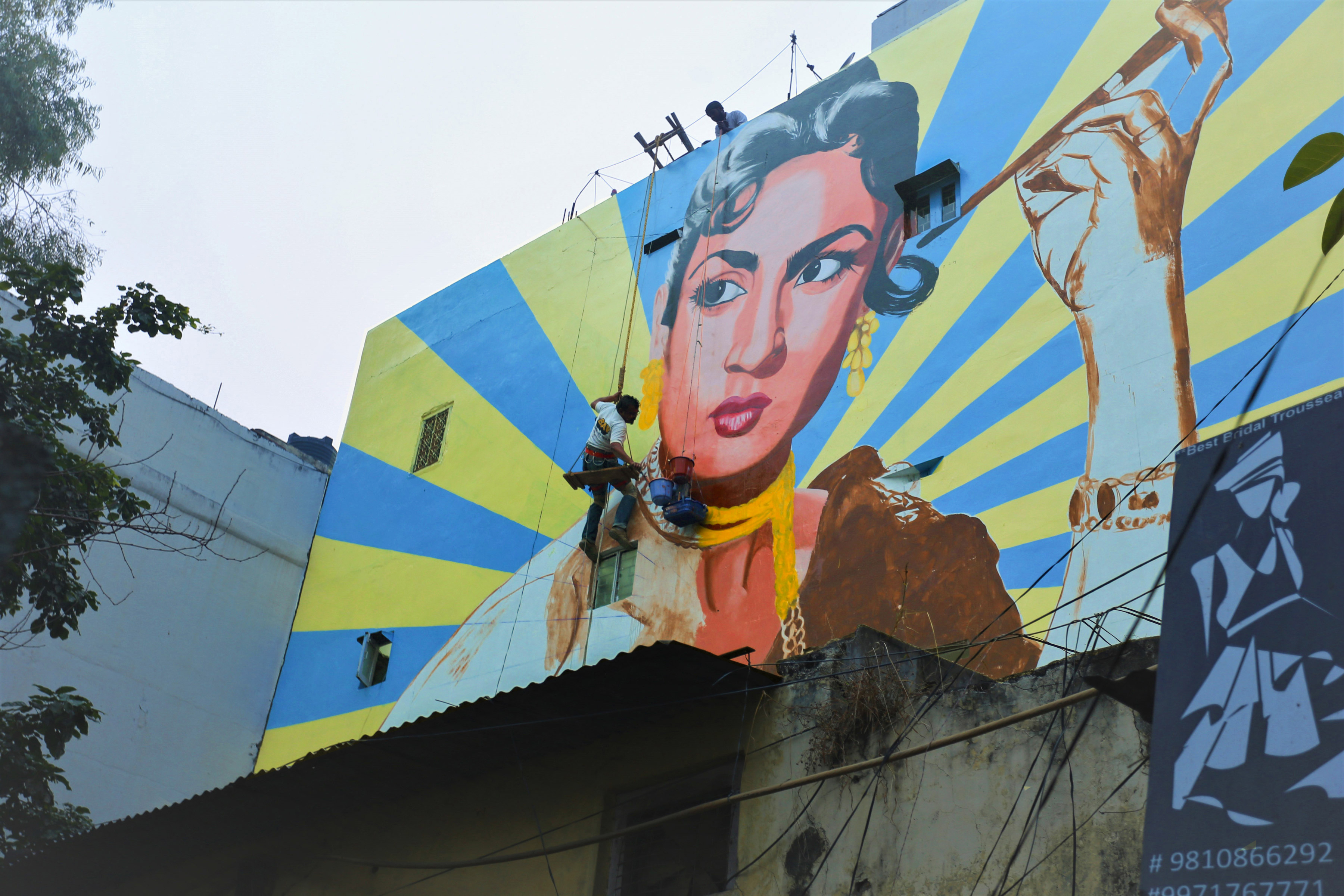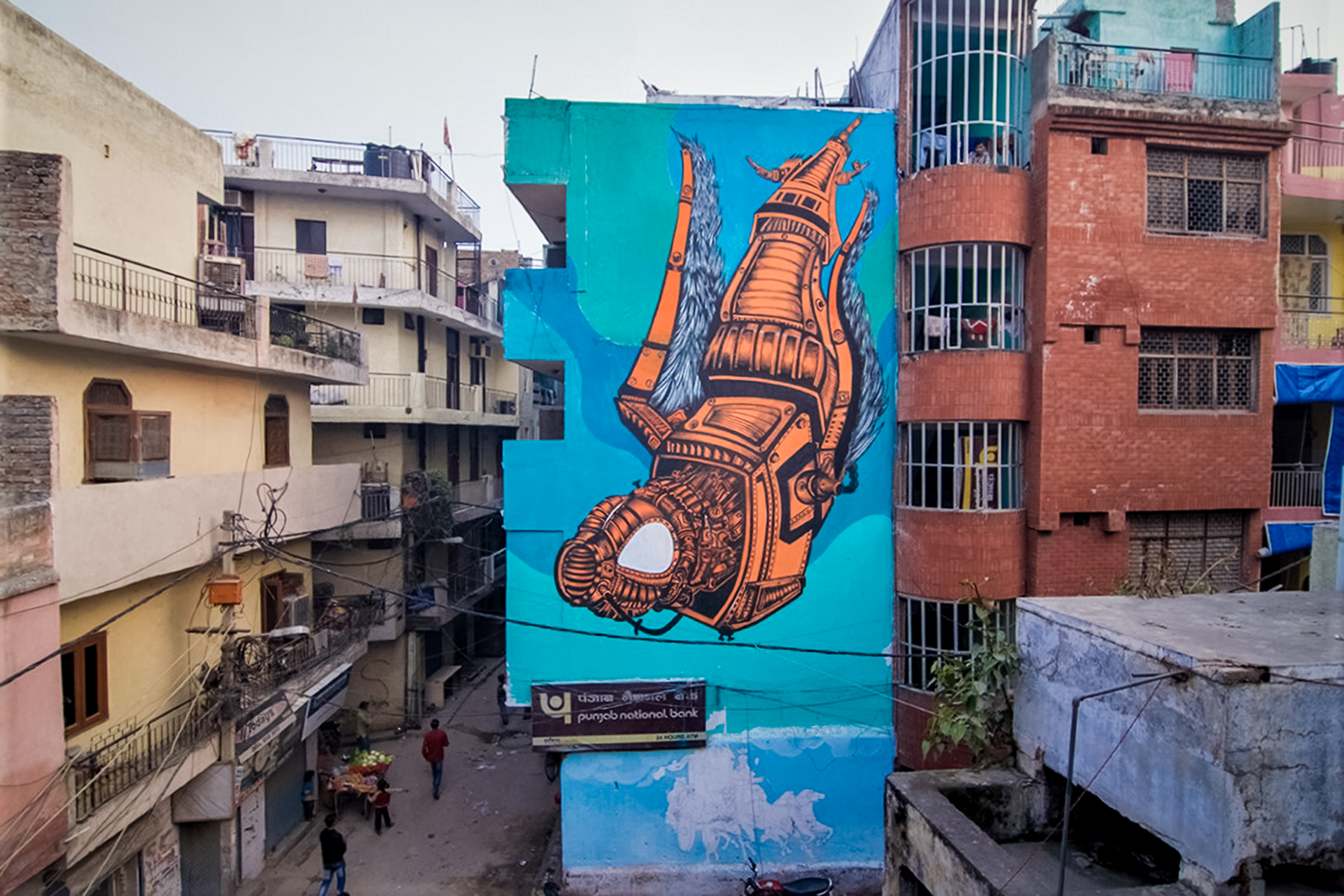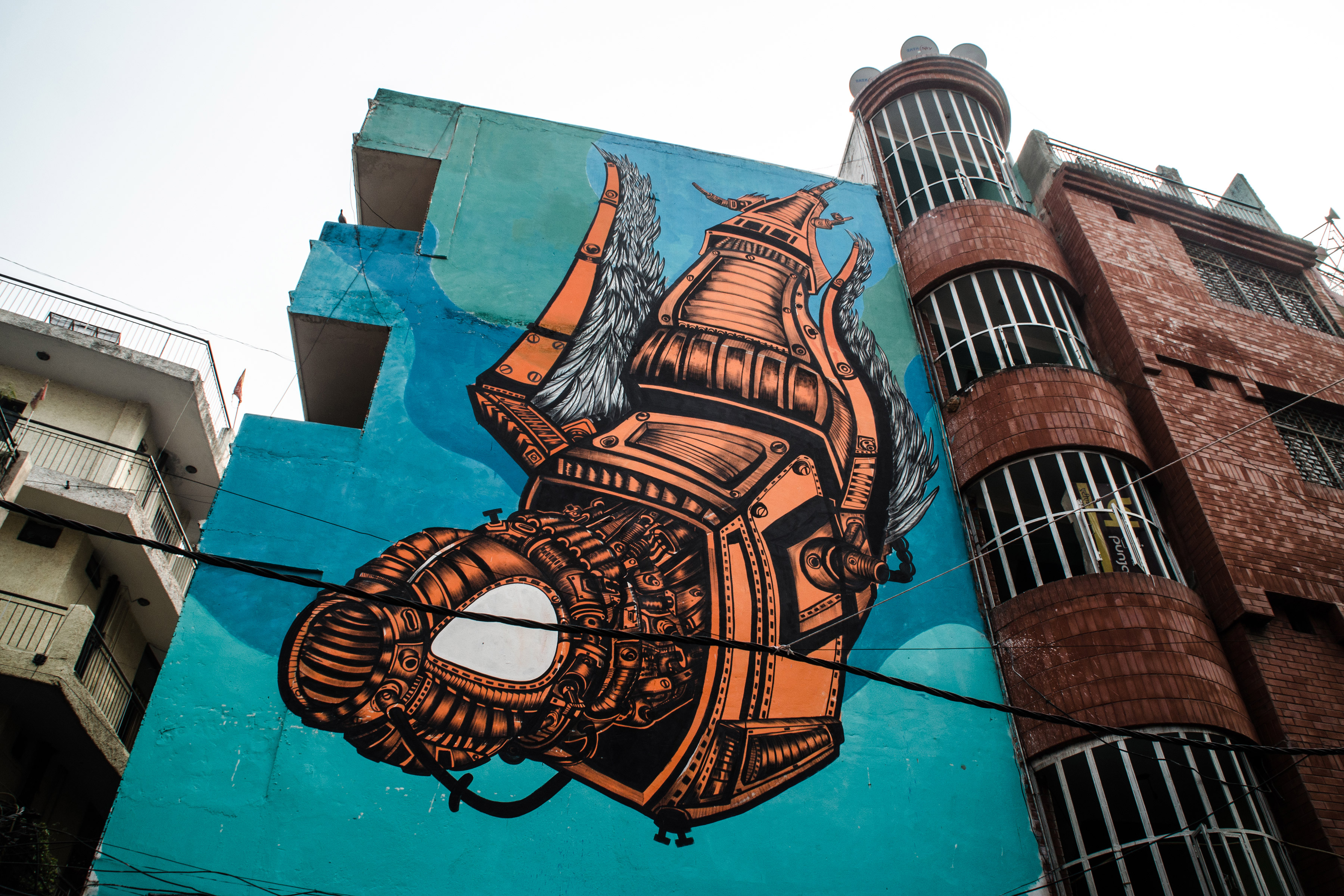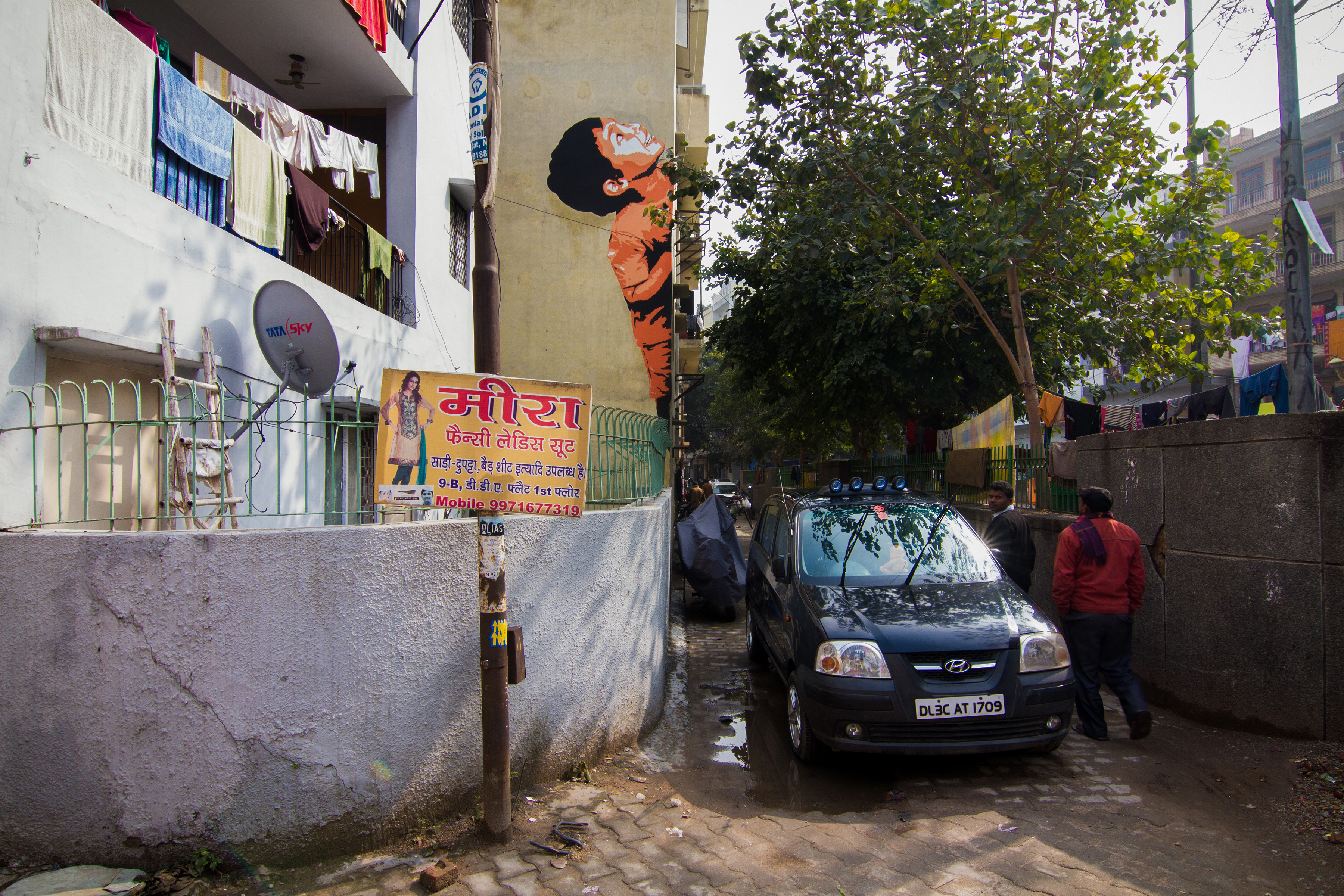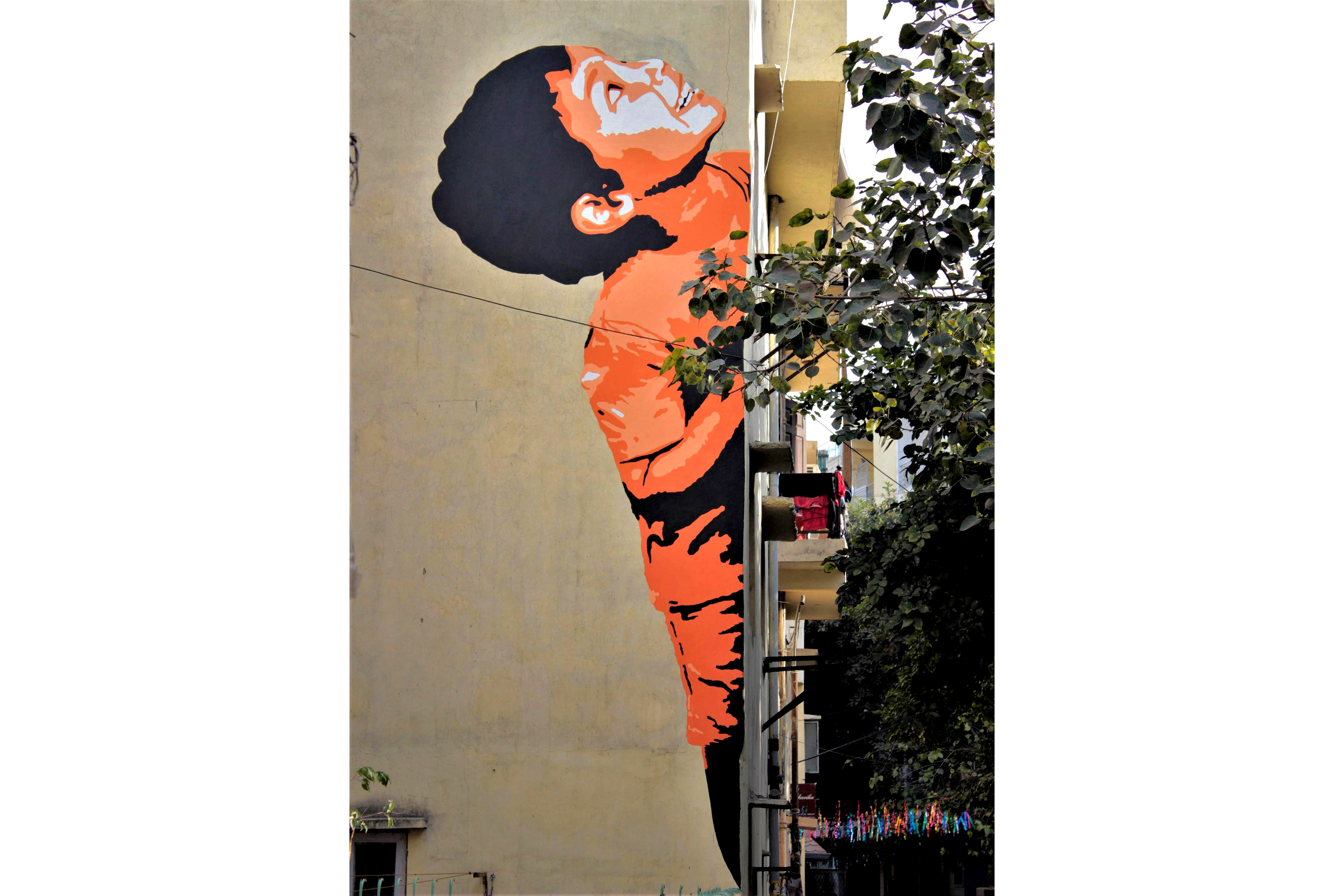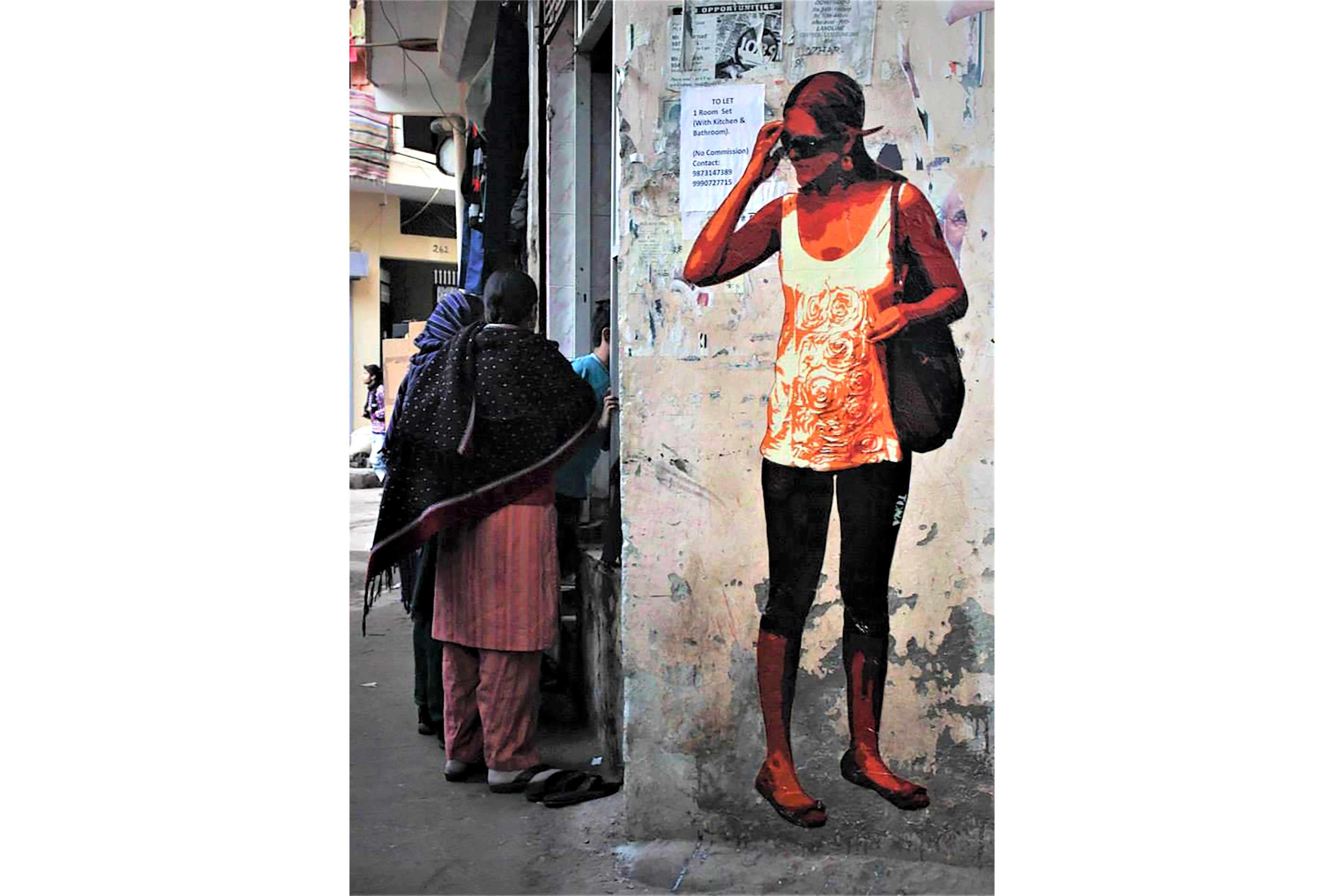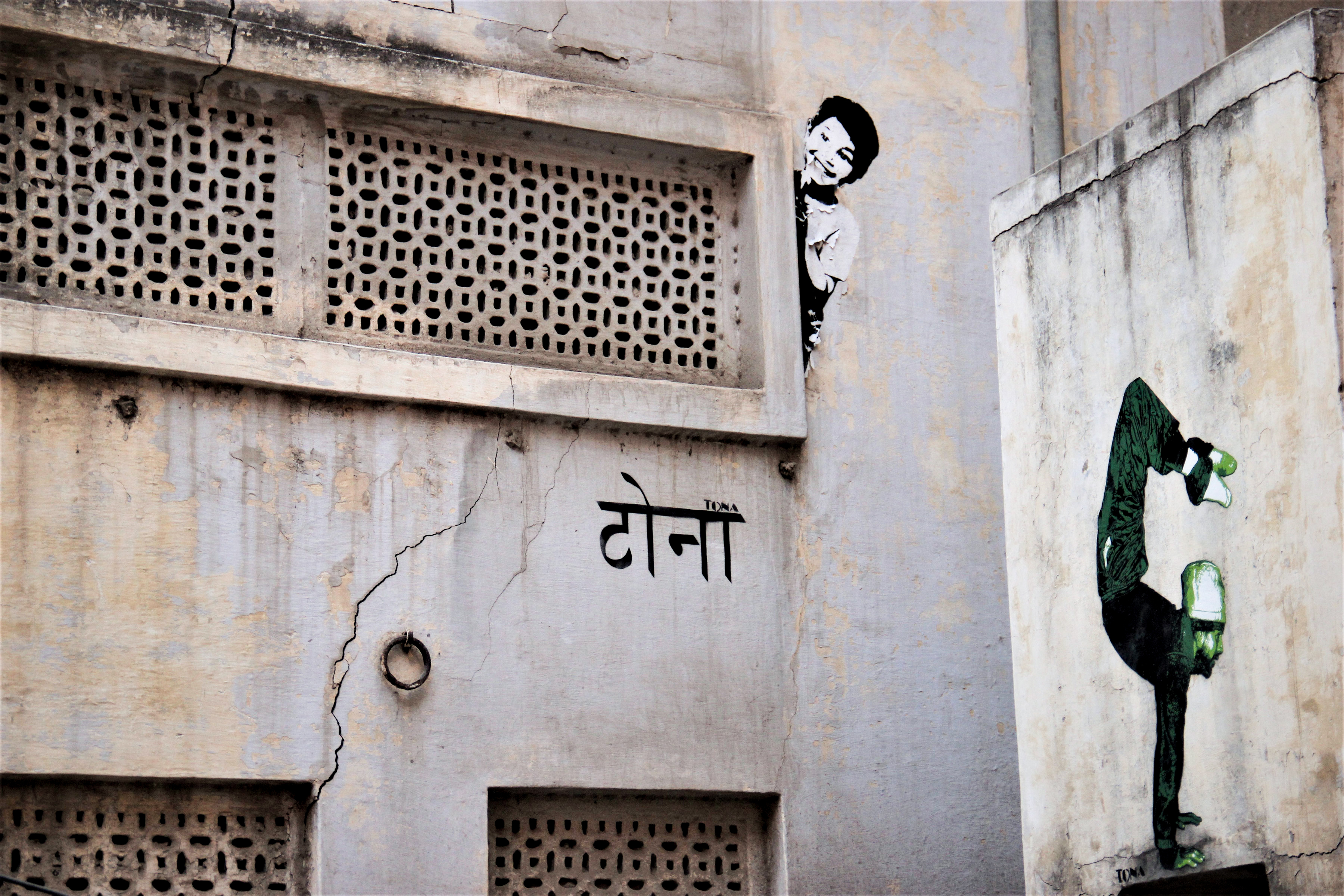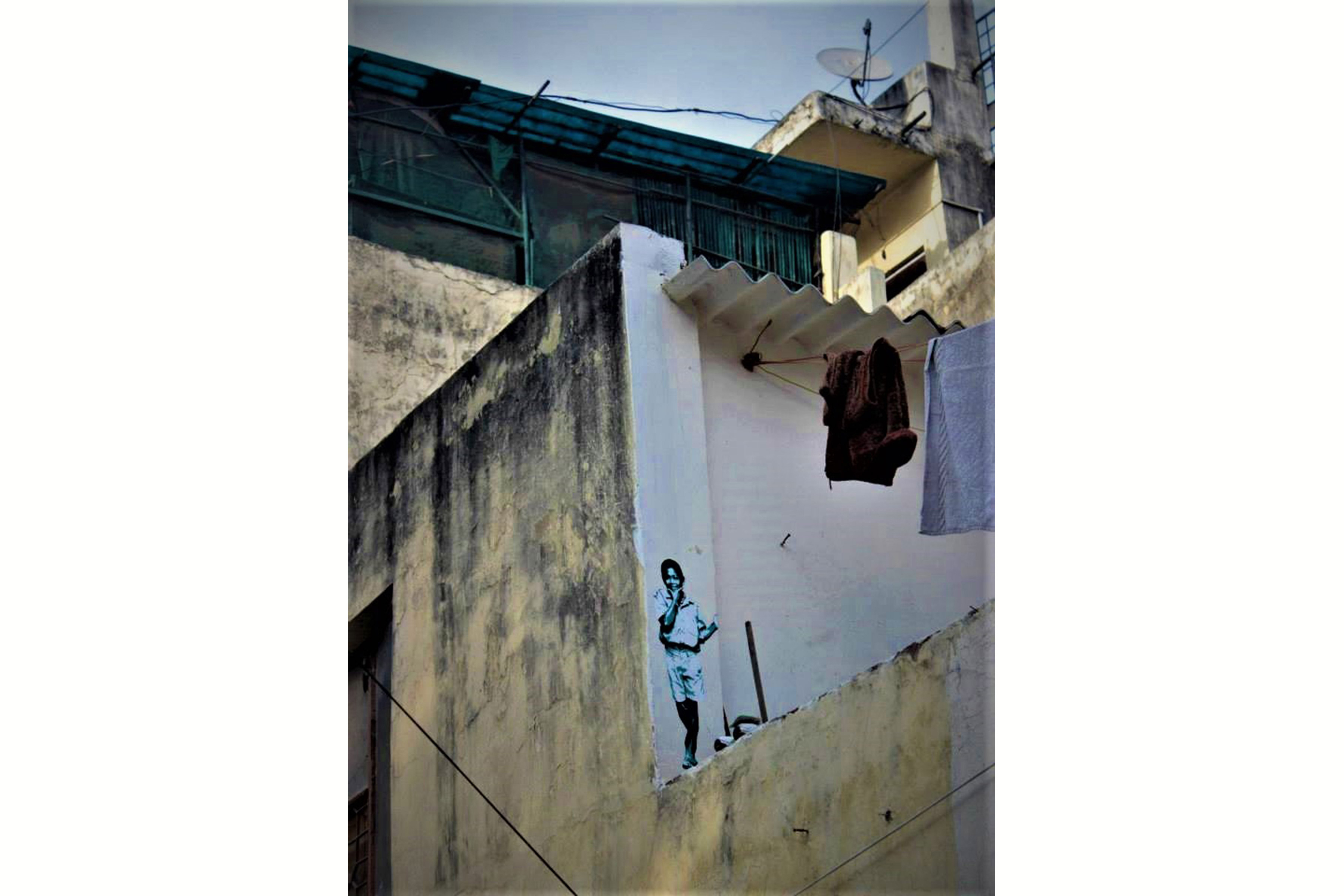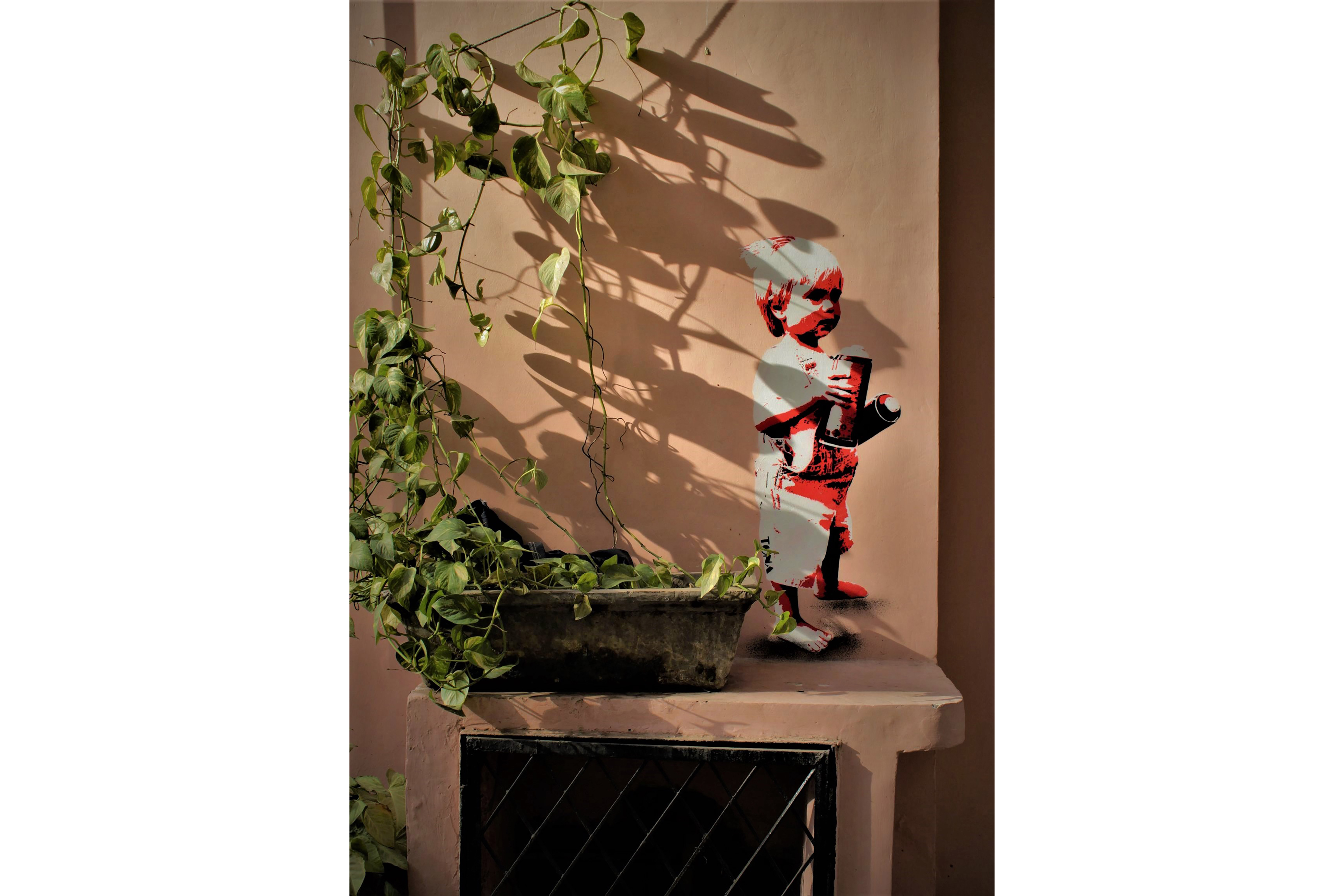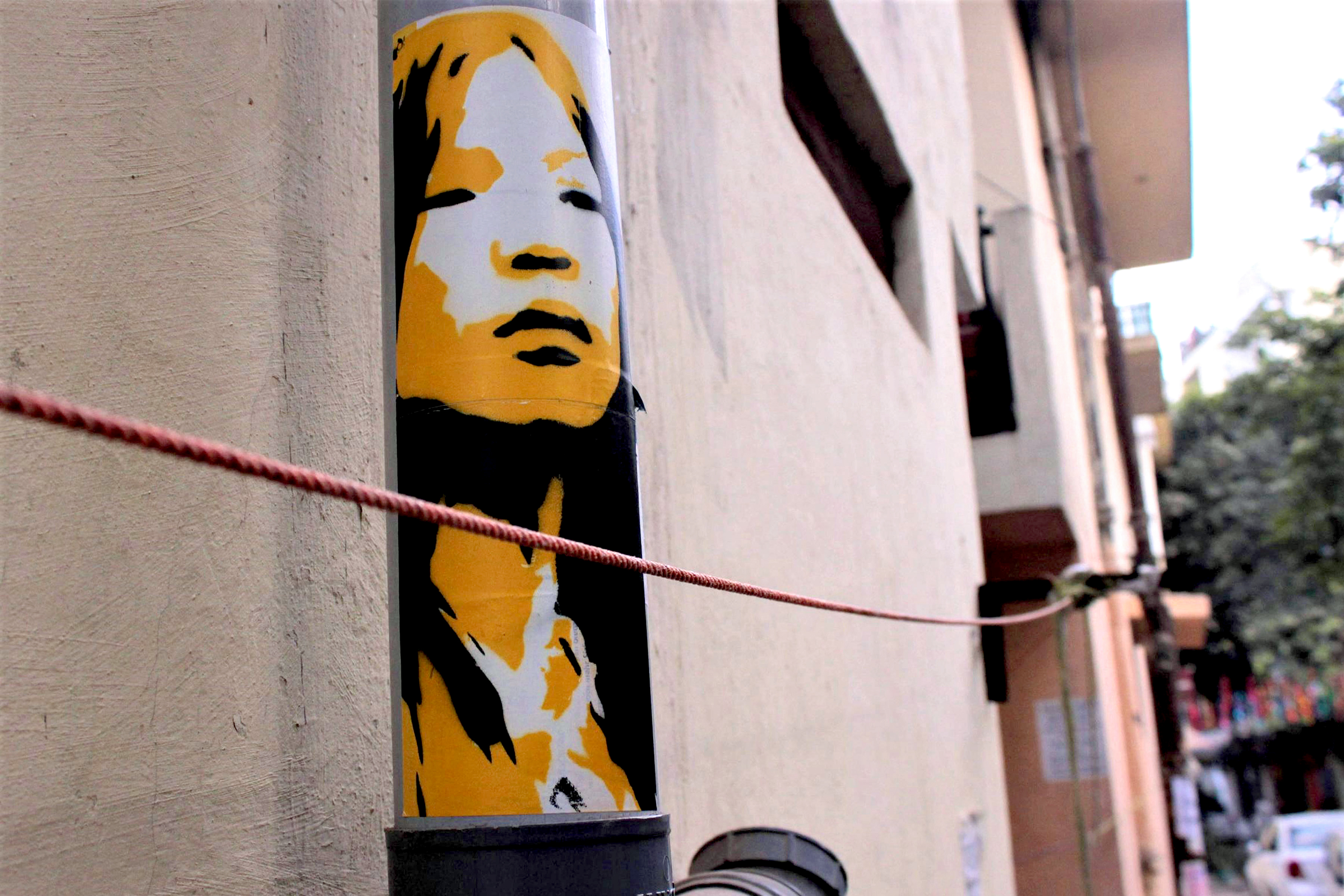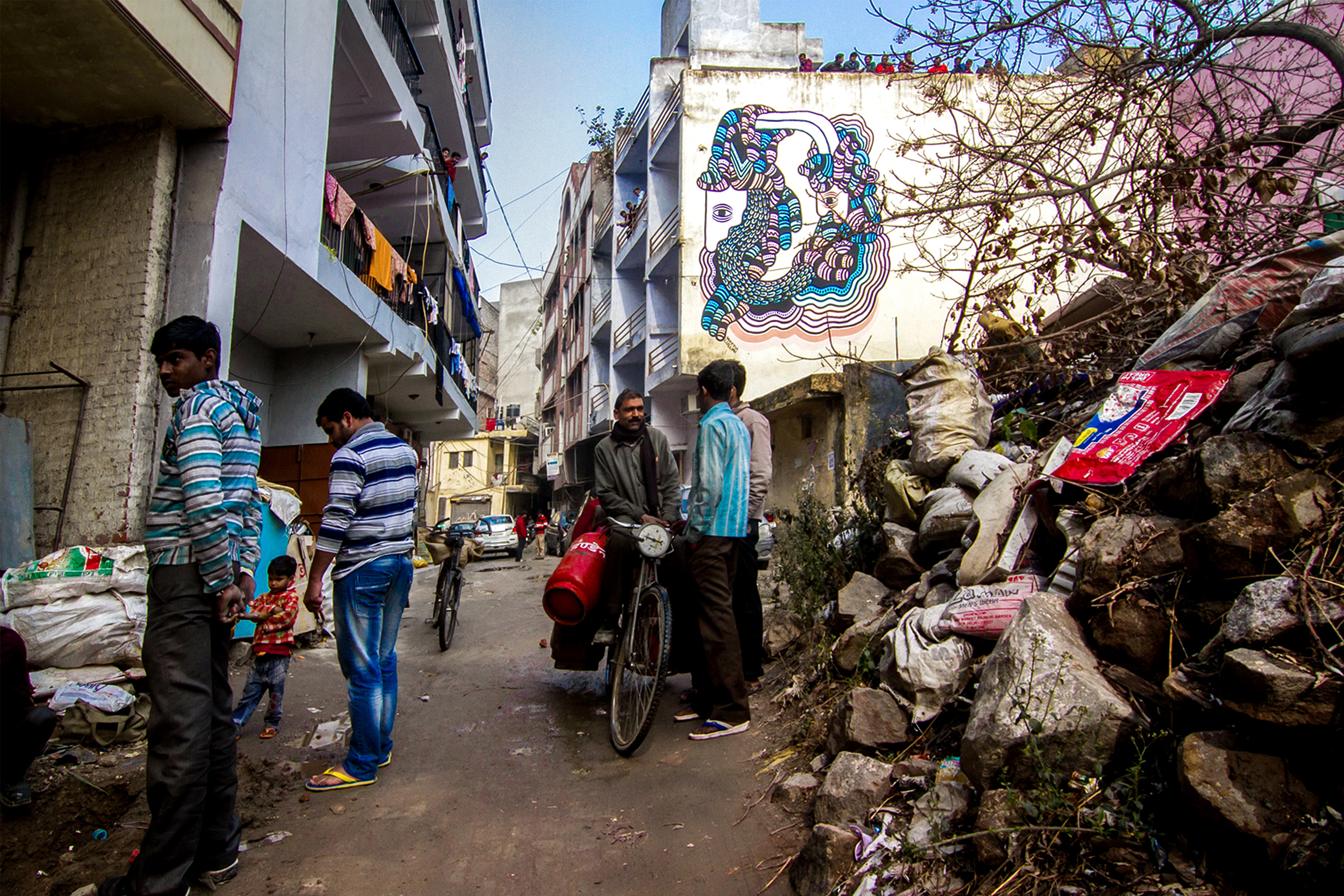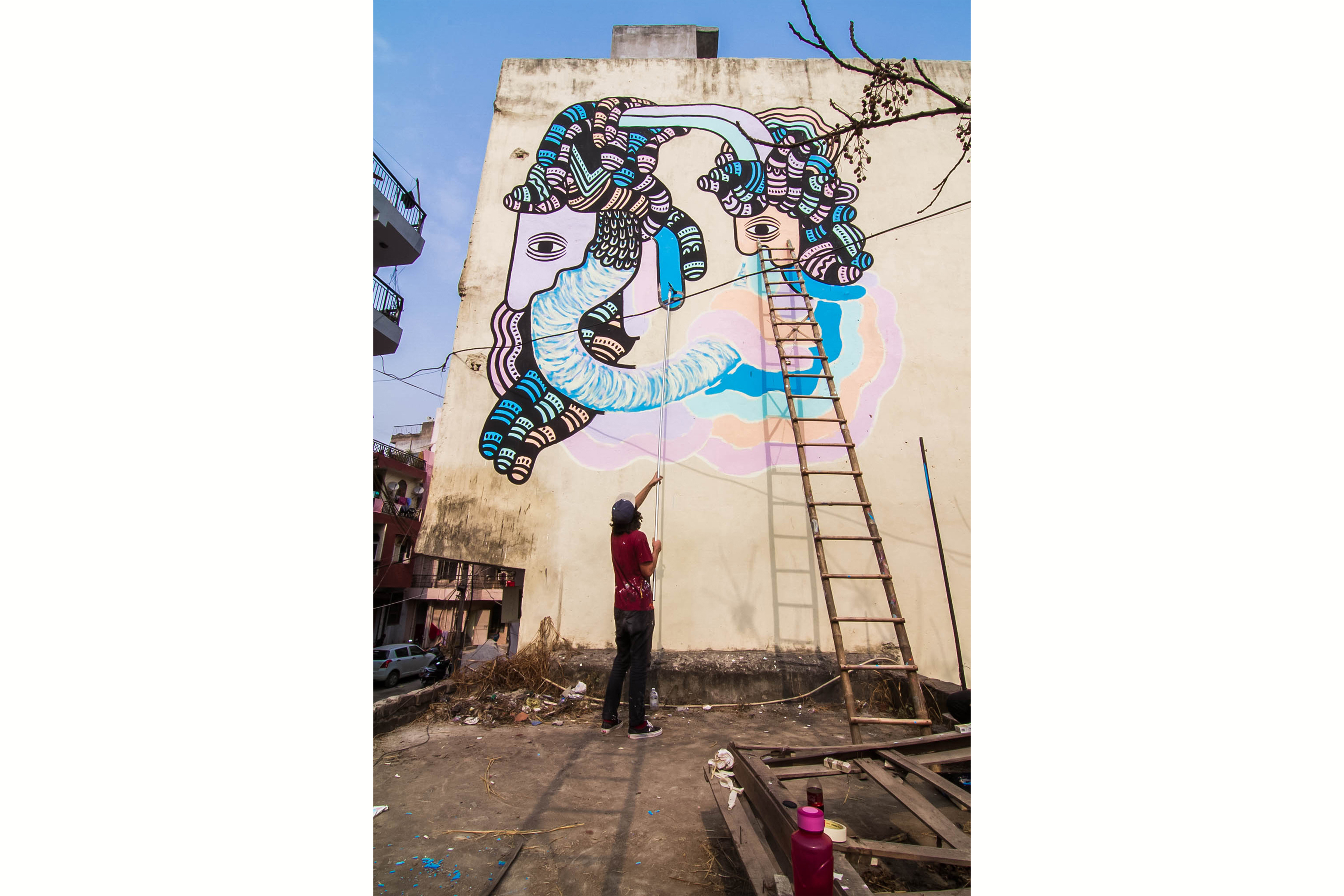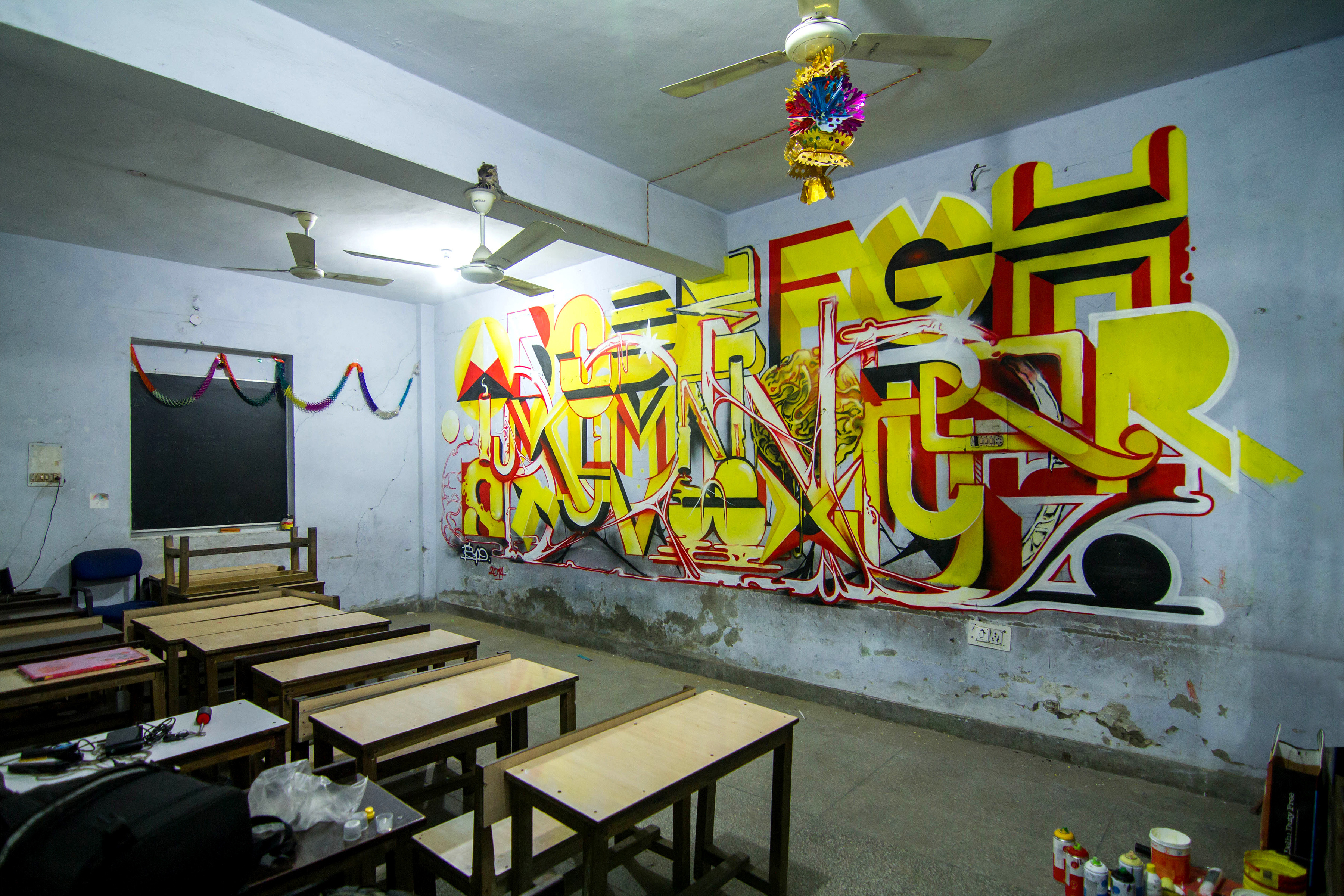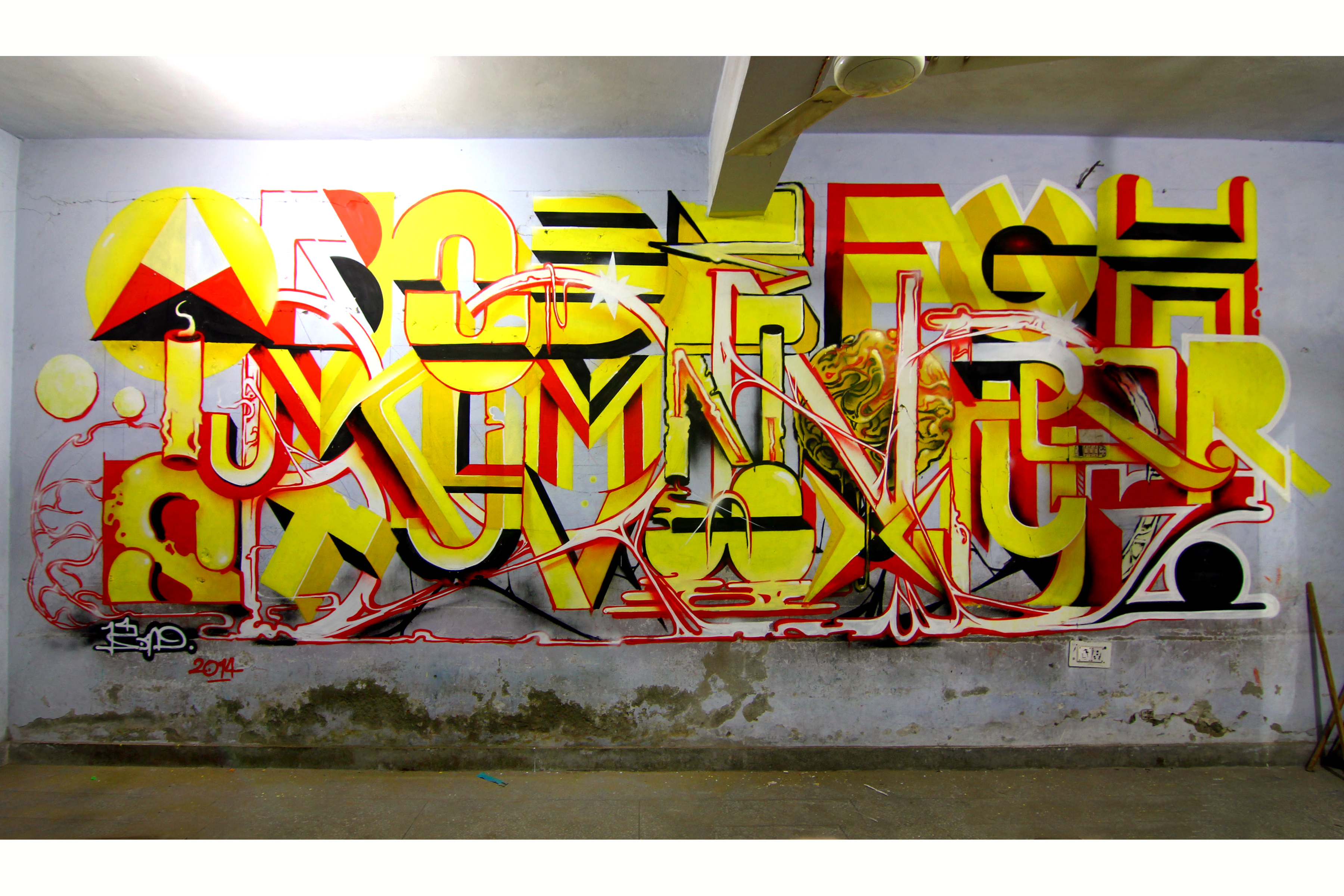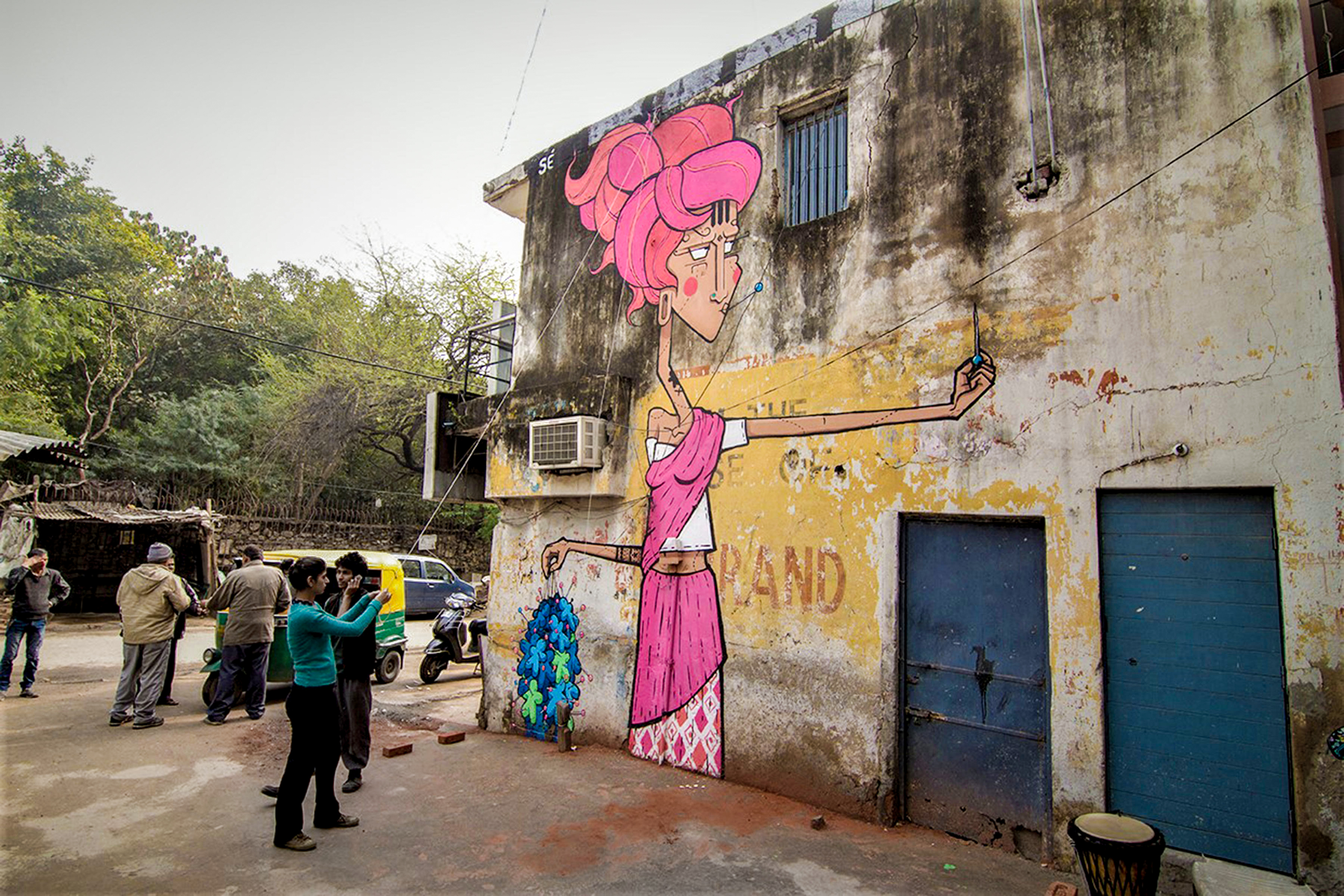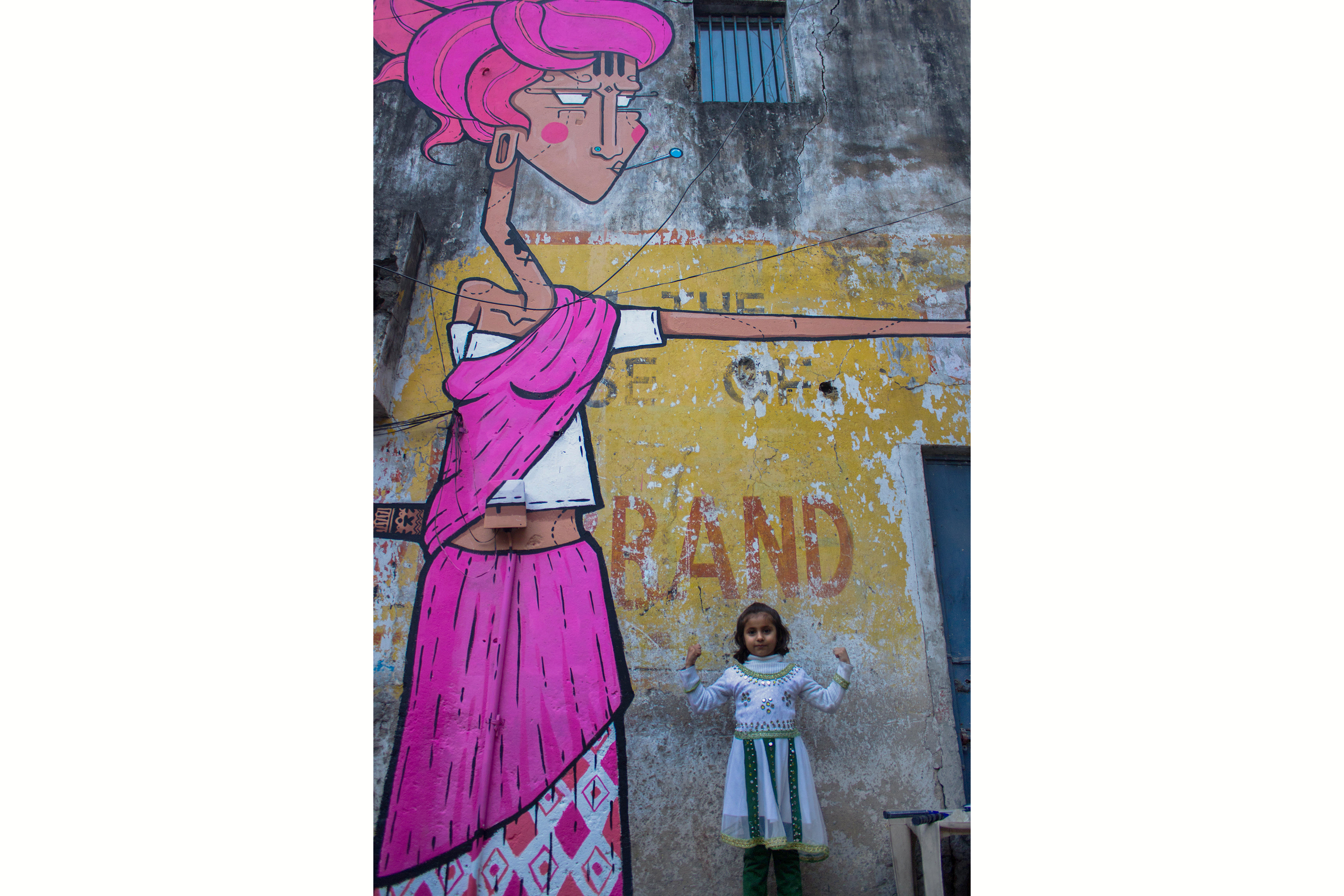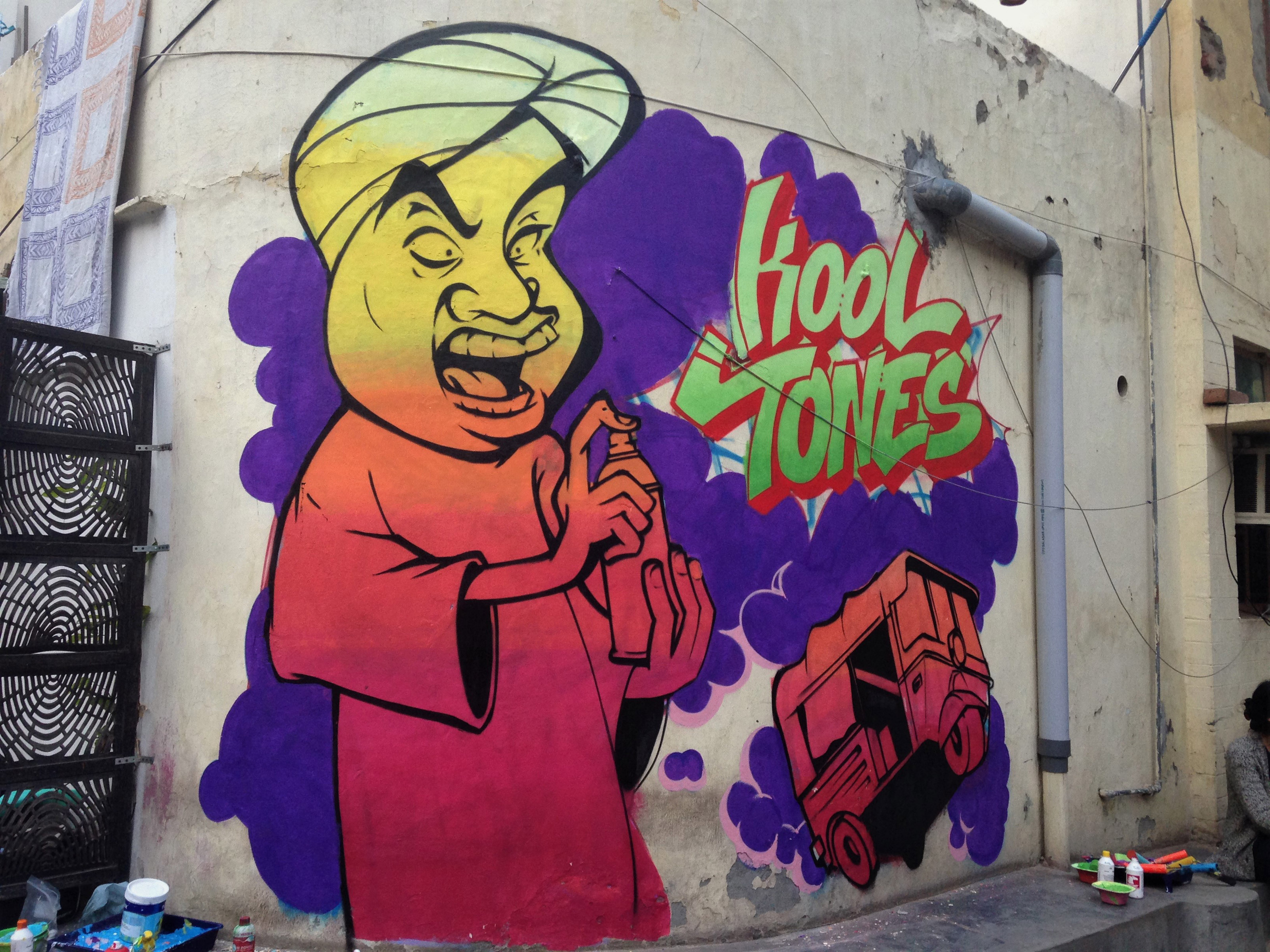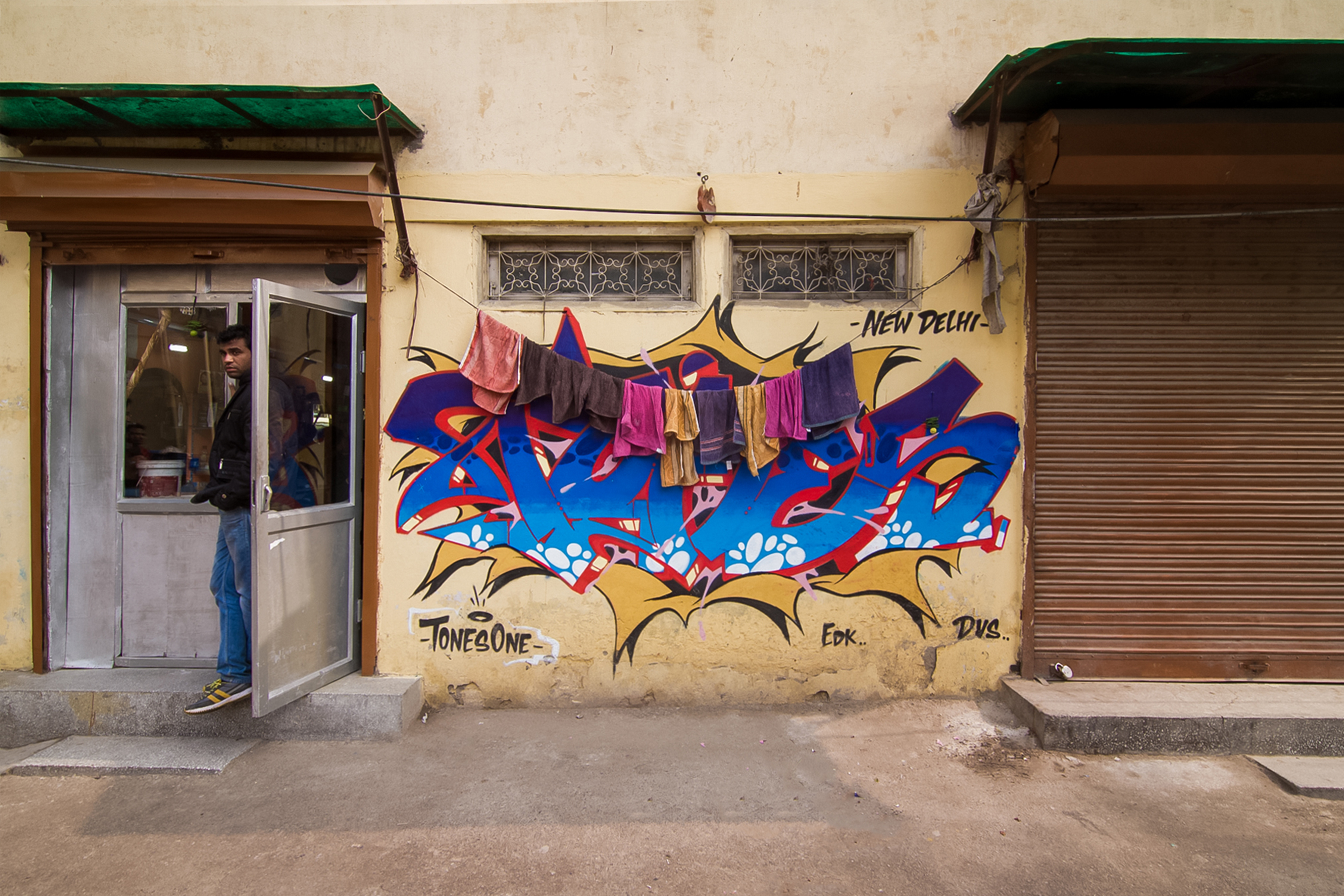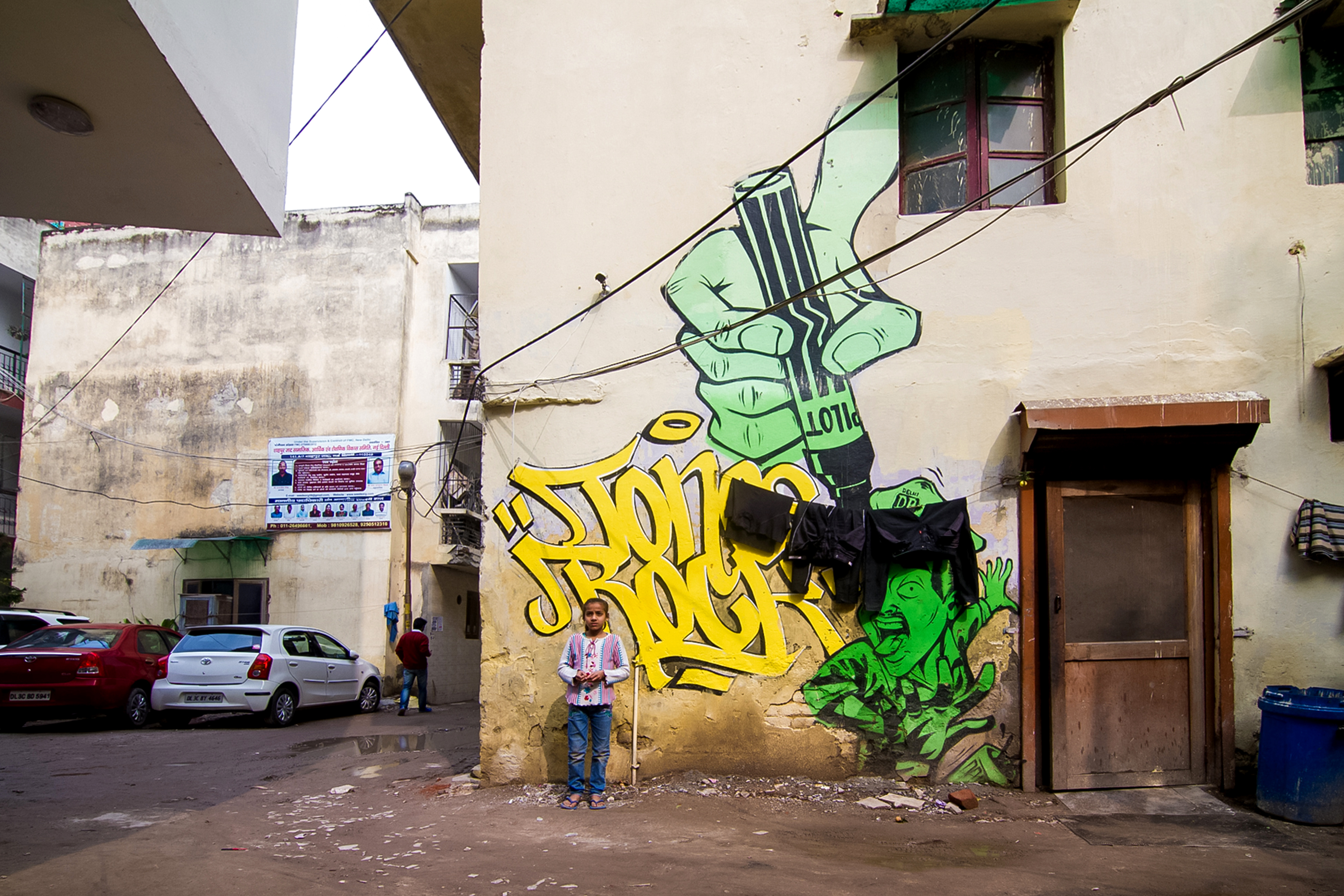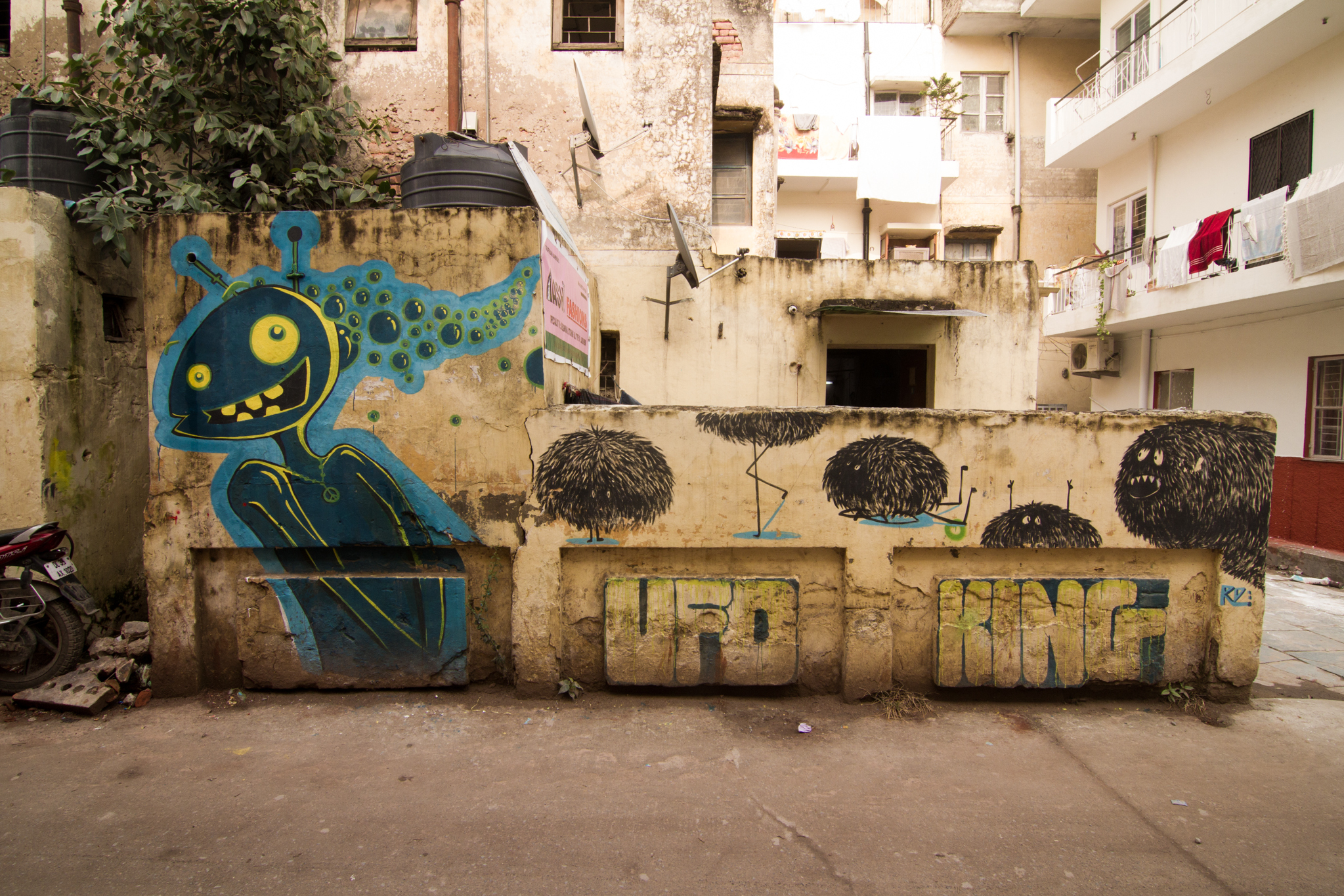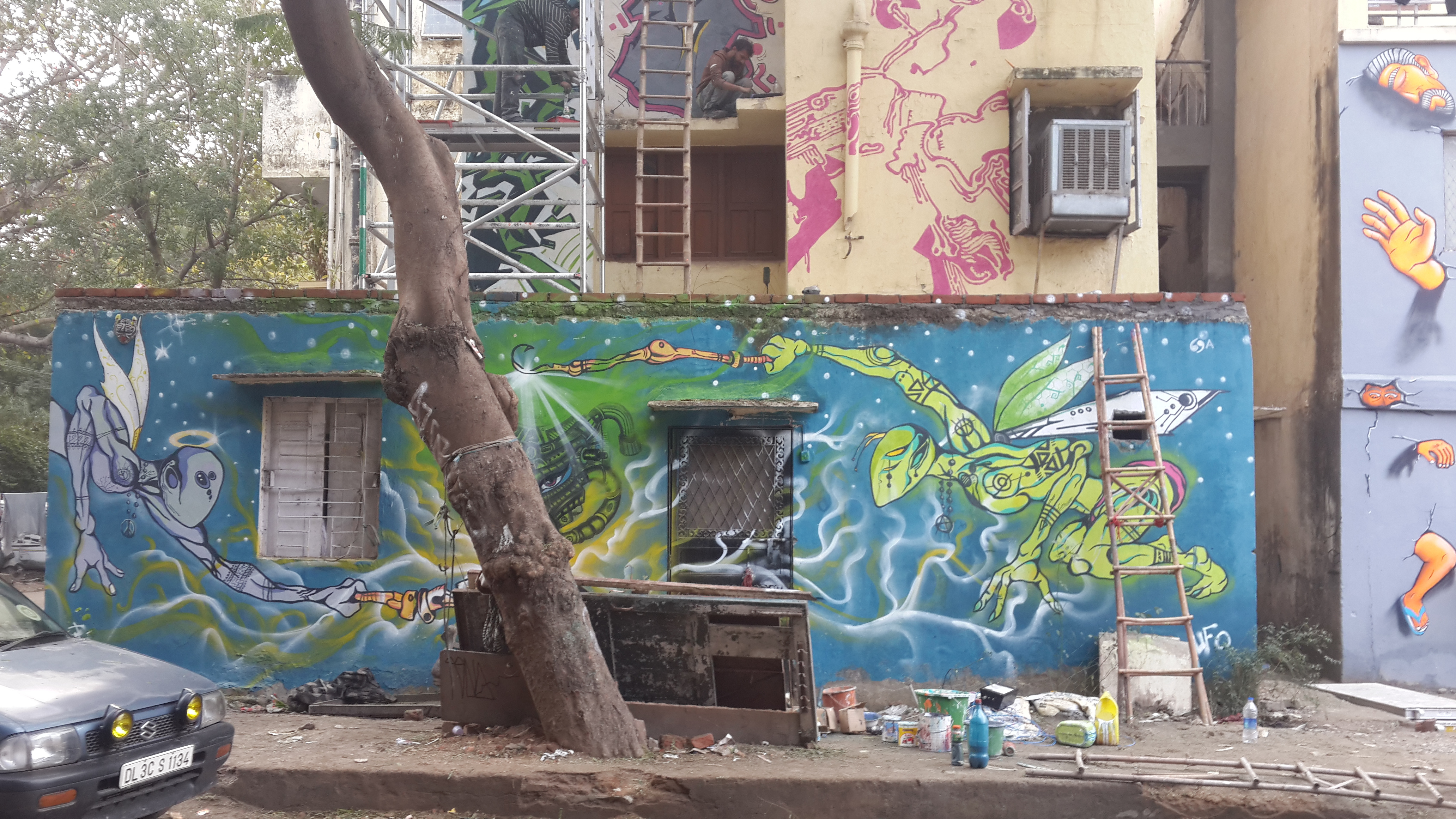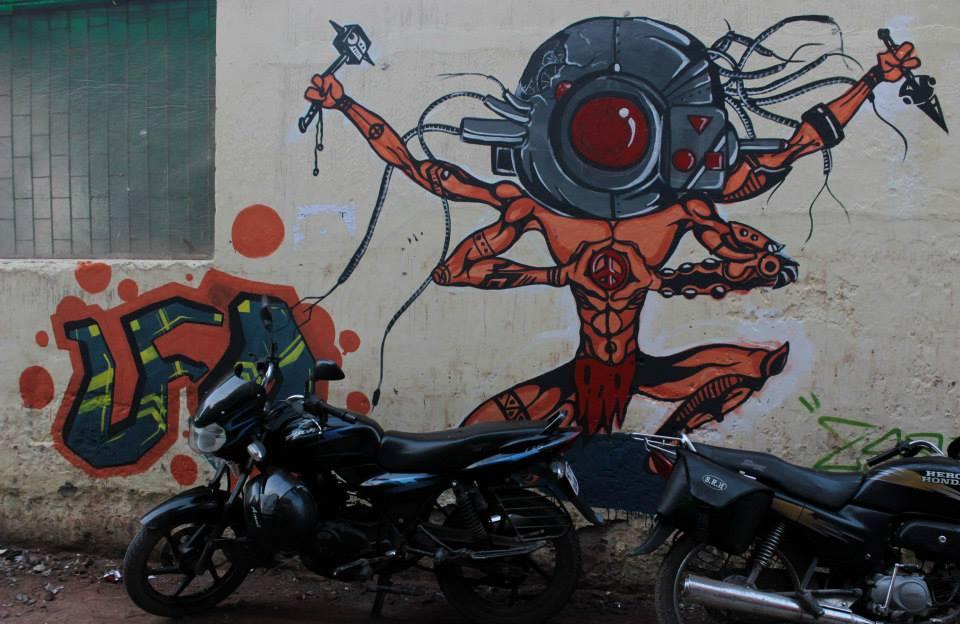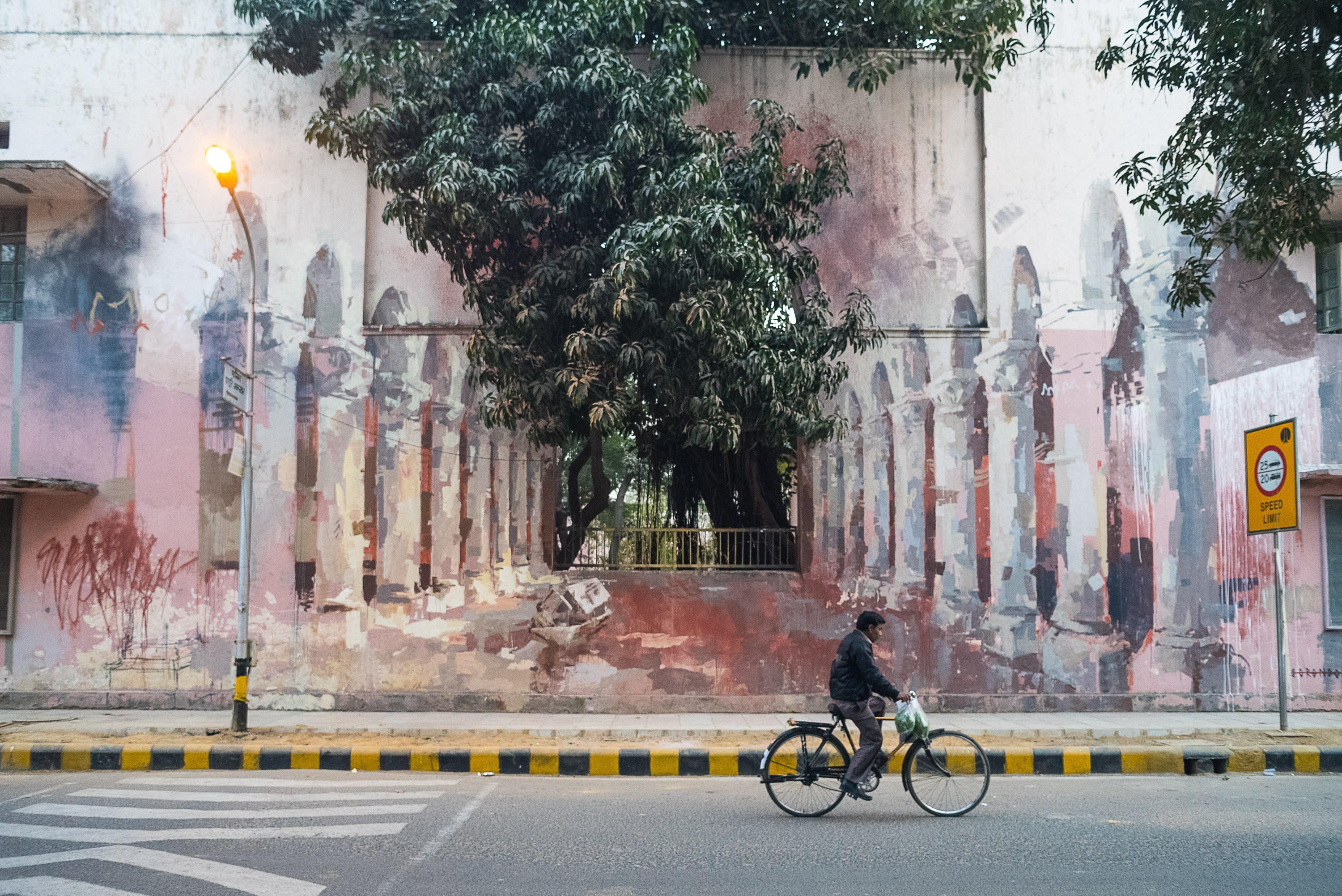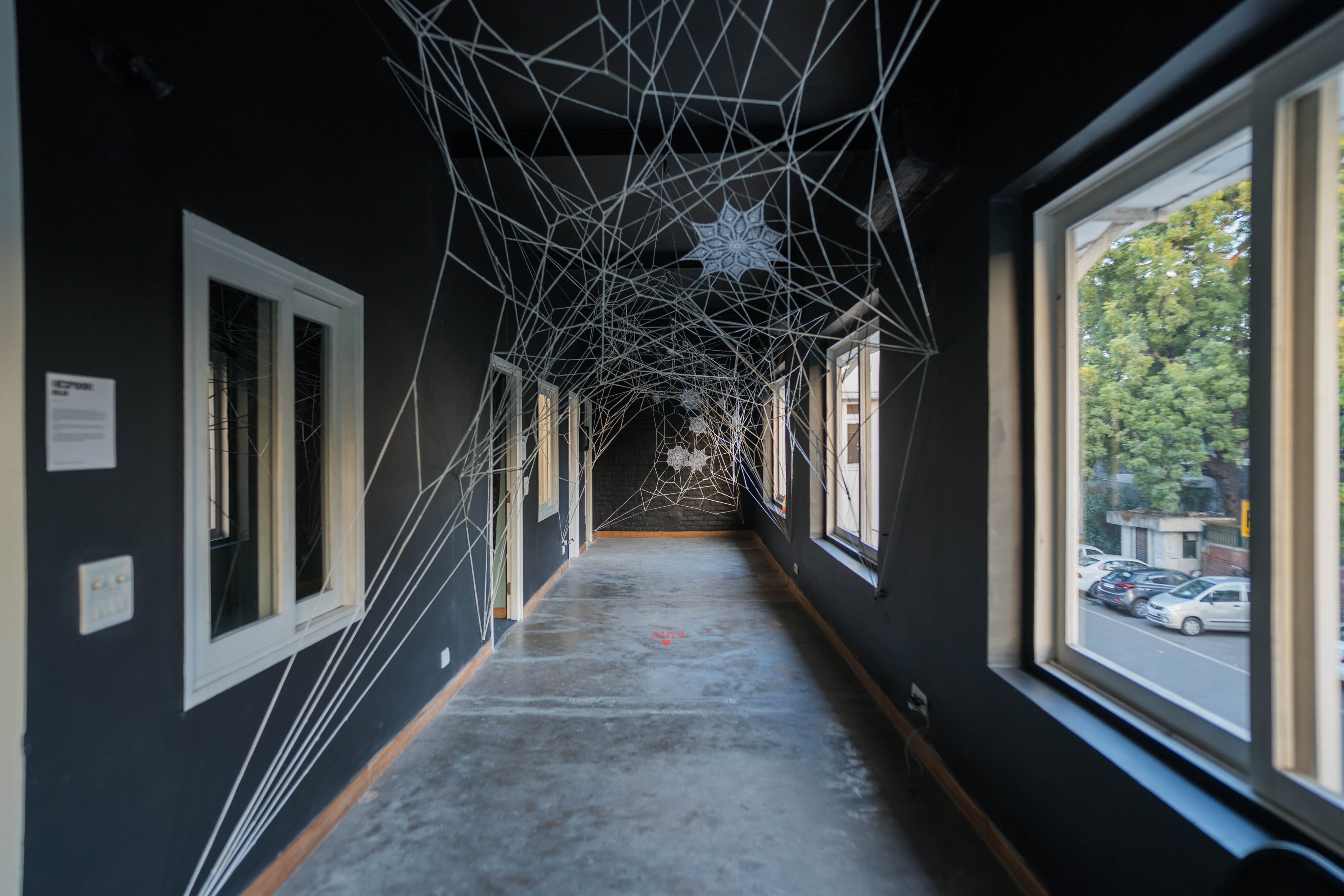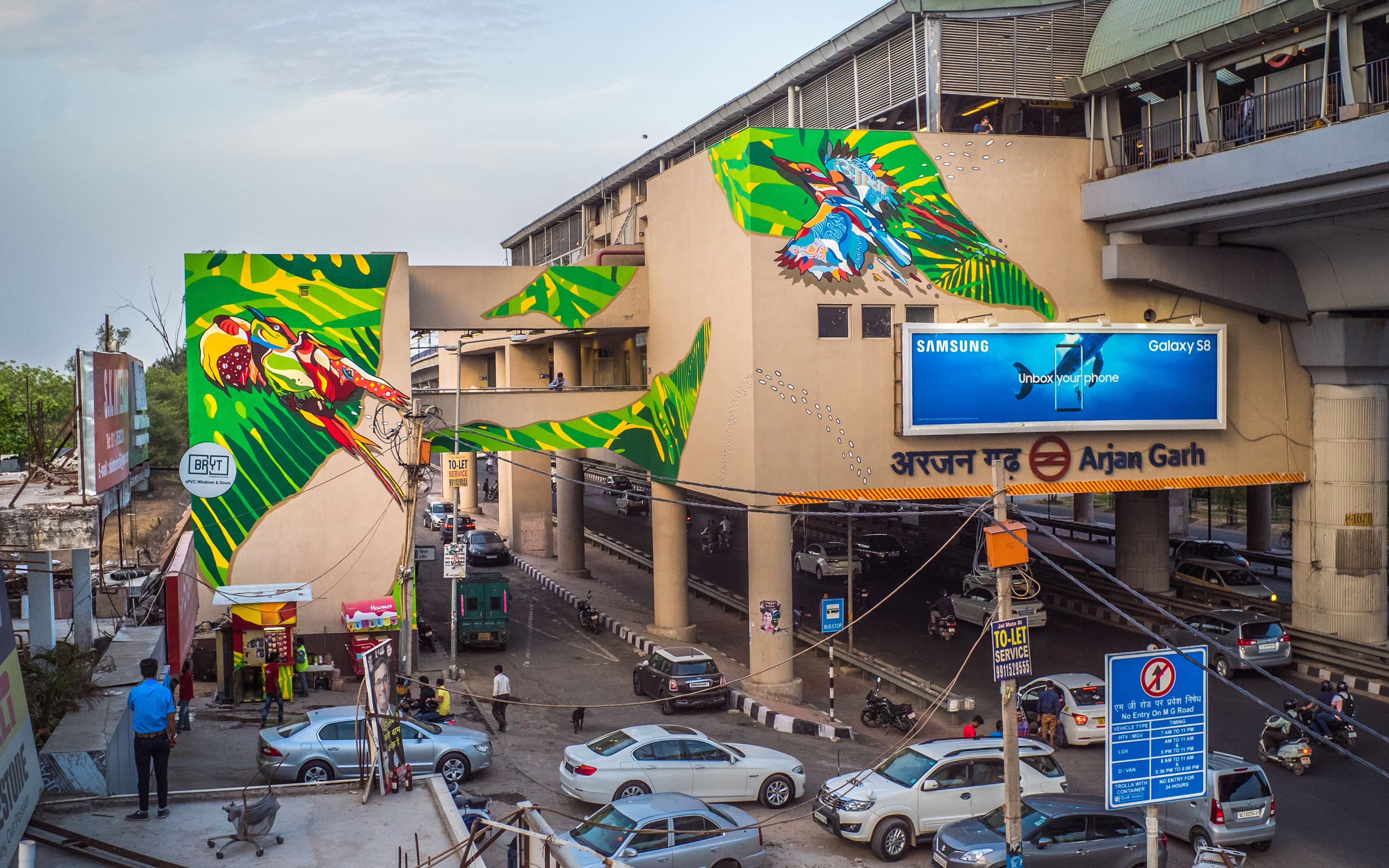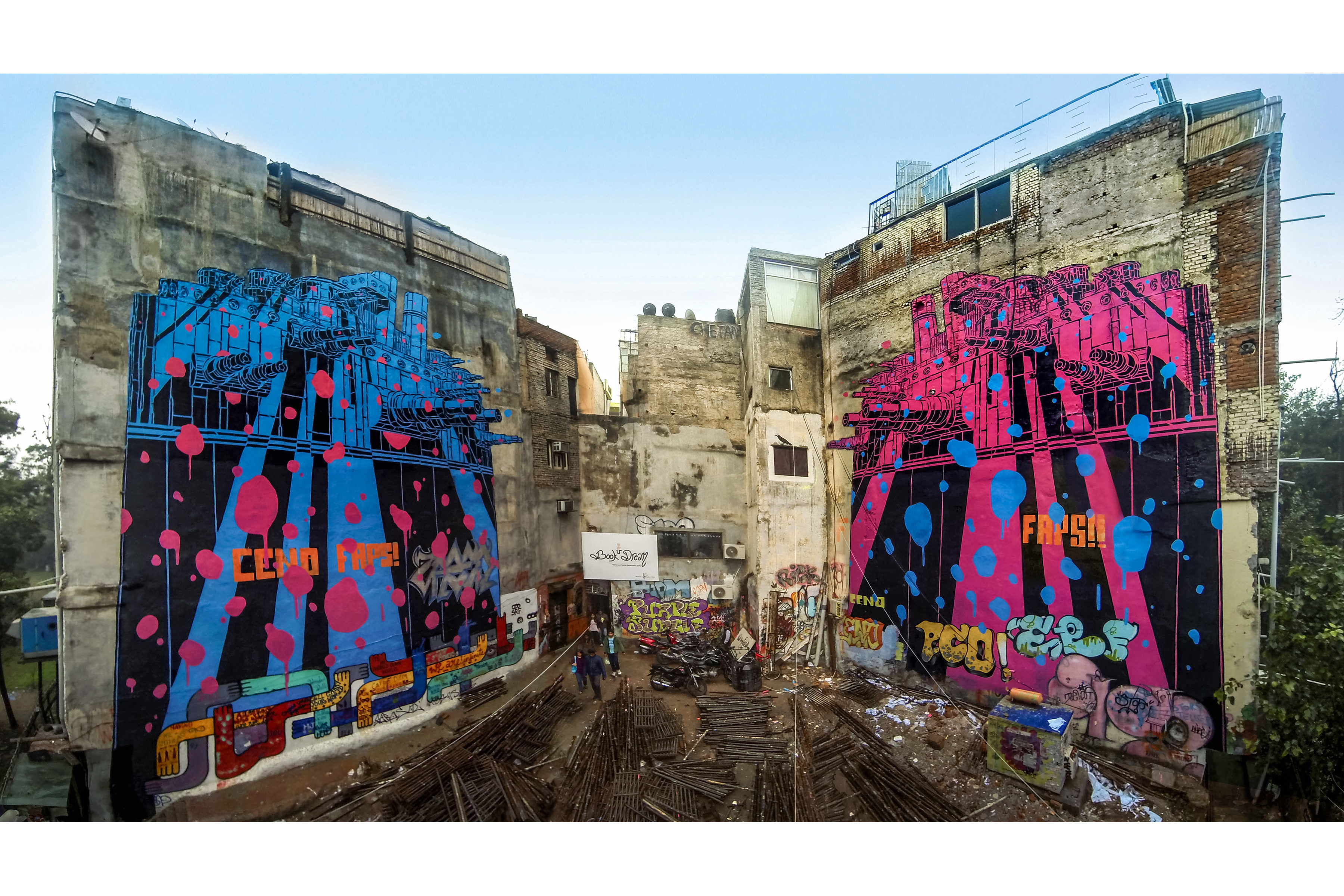Shahpur Jat is an urban village situated in the heart of South Delhi. Located amidst some of the poshest neighbourhoods of the city, it was the site for the first street art festival organised by the St+art India Foundation. Over a span of 2 months (Jan - Feb 2014), 25 Indian and international artists came together to create artworks across the village.
Previously inhabited predominantly by the Jat community and brimming with small, hole-in-the-wall shops occupied by craftsmen and colour-dye artisans, by 2014 Shahpur Jat was undergoing rapid gentrification. As cafes and designer boutiques started popping up on its peripheries, several new visitors started flocking to the area. The heart of the village, however, remained the same – with a strongly knit community of locals occupying centre stage. This made the space a vibrant mashup of cultures and ideologies, and served as the perfect ground for the first St+art festival.
Even back then, unlike in the west, street art in India didn’t have any negative connotations. It didn’t come attached with a sense of vandalism, mainly because the street art scene in India was still in a nascent stage. This meant that our proposal, even though not entirely understood, wasn’t met with vehement opposition from the locals. But permissions had to be still sought. We sought them using two approaches: bottom- top and top-bottom. While the first kind involved knocking on residents’ doors, seeking permission to paint on their walls, the second kind included approaching the pertinent government bodies for permits.
After an initial round of negotiations with the residents, we began work on a couple of walls.
The first mural to be completed was that of Indian artist Anpu, and the community really took to the new cat in their neighbourhood. Since Shahpur Jat had no signage for directions, the cat became a landmark for locals to navigate the neighbourhood - directions were given with the cat as the focal point. Post the Cat, the community really opened up to us, with more residents volunteering their walls. By the end of the festival, more than 20 pieces had been painted all across the village, including some inside houses!
With the introduction of the artworks, the hope was that people visiting the village would not only stay on the periphery but would be encouraged to step deeper into the village and explore the true Shahpur Jat as well. Once you leave the outer perimeter that boasts of bars, cafes and designer boutiques, you enter the village - a sort of densely-packed area, with narrow lanes and extremely crowded building structures. The cramped building structures worked as beautiful facades.
Sometimes the residents gave us walls with no strings attached. Sometimes, the walls were given with a caveat attached. For example, Inkbrushnme’s wall was part of barter - the residents gave us a wall on their balcony, and in return, the artist had to paint a smaller mural of their choice within their house. Fair deal, how we saw it. So Inspired by the chaotic topography of the area, Pune-based artist Inkbrushnme decided to paint ‘Surya’ continuing with his project ‘Mythopolis’ where he explores mythological themes through street art.
Another artist inspired by the materiality of the structures was Delhi-based artist Harsh Raman.
Shahpur Jat is chaos. It's like a maze, and there are these places here that you wouldn’t imagine exist. So for you to come in here and try to find these pieces, will be a game in itself.
- Harsh RamanOne could say that the festival was an experiment of sorts where the artists were allowed to be free in a new environment, and explore their own work within the neighbourhood. Within the vicinity of this small area, one could find anything ranging from huge murals, small portraits, stencils, and paste-ups - a very diverse range of interventions. German artists Foe and Alias diversified the artworks in Shahpur Jat, by bringing their stencil pieces through the neighbourhood.
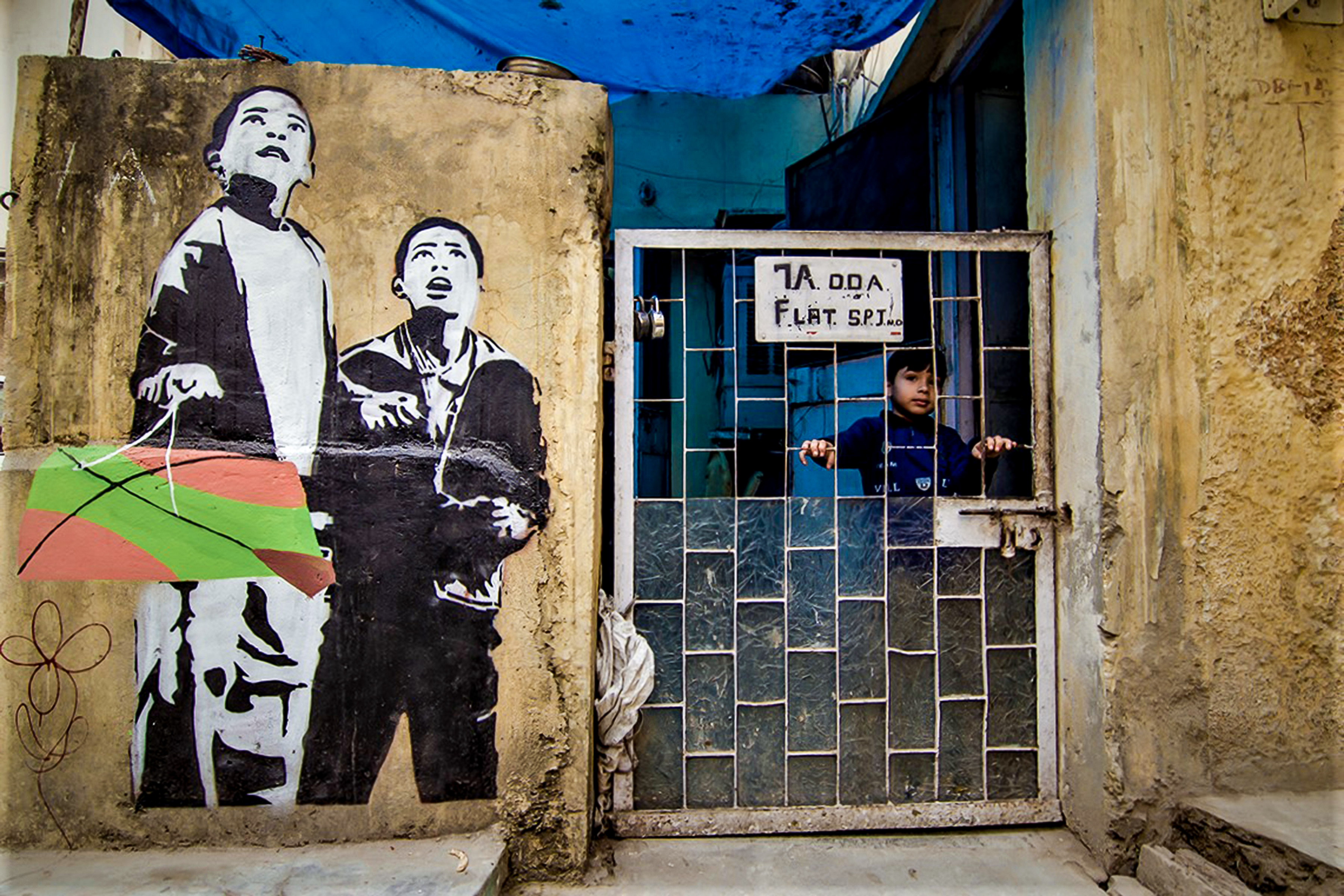
When a lot of artworks are concentrated in one area, a dialogue initiates. Not just between the artworks and the people, but also amongst the people. With the introduction of the artworks, there was abuzz in the village with chai-time banter digressing from the usual politics and cricket to the new activity happening in their neighbourhood, about the meaning of art and the different interpretations people had. This also inspired conversations between artists, resulting in unique collaborations, where the artists brought together their distinct approaches to deliver mutually-inspired and driven narratives.
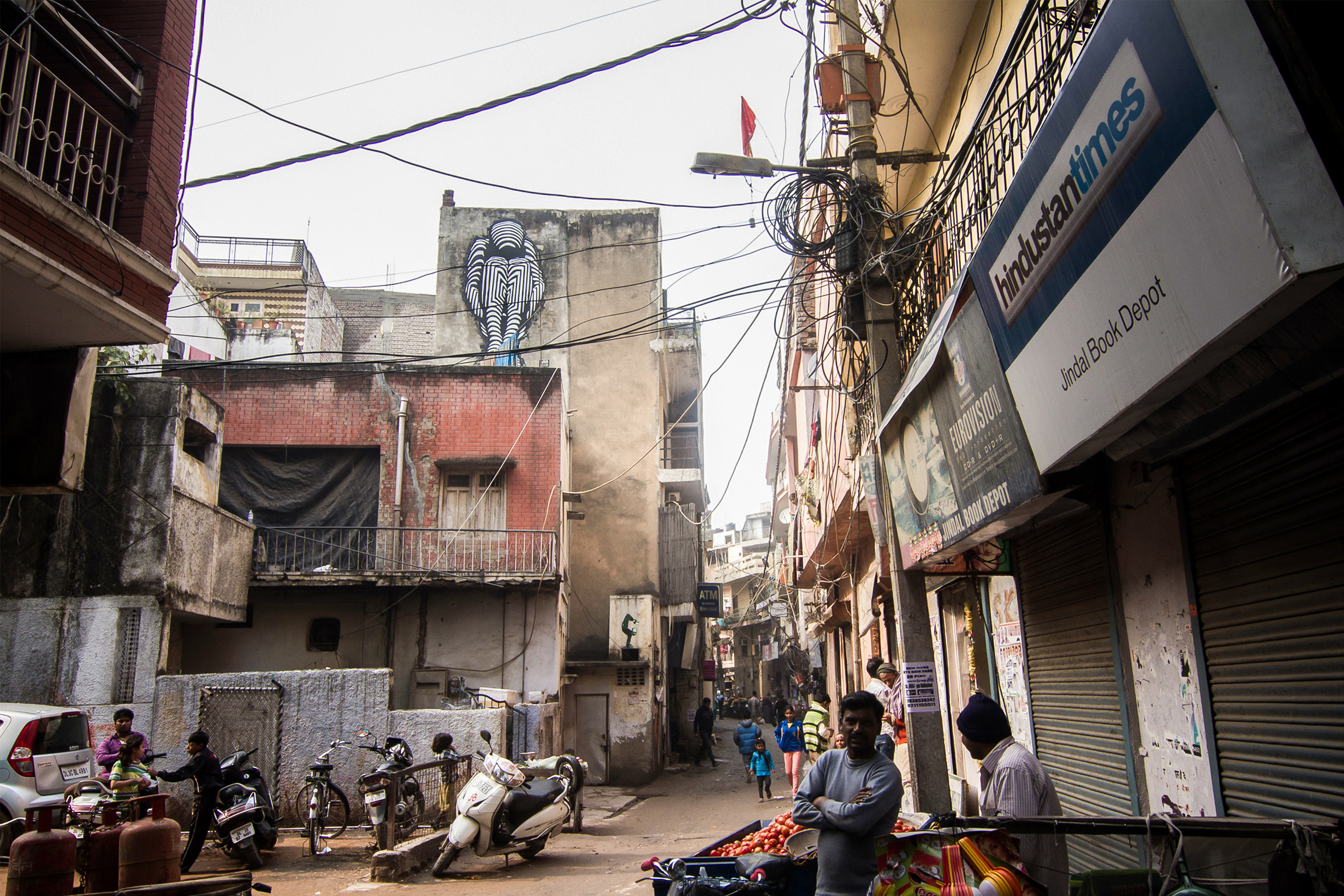
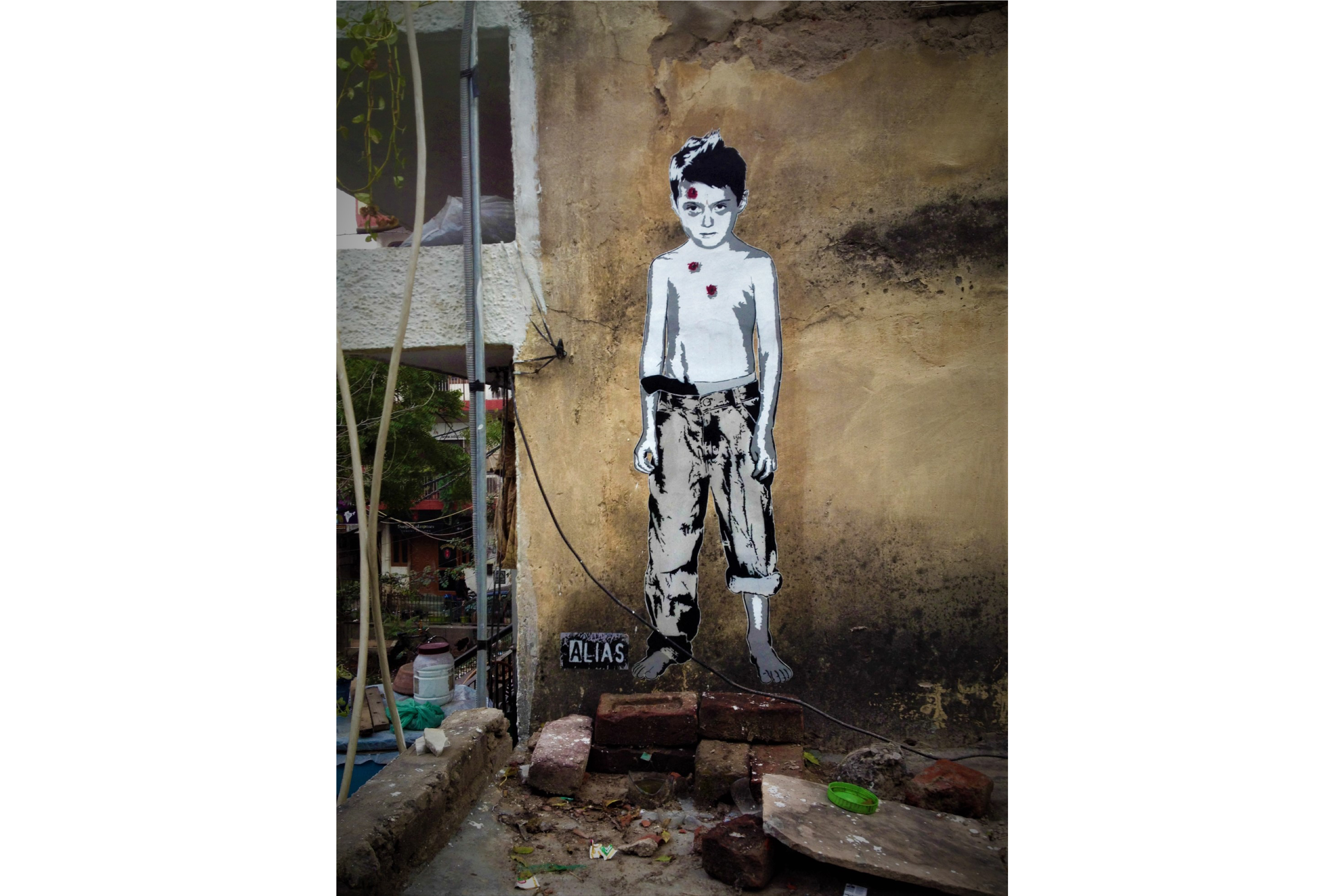
The location is pivotal for Alias. He depicts individual portraits of vulnerable individuals found in obscure and isolated spots- to allow the onlooker to have an uninterrupted, unmitigated and personal dialogue with story being portrayed.

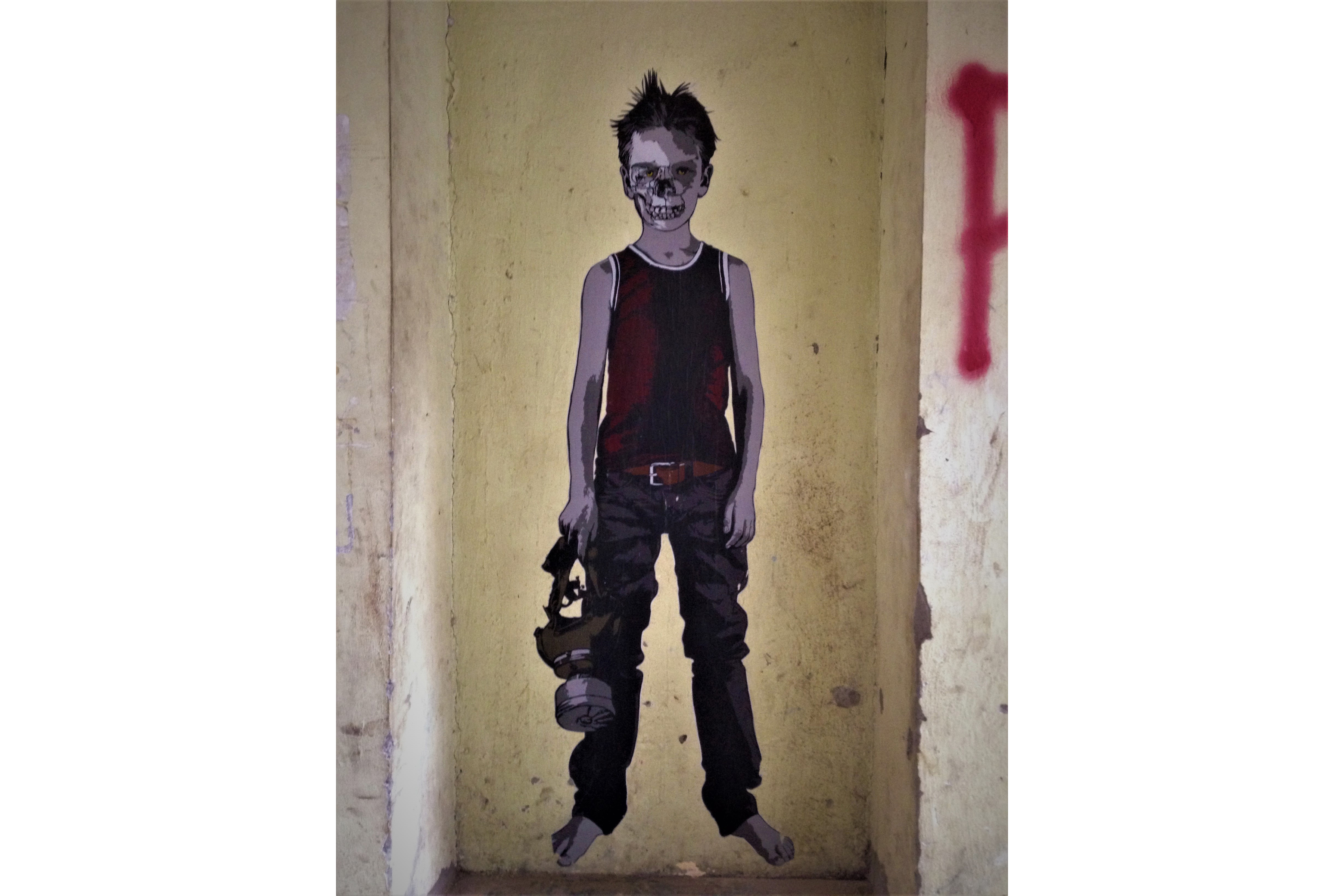
The variation of artworks wasn’t just restricted to medium (stencil, paint etc), or size, but also to style. The village welcomed Tofu’s abstract geometric patterns with bewilderment and surprise, never having encountered anything like this before.
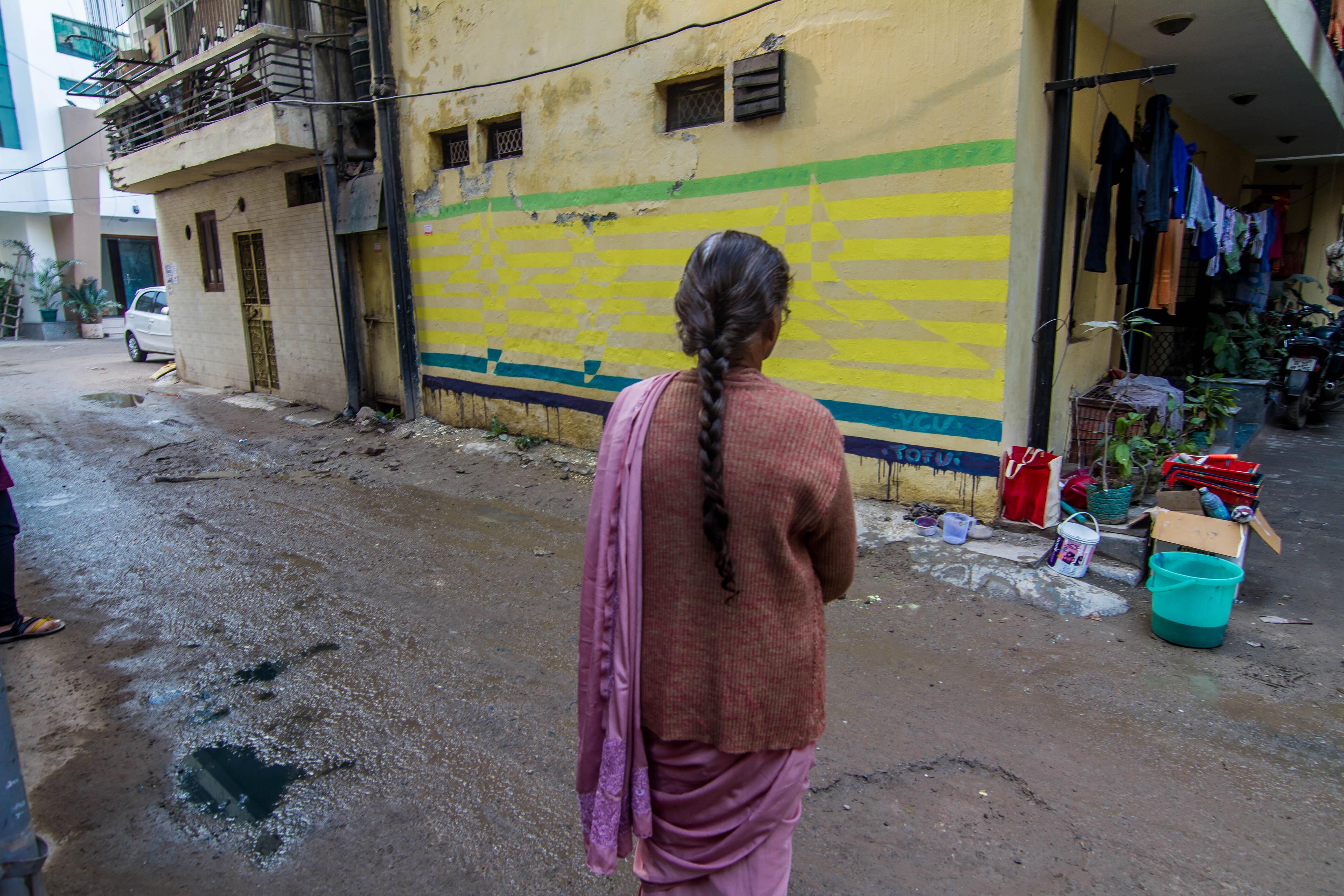
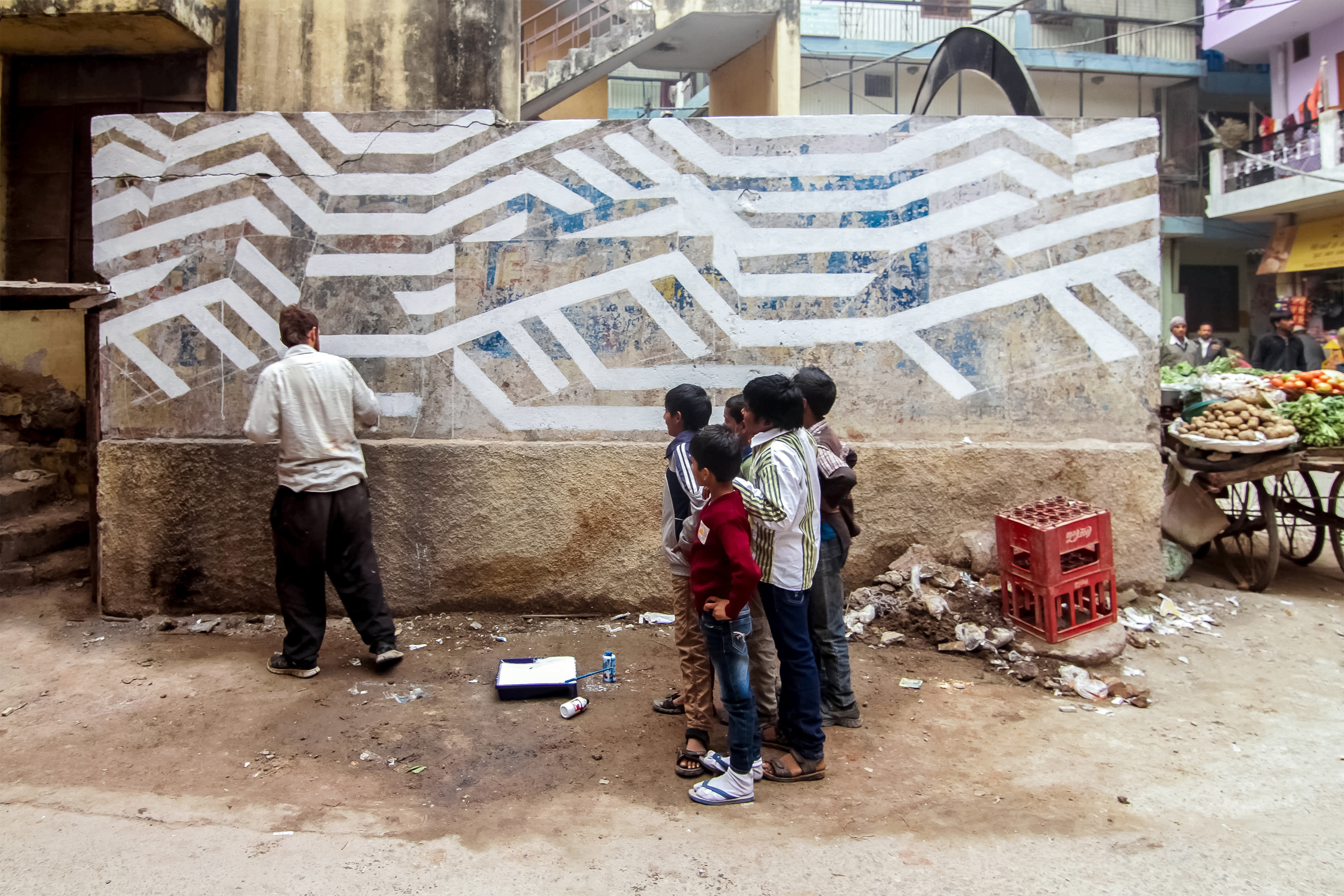
Some of the collaborations were incidental, such as the one that Tofu made with Andy Yen.
Some pieces took a life of their own when created on the walls, becoming part of the everyday life and spirit of the community. Each piece added a new dimension to the intricate web of community ties in the various parts of Shahpur Jat.
Amidst the general encouragement and excitement, there was a certain suspicion about the project. We live in a world that is overflowing with advertising - visual culture is almost always associated with some sort of branding or selling. Hence a lot of people couldn’t understand why these huge artworks were being painted on their walls for free. As would be the case in all subsequent versions of the St+art festival, the first walls always posed to be the most difficult because it is difficult to make people understand that the intent of the project is just purely to spread art through their community without any monetary intention.
The piece gave to the area another landmark- with some kids even referring to it as the “tattoo” painting. It came as a result of barter, where Yantr supported the mural with a scene from the epic Mahabharata for the local temple which was adjacent to this building.
Tona is a Hamburg based stencil artist. He is involved in street-art since 1999 (graffiti), stencils since 2002, silkscreen and linocut since 2008. He usually creates lively human figures.
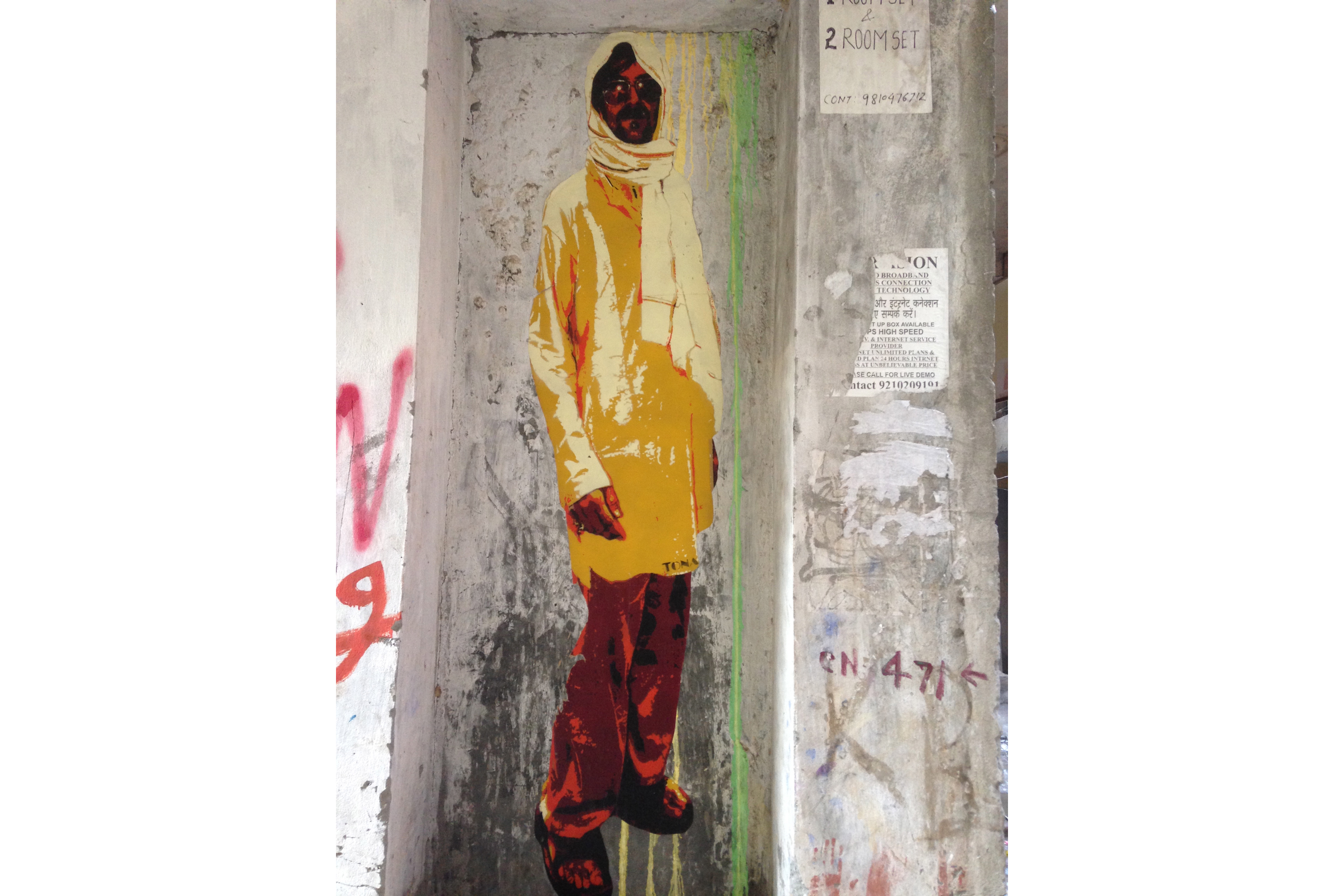
Italian artist Alina worked on the wall of a jewellery store with her distinct style of painting woman figures in public spaces. The people of the neighbourhood really took to her and extended her the famous Indian hospitality.
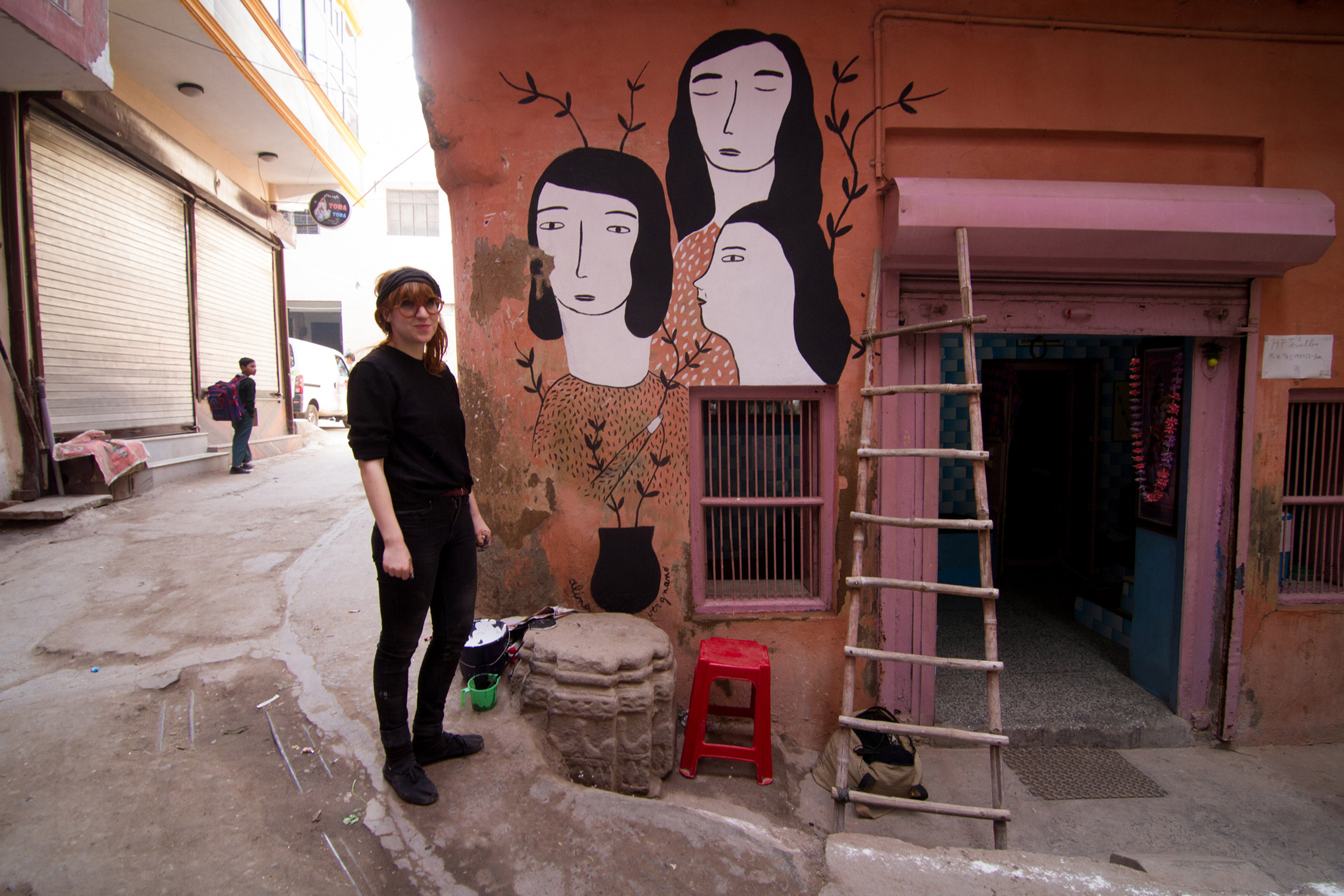
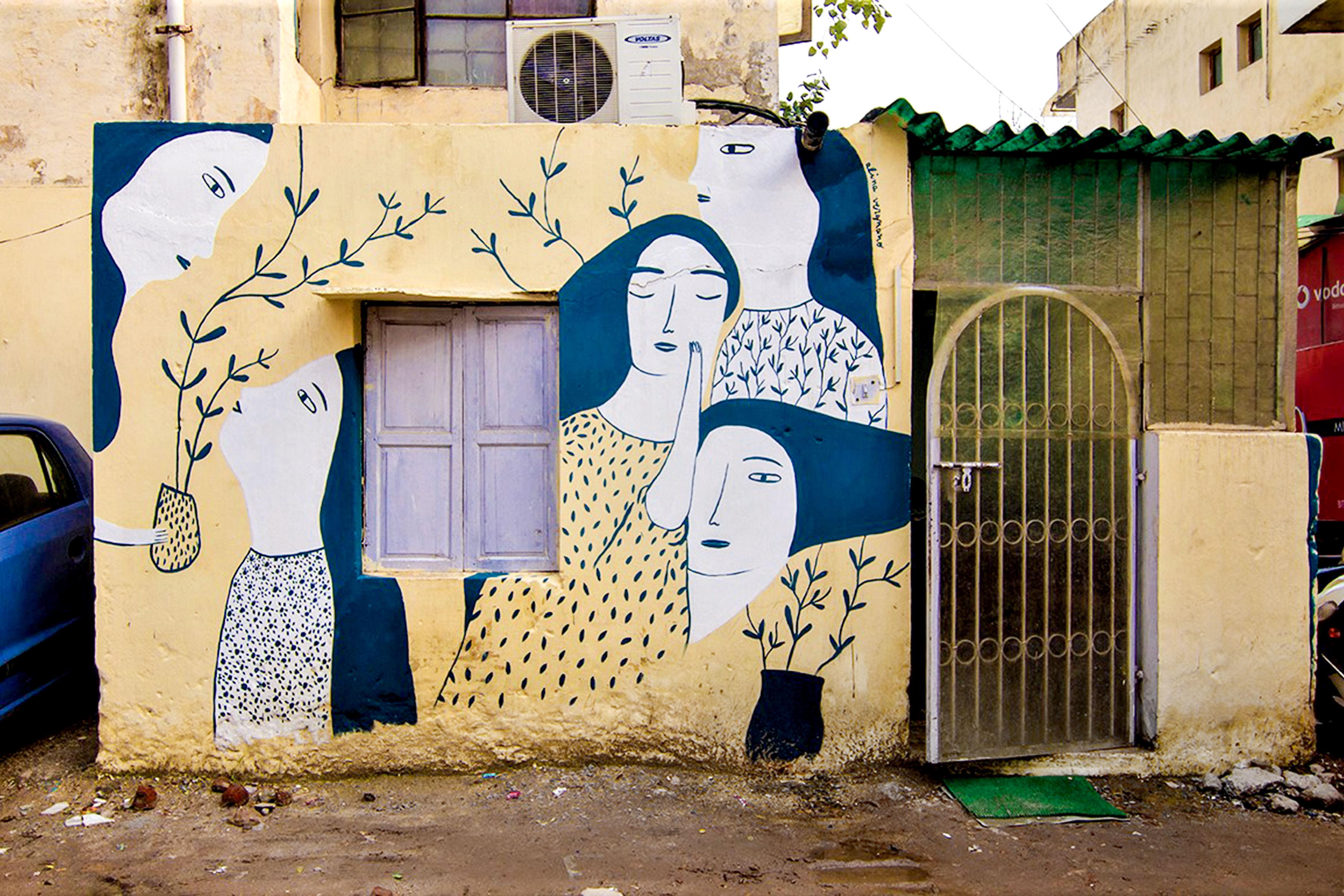
Mattia from Italy is known for his colourful, zoomorphic works steeped in a psychedelic, post-pop aesthetic. Producing works that are simultaneously playful and contemplative, he utilizes a complex balance of shapes to communicate in a dreamlike, highly symbolic fashion.
His piece had mixed interpretations within the community. Some locals thought of it as ice cream, others as intestines. There was also one particular gentleman who thought it was a portrait of Indian God Lord Ganesh who has an elephant-like trunk.
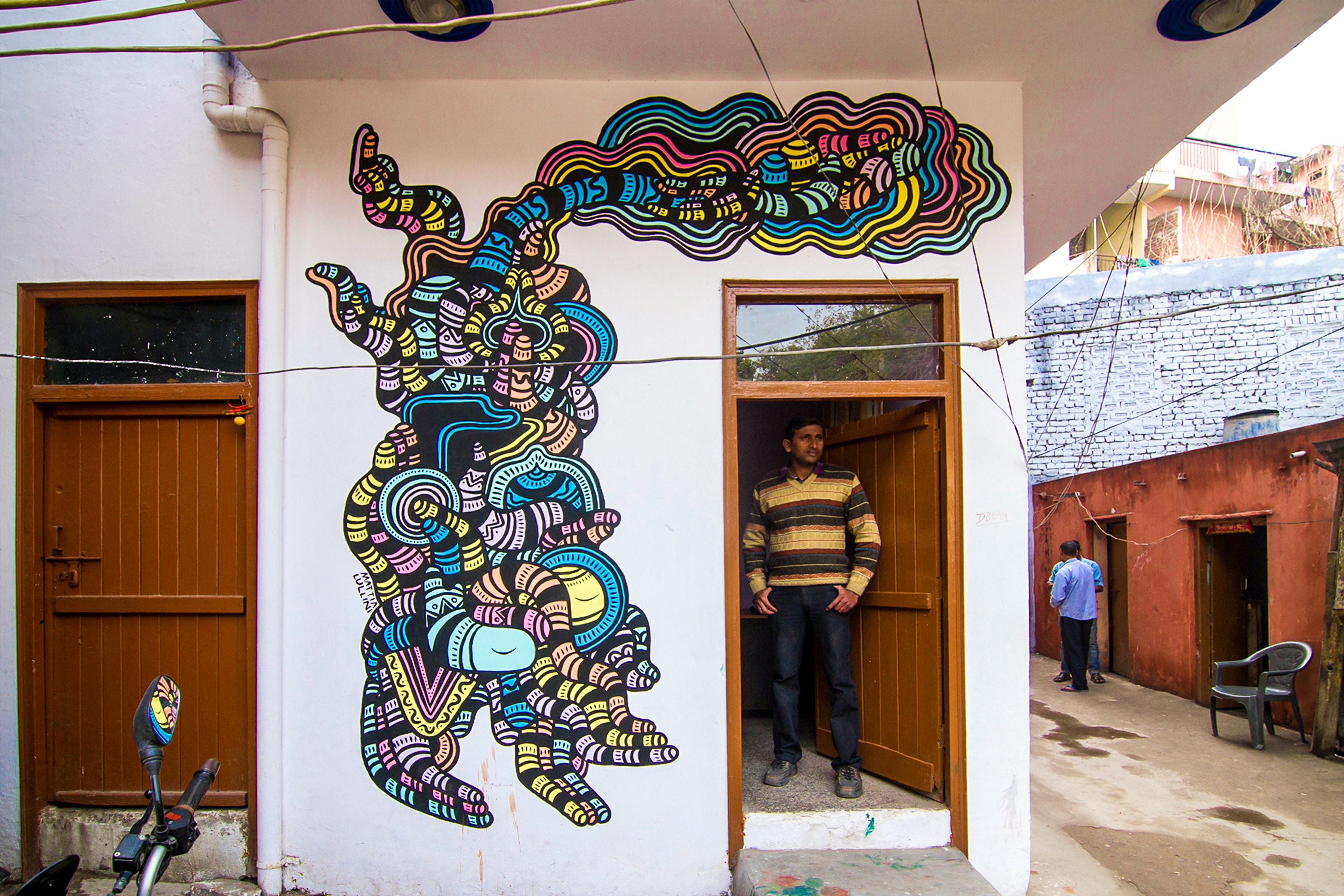
The aim of the festival was to also closely work with government bodies to enhance neglected public spaces in order to make them more attractive for use. These included public toilets and garbage collection centres.
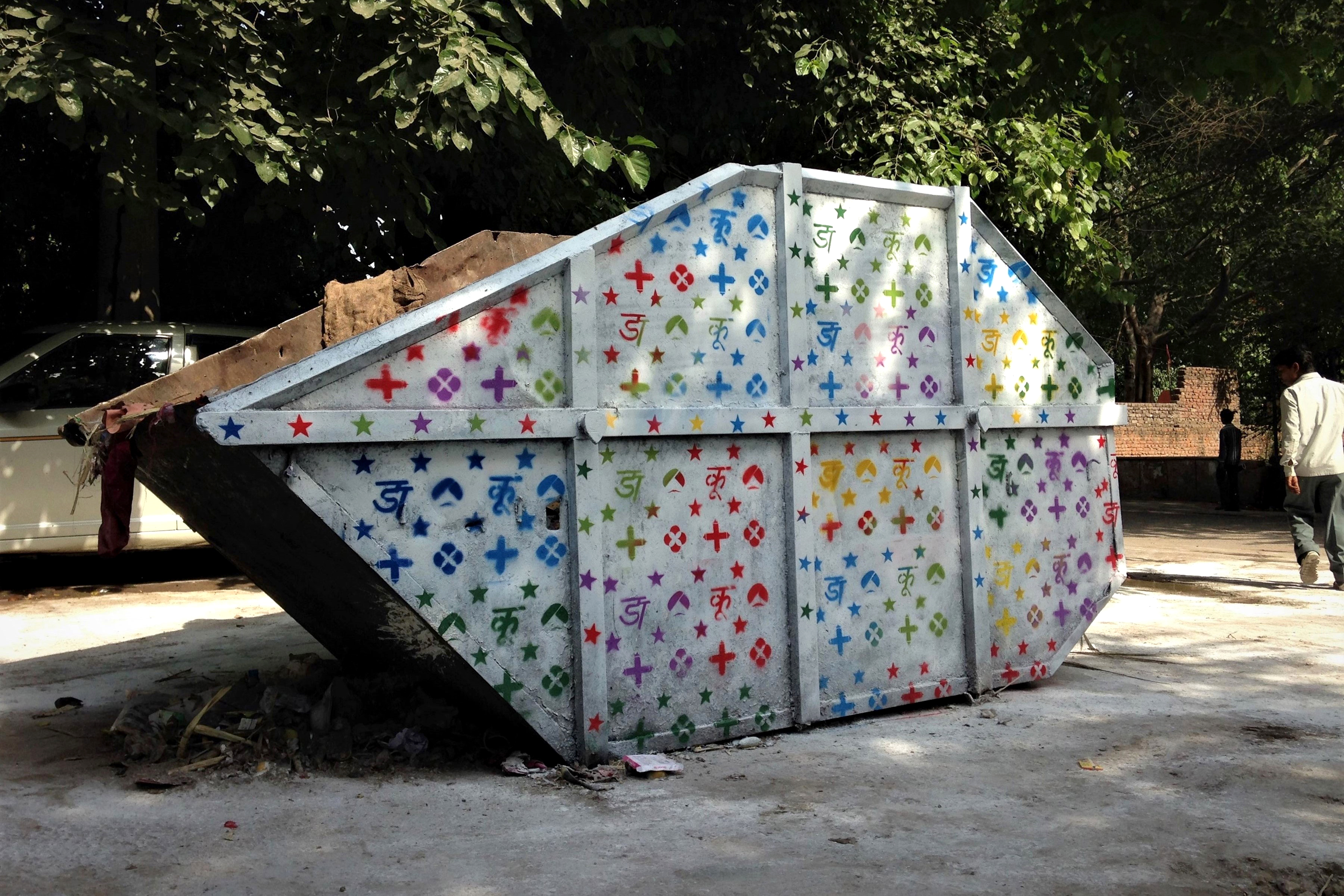

Some pieces came about as a result of interaction between the artists and the locals. One such piece happened with Bond- a graffiti writer who played one of the most instrumental roles in bringing together the graffiti scene in Delhi. While painting a smaller piece, he met a young kid whose uncle owned a school in Shahpur Jat,one thing led to another, and Bond ended up painting the alphabet in his style inside the school for the children to see and learn from.
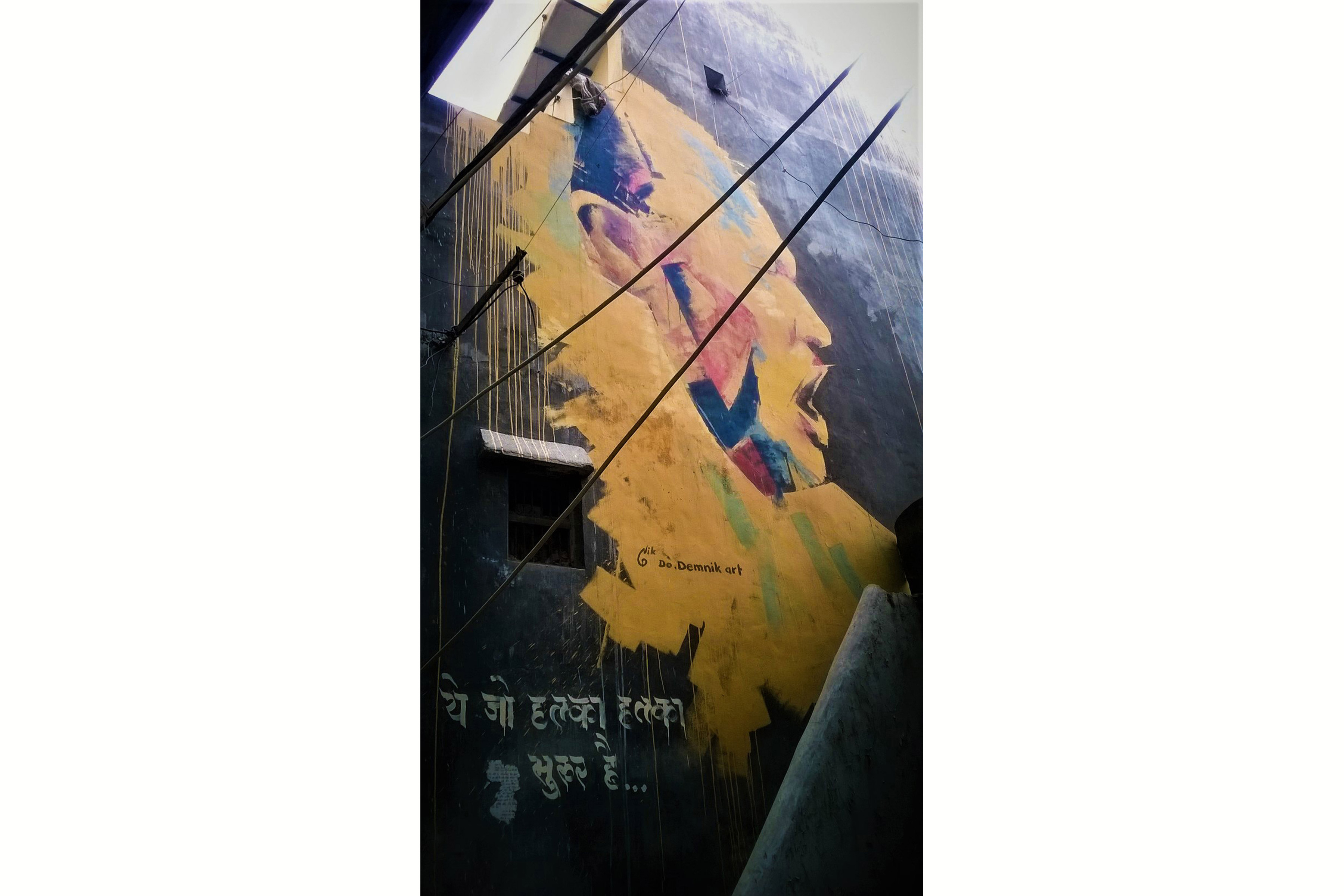
Not everyone will get it, but there is a message of empowering women - giving them respect and security. They should be free, you know.
- Sergio,artistTones (Taiwan) is a prolific graffiti writer of the traditional New York Style. His specificity is to make letters dance through connections, funk and flow while respecting the New York school codes.
Indian artist Amitabh Kumar has made a habit of challenging himself with every wall he does. In Shahpur Jat he decided to do something he had never done before - use colour in his piece. Looking at his wall from ground level which was on the 4th floor of a building which faces a rare open space within Shahpur Jat, he decided to paint a cloud for everyone to see.
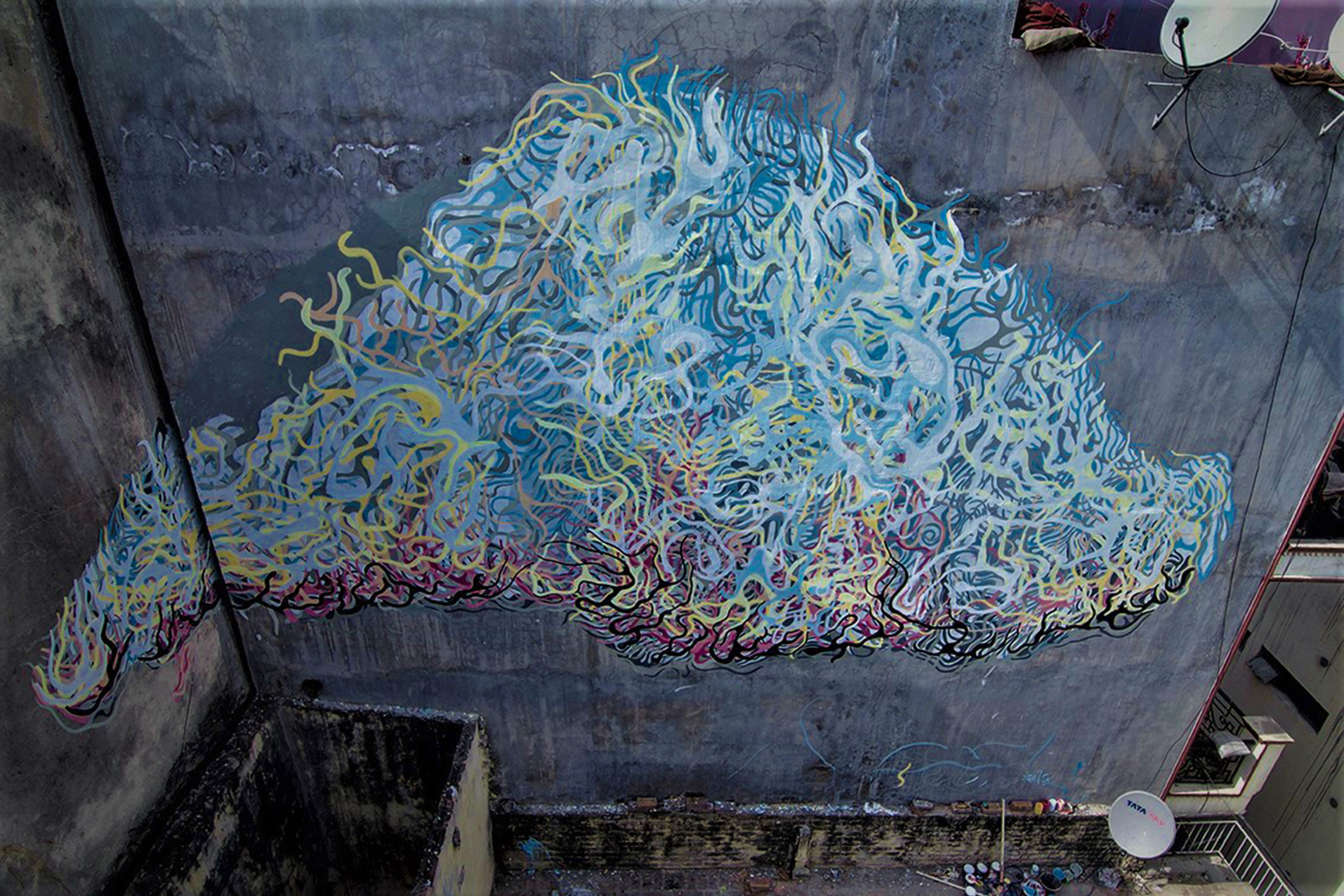
Other than the invited artists, several other artists joined the festival and started adding their works to Shahpur Jat spreading the work through the entire neighbourhood.
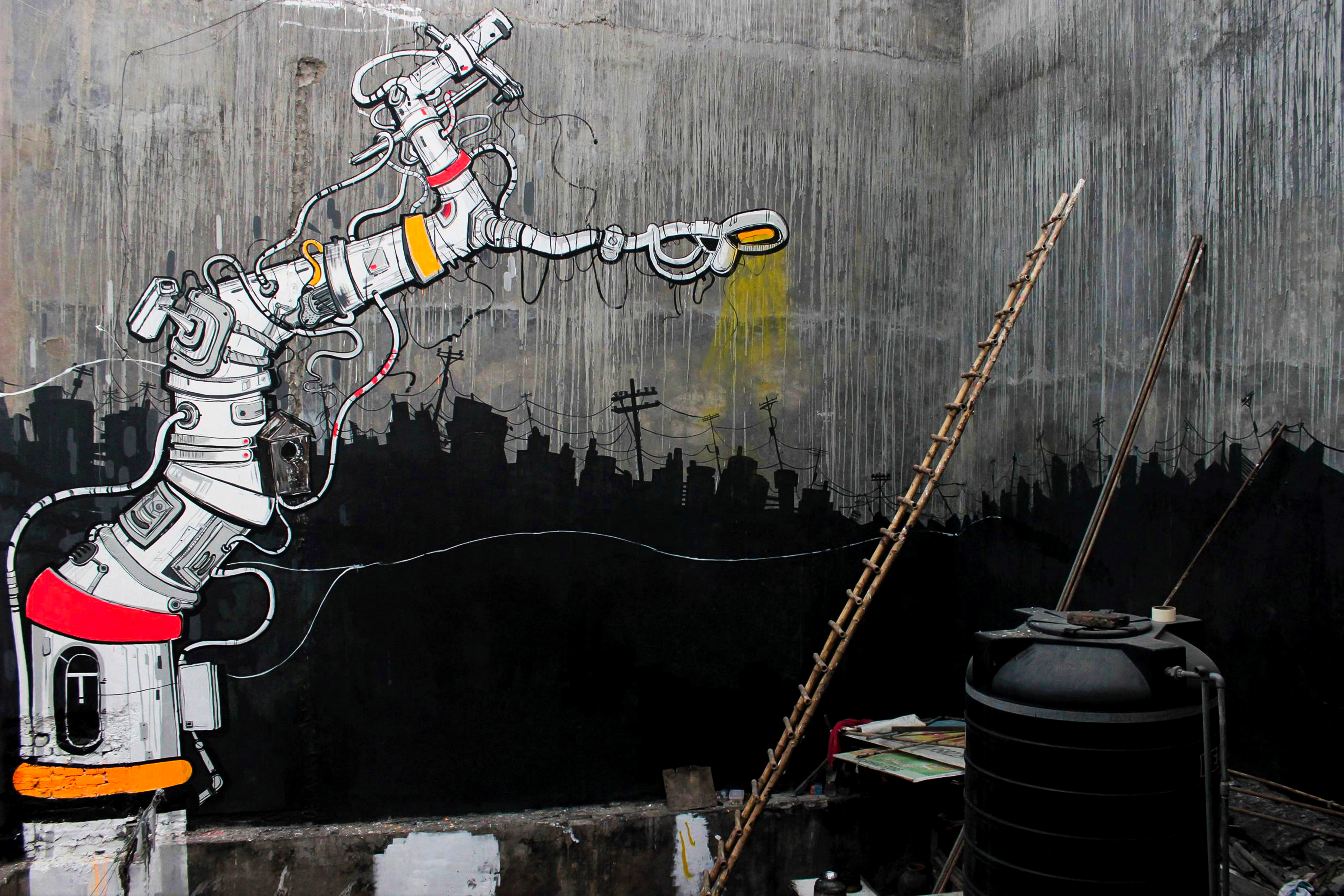
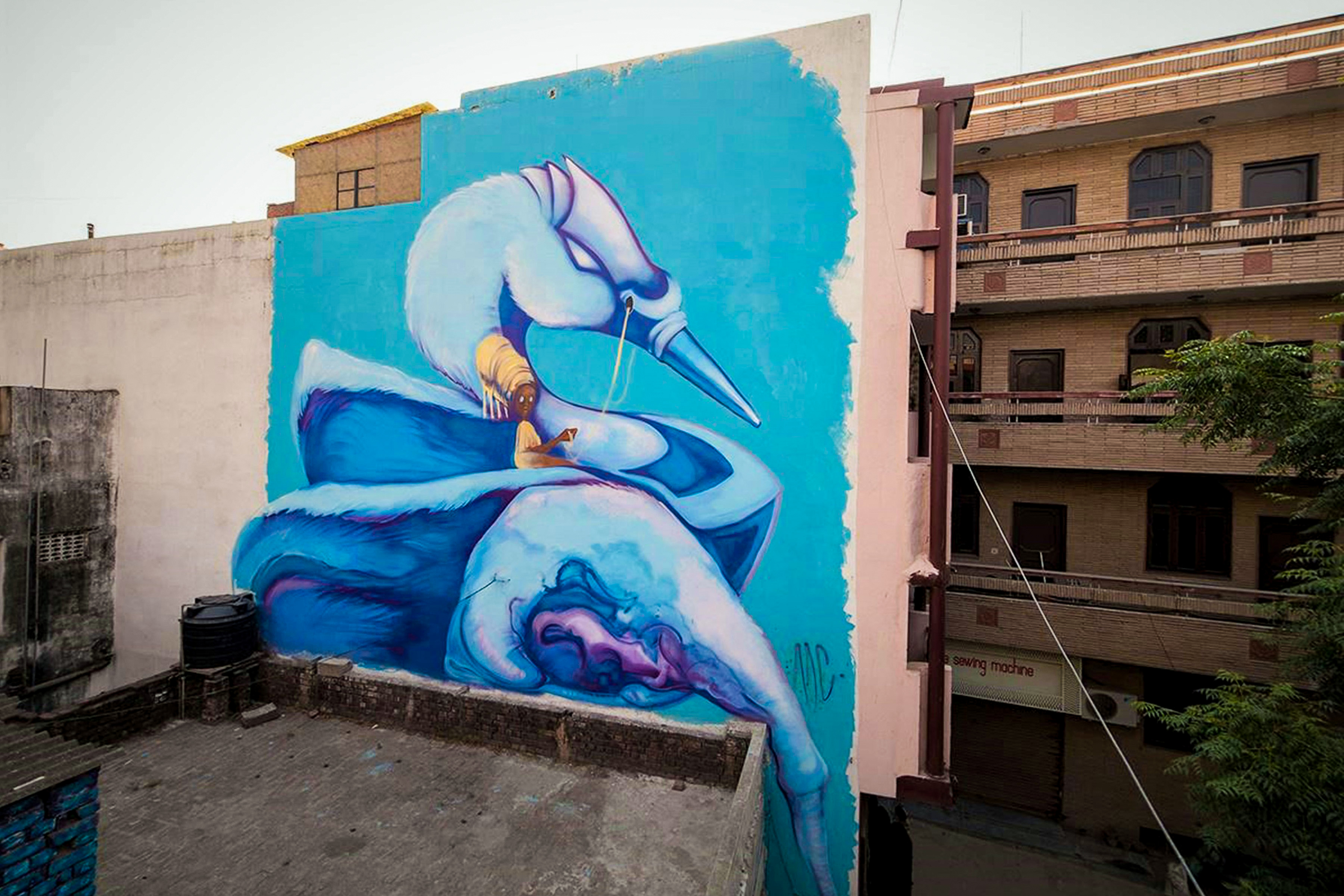
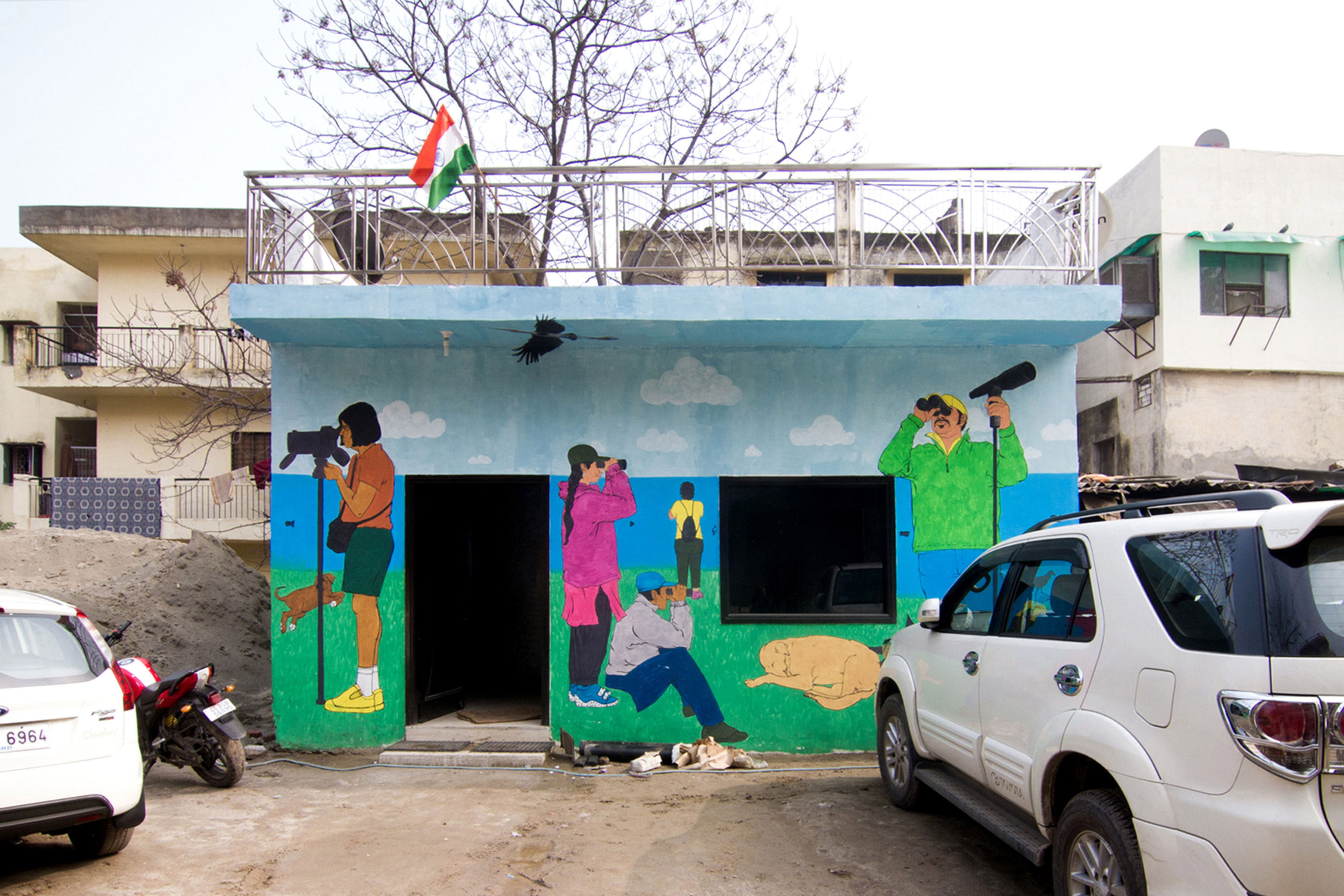
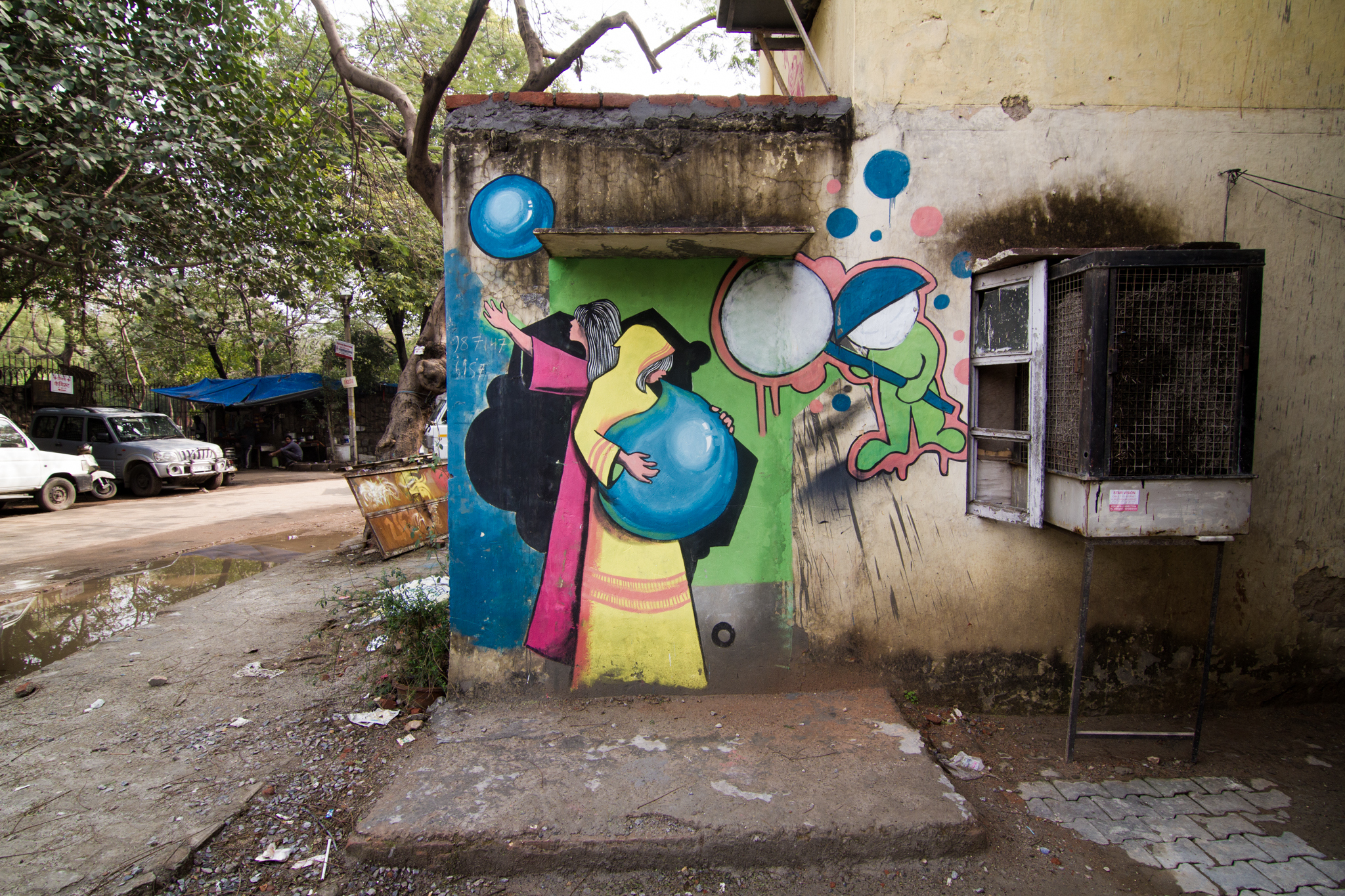
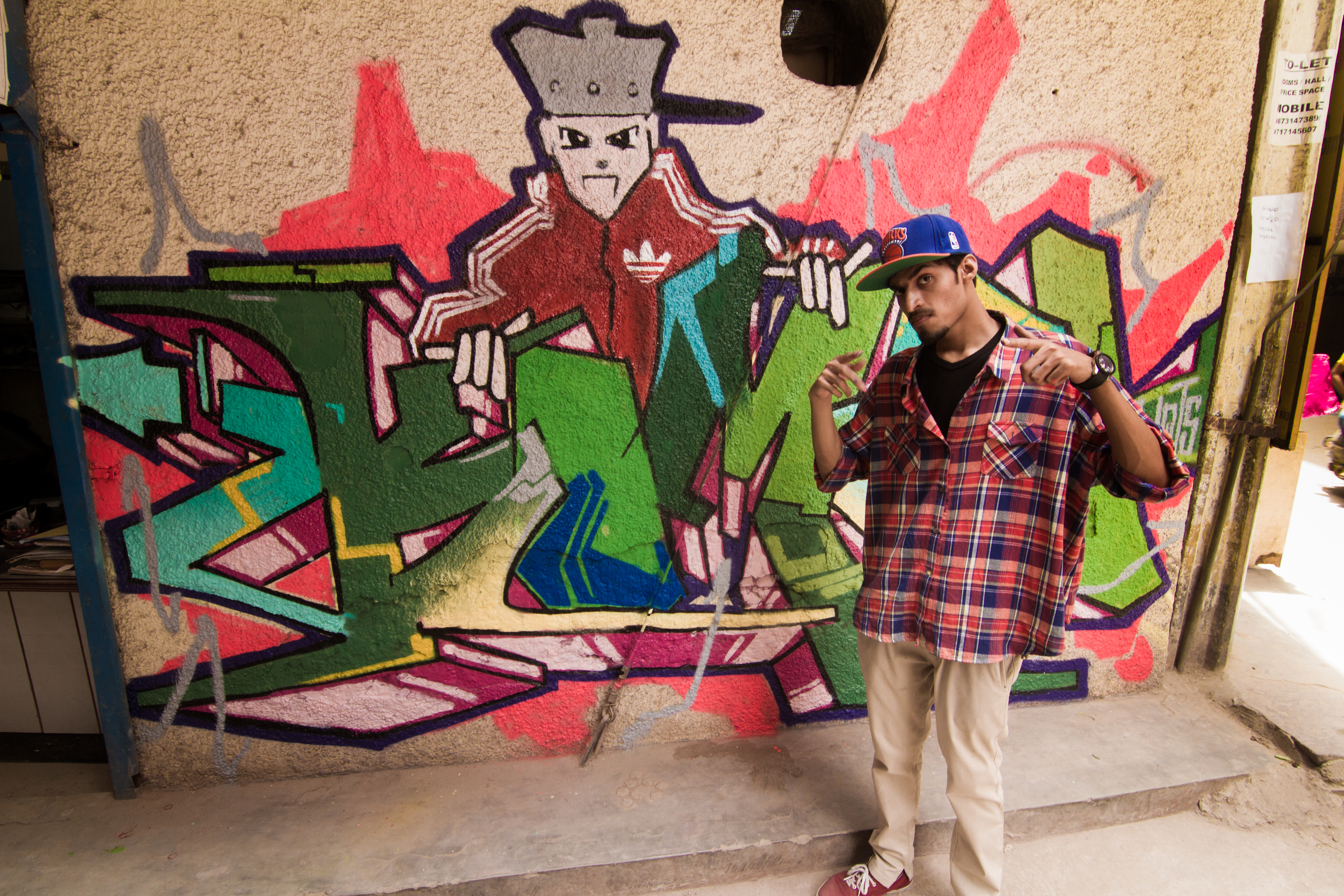
Since, 2014 a lot in Shahpur Jat has changed. With the overall development of the city, and stronger municipal control - buildings have been built and razed down. Hence, not all artworks exist now. But as is the case with street art, and life, nothing everything is permanent - some of it stays, while some of it lives on in our memories (and in photographs).
